Unlock Exponential Business Growth: Why Praxis is Revolutionizing Efficiency and Success
In a time where data overload and rapid market shifts can make or break a company, businesses need more than just tools—they need a strategic partner that thinks like a C-suite executive, works 24/7, and evolves with you. Enter Praxis by Jeffrey Michael Capital (JMC), the bespoke AI consulting tool that's not just software, but a virtual powerhouse designed to supercharge your operations, drive sustainable growth, and propel your enterprise to unprecedented heights. Whether you're a scrappy startup navigating early chaos, a mature firm in turnaround mode, or a scaling powerhouse hungry for more, Praxis delivers razor-sharp insights and actionable strategies tailored to your unique DNA.
If you're searching for an AI business consulting tool that amplifies efficiency, uncovers hidden opportunities, and aligns your team around shared goals, this is your game-changer. Backed by JMC's unwavering commitment to excellence, Praxis isn't generic, it's custom-built to transform your challenges into competitive edges. Let's dive into why partnering with Praxis and JMC will take your business to the next level.
Read MoreWhat Makes Praxis the Ultimate AI-Powered Business Intelligence Solution?
At its core, Praxis AI is a 100% custom-built business intelligence platform from Jeffrey Michael Capital, crafted without templates or off-the-shelf shortcuts. Unlike cookie-cutter AI tools that spit out broad advice, Praxis dives deep into your data, processes, and industry nuances to deliver inward-focused brilliance. It acts as an extension of your leadership team, a tireless master strategist that analyzes in real-time, predicts trends, and automates workflows to keep you ahead of the curve.
Imagine having a virtual consultant that never sleeps, constantly learning from your performance data to refine recommendations. That's Praxis: scalable from bootstrapped ventures to global enterprises, with seamless integration into your existing systems. No disruptions, just immediate value that evolves as your business does.
Key Features That Drive Real Results
Praxis stands out in the crowded AI for business growth arena with features engineered for precision and impact:- Real-Time, Laser-Sharp Insights: On-demand analysis of your specific objectives, uncovering patterns and trends that fuel bold decision-making.
- Predictive Analytics and Automation: Streamline processes, optimize workflows, and slash inefficiencies to trim costs and boost your bottom line.
- Bespoke Customization: Built around your operational DNA, ensuring every insight aligns with your vision! No one-size-fits-all nonsense.
- Seamless Scalability: Grows with you, from early-stage pivots to enterprise expansions, adapting to sectors like retail, e-commerce, finance, and beyond.
These aren't buzzwords; they're the building blocks of a data-driven edge that turns raw data into revenue rockets.
How Praxis Supercharges Efficiency and Fuels Explosive Growth
Efficiency isn't a luxury—it's survival. Praxis revolutionizes it by automating repetitive tasks, breaking down silos, and uniting your team around actionable strategies. Leaders using Praxis report faster risk management, sharper opportunity spotting, and workflows that hum like a well-oiled machine. In e-commerce, it masters inventory and pricing; in finance, it enhances cash flow forecasts and risk analysis. The result? A leaner operation that frees your team to innovate, not administrate.
But growth? That's where Praxis truly shines. By amplifying your internal strengths and providing AI-backed insights, it empowers startups to scale fast on a solid foundation, helps turnarounds reclaim momentum, and equips growth-stage companies to dominate markets. Proactive solutions keep you agile in fast-paced environments, while custom-tailored consulting aligns every move with your long-term vision. Exponential growth isn't a hope, it's the new normal with Praxis.
Tailored for Every Stage: Startups, Turnarounds, and Beyond
No matter where you are on your journey, Praxis meets you there:- Startups: Build a data-driven foundation to navigate chaos and scale without stumbles. Get the strategic edge to attract investors and outpace competitors.
- Turnarounds: Identify inefficiencies, optimize operations, and pivot with confidence. Turn red ink into green growth through targeted, real-time interventions.
- Growth-Stage Powerhouses: Maximize profits, streamline for expansion, and stay ahead of disruptions. Whether in retail mastering customer insights or investments honing forecasts, Praxis ensures you're always one step ahead.
In a world where 90% of startups fail due to operational pitfalls, Praxis is your unfair advantage a partner that turns "what if" into "watch this."
Our Team of Experts: Excellence That Elevates You
What sets JMC apart? It's not just the AI; it's the human ingenuity behind it. Our team of seasoned experts in AI business consulting dives deep into your model, structure, and data from day one, co-creating a platform that's as intuitive as it is intelligent. With decades of collective experience in strategy, tech, and industry transformation, we don't just deploy tools—we architect futures. From initial discovery to ongoing evolution, JMC's obsession with client-first solutions means your success is ours. We're not vendors; we're co-pilots committed to taking your business to the next level.
Partner with Jeffrey Michael Capital: Build the Future Today
The AI revolution is here, and Praxis by JMC is leading the charge. Don't let inefficiencies hold you back or missed opportunities slip away—embrace the bespoke strategic partner that's redefining business efficiency and growth. Whether you're launching, recovering, or accelerating, one thing's clear: the future belongs to those who act now.
Partner with Praxis-because tomorrow's change starts today.
Why Embracing Change Fuels Business Growth

In today's rapidly evolving business environment, change is not only inevitable, but also an essential driver of growth. When organizations view change as a threat, they risk paralysis. But when they embrace change as opportunity, they unlock innovation, resilience, and transformative progress. At Jeffrey Michael Capital (JMC), we specialize in guiding companies to shift their mindset and build strategic frameworks where change becomes a catalyst not a crisis. Read More
Change often carries the stigma of disruption, uncertainty, or loss. And while change does introduce new variables, it also offers fresh space for renewal: new processes, new technologies, new market dynamics, and new ways of thinking. Rather than resisting these shifts, businesses that proactively engage with them stand to gain an unmatched competitive edge. For example, when customer behavior changes, companies that adapt early can capture market share while others cling to legacy practices. Embracing change means being curious, agile, and ready to explore the upside.
A successful change strategy isn't just reactive, it's proactive. With the right framework, you prepare your organization to navigate both planned transformations and unexpected shifts. At Jeffrey Michael Capital, we apply a structured approach: assessing the drivers of change, communicating purposefully, engaging stakeholders, and measuring outcomes. We help ensure every change initiative aligns with your long-term vision and core business objectives, avoiding misalignment that can undermine progress.
Unforeseen disruptions, whether economic shocks, supply-chain breakdowns, or technological leaps demand not just resilience, but emergent strategy. That's where JMC's crisis management expertise comes in. We support companies navigating ambiguity, helping you move from reactive firefighting to strategic re-orientation. From restructuring teams to re-defining operating models, we ensure that disruption doesn't derail your success it redefines it.
Working with us involves three interconnected pillars. First, Vision Alignment & Strategic Planning, we collaborate to ensure your change initiatives are deeply rooted in your organization's mission and strategic goals. As JMC states: “We partner with entrepreneurs and business leaders to build thriving companies where culture drives performance, leadership inspires excellence, and teams achieve their full potential.” Second, Operational Execution & Streamlined Implementation strategy is only as good as execution. We help you translate vision into operational initiatives, create actionable roadmaps, align teams, allocate resources, and manage change processes. From our services portfolio: “Growth Strategy Development, Business Expansion Consulting… Investment Advisory.” Finally, Leadership Engagement & Culture Change succeeds only if your people embrace it. We work with senior leadership and front-line managers to build buy-in, clarity of communication, and a culture that thrives under transformation. At JMC, we view leadership and culture as integral to scalable growth.
Here are some practical mindset shifts to cultivate: move from “What if it breaks?” to “What if this enables new possibilities?”; from “We've always done it this way” to “How can we do it better?”; and from “We cannot change because it's risky” to “We must evolve because staying the same is riskier.” When organizations adopt this mindset, every change planned or unplanned becomes a doorway to innovation. Whether it's a new digital platform, a market pivot, or handling an external disruption, you'll be prepared.
With deep experience across growth strategy, business expansion, acquisition planning, and operational leadership, Jeffrey Michael Capital brings more than consulting they bring a transformation engine. “Your growth partner… Whether you're breaking through growth plateaus, navigating market transitions, or pursuing transformational opportunities, we bring the insight, experience, and commitment needed to turn vision into results.” Working with JMC means gaining a partner who not only designs change strategy but helps you implement, measure, and sustain it. When change is not just managed but mastered you gain a formidable advantage.
Do not fear change. Instead, invite it. Allow it to push you into new frontiers of growth, resilience, and innovation. With the right partner at your side, one experienced in both strategic consulting and crisis management you can transform change into your greatest asset. Let Jeffrey Michael Capital help you establish and implement a change strategy that turns disruption into opportunity. Because the companies that endure, scale, and lead are not those that resist change, they are those that harness it.
The People First Principle: Leadership That Builds to Last

Inspired by Jim Collins' "First Who, Then What"
In Good to Great, Jim Collins revealed one of the most enduring truths in business: greatness starts with people, not plans. Before setting direction, defining strategy, or chasing growth, truly exceptional leaders focus on who is on the team. They understand that success isn't built on a single idea or initiative, it's built on the shoulders of the right people working toward a shared purpose. This "people-first" principle is the foundation of leadership that builds to last.
Read MoreToo often, organizations jump straight into the "what" new products, markets, or technologies without first ensuring they have the right team in place. But when you start with "who," everything else becomes possible. The right people don't need to be tightly managed or constantly motivated, they are self-driven, value-aligned, and committed to excellence. With the right people, strategy evolves naturally. With the wrong people, even the best strategy crumbles under the weight of misalignment and lack of accountability.
The discipline of people first is what separates short-term success from long-term greatness. Collins' research showed that the most successful companies weren't led by single visionary geniuses, they were driven by cohesive teams built around shared values, trust, and humility. Leaders who embrace this approach don't see hiring as a task, they see it as a core strategic advantage. They look beyond résumés and titles to find individuals who embody integrity, adaptability, and ownership. Leadership becomes less about control and more about empowerment, creating an environment where the right people can thrive and drive collective success.
In today's world of rapid change where technology, AI, and globalization continuously reshape industries the "people-first" principle is more important than ever. The right people aren't just skilled, they're adaptable, curious, and capable of navigating uncertainty. Modern leaders who prioritize values alignment over credentials and collaboration over hierarchy build cultures that can flex, grow, and endure. They understand that while strategies shift and markets evolve, great people remain the most powerful constant.
Once the right team is in place, direction becomes clear. Purpose emerges organically when individuals share a sense of ownership and mission. Decision-making accelerates, culture strengthens, and execution improves. The "what" flows from the collective intelligence and commitment of a strong team. The right people don't just execute a vision, they create it.
The people-first principle isn't just a management idea it's a blueprint for sustainable leadership. It teaches us that lasting success begins not with the brilliance of one leader, but with the discipline of building the right team. When leaders invest in people first those who share their values, drive, and belief in the mission they create organizations that are built not just for today's challenges, but for tomorrow's opportunities.
Scalable Infrastructure Planning: How to Build a Business That Grows Without Breaking

Every business dreams of scaling, but few are truly prepared for it. Many companies focus on growth without first ensuring that their infrastructure can handle increased demand. Without scalable systems in place, expansion can actually harm performance—creating bottlenecks, inefficiencies, and breakdowns in processes that once worked perfectly at a smaller size. Scalable infrastructure, whether in technology, logistics, or human capital, is the foundation of sustainable business growth. It ensures that your organization can expand without losing control or compromising quality. Read More
At Jeffrey Michael Capital (JMC), we understand that scalability is not accidental, it's strategic. Our business scalability consulting solutions are designed to help companies implement systems that grow with them, not against them. This means upgrading financial controls, adopting cloud-based platforms, and developing strong talent pipelines that support consistent performance as your business evolves. By strengthening these core areas, JMC helps leaders transition from reactive growth to deliberate, data-driven expansion.
Financial scalability begins with control and visibility. As businesses grow, so do their financial complexities. JMC helps organizations implement advanced financial systems that enable real-time insights, transparent reporting, and better decision-making. On the technology side, cloud infrastructure is the cornerstone of modern scalability—it supports flexible operations, enhances data security, and empowers remote teams to collaborate seamlessly. But no system is complete without the right people behind it. That's why JMC emphasizes the development of scalable HR systems and leadership pipelines to ensure your workforce grows as efficiently as your business.
When your infrastructure is built to scale, growth stops being a risk and becomes your greatest competitive advantage. Companies with scalable systems can pivot faster, adapt to new markets, and maintain profitability through every stage of expansion. With the right foundation in place, growth doesn't overwhelm—it accelerates. At JMC, our mission is to help leaders build strong, flexible infrastructures that transform ambitious goals into sustainable realities.
If your organization is planning to expand—or if growth has started to strain your existing systems, now is the time to assess your scalability strategy. Partner with Jeffrey Michael Capital and create the foundation your future demands. Think big, scale smart, and grow with Jeffrey Michael Capital.
The Heart of "Let Them Participate": From Wisdom to Team Success

Early in my career, a friend and mentor shared a piece of wisdom from his father that forever changed how I lead: "Let them participate." Those three simple words hit me like a thunderbolt as a young manager, reshaping my approach to building and managing teams. Over the past 20 years, this philosophy has become the cornerstone of my leadership style, proving that empowering others to contribute their ideas and talents creates trust, sparks innovation, and drives lasting success. By making your team feel like the smartest people in the room, rather than trying to claim that title for yourself, you unlock their potential and build a culture where everyone thrives. Here's how the "let them participate" mindset transformed my leadership and how you can embrace it too.
Read MoreAt its core, "let them participate" is about stepping back to let your team shine. Early on, I was tempted to assert my authority, thinking leadership meant having all the answers. But my mentor's advice showed me that true strength lies in inclusion. By inviting team members to share their ideas, you signal trust and respect, creating an environment where people feel safe to speak up. Picture a meeting where you ask thoughtful questions and listen intently, celebrating every contribution, no matter how small. This approach taps into the collective intelligence of the group, leading to better decisions and a stronger sense of unity. Over the years, I've seen how this fosters a culture where creativity and collaboration flourish.
Participation breeds ownership, and ownership fuels motivation. When team members feel valued as contributors, they invest their full energy in their work. I recall a time early in my career when I encouraged a quiet junior team member to lead a brainstorming session. The result? Not only did they rise to the occasion, but their fresh perspective sparked a solution we hadn't considered. That moment taught me that making others feel like the smartest person in the room builds their confidence and uncovers hidden potential. This inclusive culture drives engagement, with team members taking initiative and tackling challenges proactively, knowing their voices matter.
How can you put "let them participate" into practice? First, ask open-ended, inclusive questions like "What's your perspective on this?" or "How would you solve this?" to draw out diverse ideas. Second, listen actively—resist the urge to interrupt or redirect the conversation to showcase your own expertise. Instead, acknowledge contributions with specific praise, like "That's a brilliant insight I hadn't thought of." Third, give credit generously, whether in team meetings or through public recognition on platforms like LinkedIn, to reinforce the value of every voice. Finally, delegate meaningful responsibilities, letting others lead projects or tasks to showcase their strengths. These steps, honed over my 20 years of leadership, create a space where everyone feels empowered.
The impact of this approach extends beyond the workplace. When team members feel valued, they become natural ambassadors for your organization, sharing their positive experiences in meetings and interactions within the company or even their personal lives. These authentic stories, whether about a collaborative win or a team member's growth, resonate deeply, attracting talent and partners who value inclusive cultures. In my experience, highlighting team contributions has amplified our reputation as a place where people thrive, creating a ripple effect of trust and opportunity. By letting others participate, you build a legacy of empowerment that draws success to you.
"Let them participate" isn't about diminishing your role as a leader—it's about amplifying the potential of your team. By making others feel like the smartest people in the room, you foster trust, ignite innovation, and create a culture that drives results. Those three words from my mentor's father have guided me for over two decades, proving that leadership is about creating space for others to shine.
Strength in Vulnerability: How Authentic Leadership Stories Build Trust and Drive Success

Leadership often carries the expectation of projecting strength, confidence, and control. Yet, the most impactful leaders understand that true strength lies in vulnerability—sharing their struggles to build trust and inspire their teams. As the saying goes, "Your story is their inspiration." By embracing authenticity, leaders forge deeper connections, foster resilience, and drive success. This blog explores how vulnerability in leadership builds trust and offers practical ways to share your story effectively. Read More
Vulnerability means showing your human side—acknowledging challenges, mistakes, or uncertainties. When leaders open up about their struggles, they create an environment where teams feel safe to be honest and take risks. This openness breaks down barriers, making leaders relatable and encouraging others to bring their best selves to work. A leader who shares a personal challenge, like navigating a tough business decision or overcoming self-doubt, shows that setbacks are part of growth, inspiring teams to push through their own obstacles with confidence.
The power of vulnerability lies in its ability to build trust. When a leader admits to a misstep or shares a lesson learned, it signals authenticity, which strengthens team loyalty. For example, sharing how a difficult moment shaped their approach can motivate employees to embrace challenges with resilience. This trust fosters collaboration, sparks creativity, and creates a culture where people feel valued, leading to stronger team performance and lasting success.
How can leaders practice vulnerability without losing credibility? First, share stories with purpose—choose experiences that carry a clear lesson, like how a failure led to a smarter strategy. Second, foster open dialogue through team check-ins or one-on-ones, inviting others to share their experiences. Third, pair vulnerability with action—after discussing a struggle, highlight the steps you took to overcome it, reinforcing your competence. A leader's own journey, marked by challenges and growth, can serve as a powerful example to inspire others.
Vulnerability also amplifies a leader's influence beyond the workplace. Authentic lessons about personal growth resonate deeply, creating a ripple effect that strengthens your brand and draws opportunities. By being open, leaders position themselves and their organizations as genuine and approachable, setting the stage for long-term success.
Vulnerability is a leadership superpower. By sharing struggles, leaders build trust, inspire resilience, and create cultures where people thrive. Your story is a catalyst for inspiration. Embrace it, share it, and let it fuel trust and success.
How will you use vulnerability to lead going forward?
The Pillars of a People-and-Ideas-Driven Culture

In the race for business success, leaders often fixate on metrics like revenue, market share, or operational efficiency, but chasing these outcomes can be like chasing a mirage: exhausting and ultimately unfulfilling. The real driver of sustained success isn't a relentless pursuit of results; it's a strong organizational culture built on people and ideas. As the saying goes, “Don't chase success, build the culture that attracts it.” Culture is the invisible force that shapes how teams think, act, and innovate. A 2023 study by McKinsey found that companies with strong, adaptive cultures outperformed their peers by 33% in revenue growth and 27% in employee retention because a people-centric culture fuels engagement, creativity, and resilience—qualities that translate into consistent results. When leaders prioritize people and ideas over short-term wins, they create an environment where employees feel valued and empowered, not through superficial perks like ping-pong tables or free snacks, but through fostering trust, psychological safety, and a shared sense of purpose. This kind of culture becomes a magnet for talent, innovation, and, ultimately, success. Read More
To build a culture that attracts success, leaders must focus on empowering people, embracing diverse ideas, and aligning both toward a shared vision. Great cultures start with people, and leaders who invest in their teams growth and well-being create a foundation for sustained performance. This involves actively listening by creating spaces for employees to share feedback without fear through regular one-on-ones, anonymous surveys, or open forums to uncover insights that shape better decisions. It also means developing talent by offering mentorship, upskilling programs, and clear career paths, as LinkedIns 2025 Workplace Learning Report highlights that 89% of employees stay longer at companies that invest in their professional growth. Recognizing contributions, whether through public shout-outs on platforms like LinkedIn or internal channels, boosts morale and reinforces a culture of appreciation. When people feel seen and supported, they bring their best selves to work, driving innovation and results without needing to be micromanaged.
A culture that values ideas, especially from varied perspectives, unlocks creativity and problem-solving. Leaders can foster this by encouraging open dialogue through forums where all ideas are welcome, regardless of hierarchy, like Googles “20% time” policy, which led to innovations such as Gmail. Leveraging diversity is key, as a 2024 BCG study found that companies with diverse leadership generated 19% more revenue from innovation by actively seeking input from underrepresented groups. Building a culture where failure is a learning opportunity, by encouraging rapid prototyping and feedback loops, allows teams to iterate fearlessly, keeping organizations agile and competitive in adapting to market shifts. A strong culture also ties individual contributions to a bigger purpose by communicating a clear mission, such as Patagonias mission to “save our home planet,” which inspires employees and customers alike. Setting collaborative goals using frameworks like OKRs (Objectives and Key Results) aligns teams around shared priorities while allowing room for creative input, and leaders must model values through authentic, transparent decision-making or vulnerability to build trust and set the tone.
When culture is built on people and ideas, results follow naturally. Engaged employees are 23% more productive, according to Gallups 2025 workplace study, and a people-first culture reduces turnover while boosting output. Idea-driven teams adapt quickly to challenges, as seen in companies like Atlassian, which use cross-functional “ShipIt Days” to spark rapid innovation, leading to new product features. A culture rooted in purpose also attracts customers and talent, with LinkedIn posts from companies like Salesforce, which emphasize employee empowerment, consistently seeing 50% higher engagement rates than purely sales-focused content. To build this culture, leaders can audit their current culture using employee surveys or 360-degree feedback to assess trust, inclusion, and innovation levels; invest in people by allocating budget for training, wellness programs, or team-building initiatives; amplify voices by creating platforms for idea-sharing like internal hackathons or LinkedIn-style discussion groups; celebrate progress by sharing success stories internally and on LinkedIn to reinforce cultural values; and stay consistent, as culture-building is a long game that requires regularly revisiting and refining approaches based on feedback and results.
A culture built on people and ideas creates a ripple effect beyond internal success. Employees become brand ambassadors, sharing their positive experiences on platforms like LinkedIn, which attracts top talent and clients. Partners and customers gravitate toward organizations with clear values and innovative energy, making this culture a competitive advantage thats hard to replicate. Success isnt a finish line; its a byproduct of a thriving culture. By prioritizing people and ideas, leaders can create an environment where innovation, loyalty, and results flourish organically. Stop chasing fleeting metrics and build a culture that attracts success—and watch it grow.
Business Expansion Strategies: How to Scale Without Losing Control
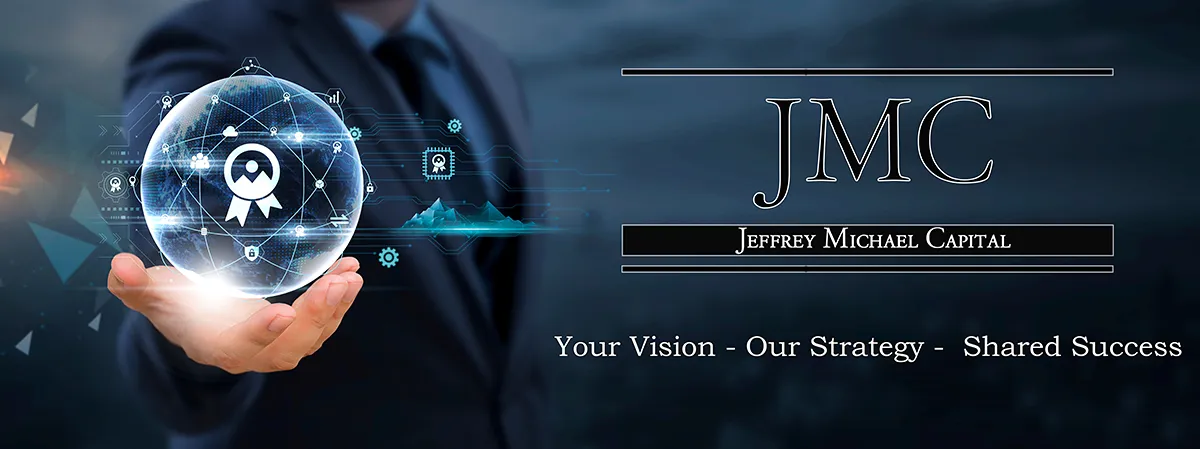
Scaling a business is the ultimate goal for entrepreneurs, executives, and founders who want to take their companies to the next level. But with growth comes risk—and without the right business expansion strategies, scaling can lead to inefficiency, wasted resources, and even loss of control. The key is learning how to expand strategically, sustainably, and profitably while maintaining visibility and control across your operations. Read More
Every entrepreneur dreams of building a company that grows beyond its initial market. But rapid growth without a plan often creates chaos—cash flow shortages, overextended teams, and poor customer experiences. By implementing effective scaling strategies, you ensure your business grows in a way that aligns with long-term goals, strengthens operations, and maximizes profitability. Strategic growth is not about getting bigger fast—it's about scaling smarter.
Before thinking about expansion, your company needs a strong foundation. Without solid financial management, operational processes, and leadership alignment, scaling a business will only magnify existing weaknesses. To create a strong base, streamline business operations with clear systems and processes, establish measurable KPIs and performance metrics, strengthen your leadership team with experienced managers who can handle growth, and ensure financial planning and forecasting are in place. A solid foundation allows you to scale without sacrificing quality, service, or culture.
The right business expansion strategies also leverage technology to reduce complexity and improve efficiency. Invest in cloud-based ERP systems for accounting, inventory, and operations, implement CRM software to streamline sales and customer service, automate repetitive tasks to free up resources, and use data analytics tools to track performance and identify growth opportunities. Technology is the backbone of sustainable business growth and allows you to scale without losing oversight.
Another critical piece of scaling a business is focusing on market expansion and diversification. Consider entering new geographic markets (domestic or international), adding complementary products or services to your portfolio, targeting new customer segments through repositioning or rebranding, or partnering with distributors, affiliates, and strategic alliances. Smart market expansion strategies reduce risk by diversifying your revenue streams while maximizing growth potential.
Of course, people drive growth. Without the right team and culture, even the best strategies fail. That's why you need to hire strategically by looking for adaptable, growth-minded talent, develop a strong onboarding and training program, empower managers with tools to lead effectively, and preserve company culture by clearly defining values and mission. Scaling a business without losing control requires building a team that grows with the organization and protects its identity.
One of the biggest challenges in scaling a business is managing cash flow. Growth often requires upfront investment before revenue catches up. To stay ahead, maintain accurate financial forecasts, secure reliable funding sources such as loans, investors, or private equity, keep expenses under control with smart budgeting, and build financial reserves to weather slowdowns. Without financial discipline, growth can quickly spiral into crisis.
Rapid expansion can also come at the cost of customer satisfaction, which is why maintaining a strong customer experience at scale is crucial. Standardize customer service processes, use customer feedback tools to monitor satisfaction, train staff to deliver consistent brand experiences, and invest in loyalty programs to retain existing customers. A customer-first approach ensures that scaling strengthens your brand reputation instead of damaging it.
Scaling a business is not a “set it and forget it” process. You need to regularly assess performance against your growth plan. Track progress with real-time dashboards, review quarterly and annual goals, adapt strategies when market conditions change, and learn from data-driven insights, not assumptions. Flexibility ensures you stay in control while pursuing growth.
The most successful companies don't just grow—they grow with purpose. The right business expansion strategies allow you to scale a business without losing control of finances, operations, or culture. By building a strong foundation, investing in scalable systems, expanding into new markets, and prioritizing people and processes, you set your company up for long-term success. Scaling doesn't have to mean chaos—it can mean clarity, structure, and unstoppable growth.
Revenue Diversification: 7 Proven Ways to Strengthen Business Resilience
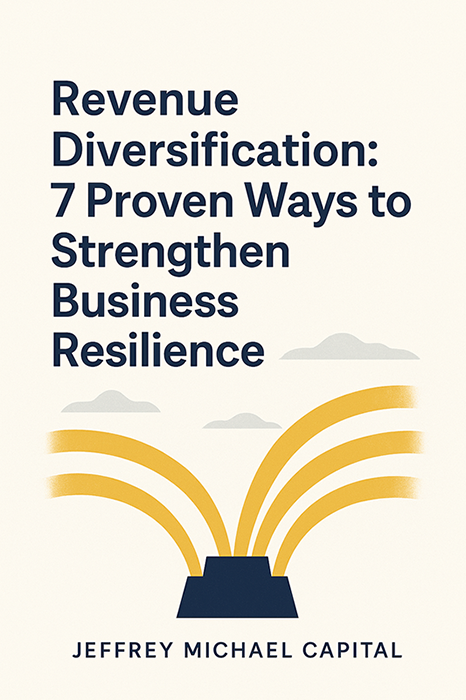
In today's unpredictable market, businesses that rely on a single income source put themselves at significant risk. Shifts in consumer behavior, disruptions in the supply chain, or downturns in specific industries can jeopardize even the strongest companies if they lack diversified revenue. That's why revenue diversification is so critical. By developing multiple income channels, companies not only shield themselves from volatility but also position for scalable, sustainable growth. At Jeffrey Michael Capital, we specialize in helping organizations design tailored diversification strategies that balance innovation with profitability. Here are seven proven ways to diversify your revenue streams and future-proof your business. Read More
In today's unpredictable market, businesses that rely on a single income source put themselves at significant risk. Shifts in consumer behavior, disruptions in the supply chain, or downturns in specific industries can jeopardize even the strongest companies if they lack diversified revenue. That's why revenue diversification is so critical. By developing multiple income channels, companies not only shield themselves from volatility but also position for scalable, sustainable growth. At Jeffrey Michael Capital, we specialize in helping organizations design tailored diversification strategies that balance innovation with profitability. Here are seven proven ways to diversify your revenue streams and future-proof your business.
One of the most effective ways to diversify is by expanding your product or service lines. Businesses can grow by introducing complementary offerings, such as a software provider adding training packages or a retail store launching a subscription service. The benefit is clear—expanding your portfolio increases customer lifetime value (CLV) and strengthens loyalty. However, there's a risk in diluting your brand if the expansion strays too far from your core expertise. Our consultants help businesses evaluate which product or service extensions align with both customer needs and long-term profitability.
Diversification can also be achieved by entering different customer segments. Serving a new demographic, targeting another industry, or exploring a new geographic market spreads risk across a wider base. For example, a logistics company that primarily works with manufacturers could branch into servicing e-commerce retailers. This move reduces dependency on a single sector and increases resilience. Through our market entry consulting services, Jeffrey Michael Capital conducts demographic analysis, market trend evaluations, and competitive assessments to ensure that your expansion into fresh segments is not only precise but profitable.
Another effective approach is adopting a subscription or membership model. Recurring revenue creates predictable cash flow and strengthens customer loyalty, whether through software subscriptions, ongoing service contracts, or exclusive VIP memberships. This approach is best suited for businesses with consumable products or services that customers repeatedly require. It ensures long-term stability and fosters stronger customer relationships. Strategic partnerships and joint ventures also offer a valuable path to diversification. Partnering with another organization provides access to new customers and markets without shouldering the entire risk of expansion alone. A fitness brand, for instance, could partner with a nutrition company, leveraging shared audiences and complementary strengths. At Jeffrey Michael Capital, we guide businesses in designing partnership strategies that align with growth objectives and avoid common pitfalls, ensuring mutual benefit and long-term viability.
Digital channels and e-commerce platforms have become essential for diversification in today's economy. Businesses that depend heavily on in-person sales or traditional distribution can open entirely new streams of revenue through online marketplaces or direct-to-consumer platforms. These channels allow companies to tap into global markets and expand reach dramatically. Of course, success requires upfront investment in technology, digital infrastructure, and marketing, but the payoff in reach and resilience is unmatched.
For businesses with proprietary assets, creating licensing or intellectual property income can be a powerful diversification strategy. Companies that own patents, specialized technology, or unique content can license these assets to generate passive or semi-passive income. For example, a manufacturer might license patented technology to other producers, creating a steady revenue stream without significant additional overhead. Finally, pursuing strategic acquisitions can accelerate diversification faster than organic growth. Acquiring another company provides instant access to new products, customer bases, and geographic regions. This strategy is not without challenges, as it requires careful due diligence and thoughtful integration planning to succeed. At Jeffrey Michael Capital, our acquisition strategy consulting ensures businesses identify the right targets, structure deals effectively, and integrate operations seamlessly for long-term success.
Revenue diversification is not just about adding more income streams—it is about building resilience, scalability, and long-term sustainability. Companies that diversify are better prepared to adapt to market changes, capture new opportunities, and outperform competitors. At Jeffrey Michael Capital, we help organizations navigate this journey by uncovering hidden opportunities, designing profitable strategies, and executing plans that deliver measurable results.
If you are ready to diversify your revenue and strengthen your business resilience, contact Jeffrey Michael Capital today to explore our Revenue Diversification Consulting services. With the right strategy, your business can build a future of sustainable growth and enduring success.
Fighting for Business Success: How Jeffrey Michael Capital helps companies persevere, adapt, and win through every challenge.

In the heart of Detroit hangs a fist that is larger than life. Cast in bronze and suspended in mid-air, the Joe Louis Fist is one of the city's most iconic landmarks. It is bold, unflinching, and uncompromising. A tribute not only to one of the greatest boxers of all time, but also to the spirit of a city that has fought, endured, and persevered through hardship after hardship. The monument is more than art. It's a reminder of grit, of strength, and of what it takes to keep moving forward when the odds are stacked against you. Joe Louis, the “Brown Bomber,” wasn't just a world champion fighter, he was a symbol of hope. Read More
At a time when America was divided and weary, his victories represented more than personal triumph; they carried the weight of resilience and unity. At Jeffrey Michael Capital, we see the fist as more than history. We see it as a lesson for business today. Every company faces its own fights: economic downturns, market disruptions, fierce competitors, or internal challenges that test leadership and endurance.
Business is not a gentle journey—it's a series of rounds in a ring. And just like Joe Louis, companies can't succeed with power alone. They need strategy, discipline, and the courage to keep swinging. That's where JMC comes in. We are the team in your corner. We help you prepare, endure, and win—no matter how tough the fight gets.
Joe Louis's greatness wasn't defined by his fists alone. Yes, he had incredible power, but it was his discipline and strategy that elevated him above his opponents. He trained relentlessly, studied his competition, and understood that winning wasn't about swinging wildly—it was about timing, precision, and perseverance.
The same holds true in business. Success doesn't come from brute force effort alone. It comes from a combination of preparation, smart strategy, and the will to persevere when challenges arise. Markets change, industries evolve, and setbacks are inevitable. The businesses that rise above are the ones that think like fighters: they anticipate obstacles, prepare for them, and step confidently into the ring when it's time to perform. At JMC, we bring this fighter's mindset into every engagement. We know that our clients aren't just running businesses—they're fighting battles every day. Whether it's stabilizing finances, expanding into new markets, or executing acquisitions, we don't just offer advice. We help our partners sharpen their skills, strengthen their endurance, and position themselves to win.
The Joe Louis Fist is more than muscle—it's perseverance cast in bronze. It stands as a reminder that strength isn't measured by avoiding challenges but by facing them head-on and pushing through until the bell rings. Businesses face the same test. There are times when economic headwinds strike like body blows, when supply chains collapse unexpectedly, or when customer behaviors shift faster than expected.
These moments can stagger even the strongest companies. Yet perseverance—the willingness to stay in the fight and adapt—is what separates those who endure from those who fall. JMC specializes in helping companies find that perseverance. We don't just hand over a playbook—we stand in the fight with our partners. From restructuring that restores financial stability to growth strategies that uncover untapped opportunities, our focus is on equipping businesses with the stamina to withstand pressure and come out stronger.
Joe Louis wasn't just a fighter; he was a tactician. He knew when to jab, when to swing, and when to conserve energy for the decisive moment. His strength was undeniable, but it was his ability to pair that strength with strategy that made him a champion.
Businesses can learn from this truth. Grit and determination are essential, but without strategy, effort alone can burn resources without delivering results. Victory comes when resilience and strategy work together. At JMC, we bring both. We help companies harness their strength—hard work, ambition, and vision—while adding the precision of strategy. That might mean identifying revenue channels, designing an acquisition plan, or creating operational improvements that make a company leaner and more competitive. We don't just tell our clients to fight harder—we help them fight smarter.
No champion wins alone. Even the greatest fighters rely on their corner—trainers, coaches, and strategists who provide perspective, encouragement, and guidance. They aren't in the ring throwing punches, but they are critical to every victory.
That's exactly how JMC partners with our clients. We're not distant advisors handing down theory. We're the corner team, deeply invested in your success. When your business is facing financial pressure, we're there to help stabilize and strengthen. When you're ready to grow, we're there to chart the path and keep you focused. When opportunities for acquisitions arise, we're there to ensure you don't just close a deal—you integrate it successfully for long-term value. Our role is to see what you may not see in the heat of the fight, to give you the tools and strategies you need to keep going, and to make sure that when the final bell rings, your hand is raised.
Every opponent Joe Louis faced was a test. Every setback was a chance to learn, adjust, and come back stronger. His greatness wasn't just in the victories—it was in how he turned adversity into an advantage.
In business, adversity is guaranteed. Economic downturns, new competition, or unexpected crises can hit like a surprise punch. But adversity doesn't have to mean defeat. In fact, history shows that many of the strongest companies today were forged during downturns. They innovated, streamlined, and adapted in ways that set them up for long-term success. At JMC, we help our partners do the same. We don't just patch holes—we turn setbacks into stepping stones. A financial crisis becomes an opportunity to restructure. Market disruption becomes a chance to enter new territory. Operational challenges become the spark for innovation. Adversity, when faced with courage and strategy, becomes the raw material for resilience.
The story of Joe Louis reminds us that champions are not made by luck. They are made by grit, strategy, and relentless determination. He didn't win every fight because he was the strongest—he won because he prepared, adapted, and never stopped swinging.
For businesses, the formula is the same. Grit alone isn't enough. Strategy alone isn't enough. But together, they create the foundation for enduring success. At JMC, we don't separate the two—we bring them together. We believe in perseverance and discipline, but we pair it with data-driven strategy, sharp analysis, and practical execution. It's not just about surviving the fight—it's about winning it.
The Joe Louis Fist isn't a monument to avoidance—it's a monument to courage. And at Jeffrey Michael Capital, we embrace that same courage every day. We will fight with you, stand by you, and help you persevere through every challenge. Like Joe Louis in his prime, we will keep our hands up, our strategy sharp, and our determination unshakable. Because in business, as in the ring, victory comes to those who have the courage to step up, fight with discipline, and refuse to quit.
At Jeffrey Michael Capital, we're not just consultants—we're fighters, partners, and champions in your corner, committed to helping you endure the toughest rounds and emerge with your hand raised in triumph.
First Who, Then What — Leadership That Builds to Last
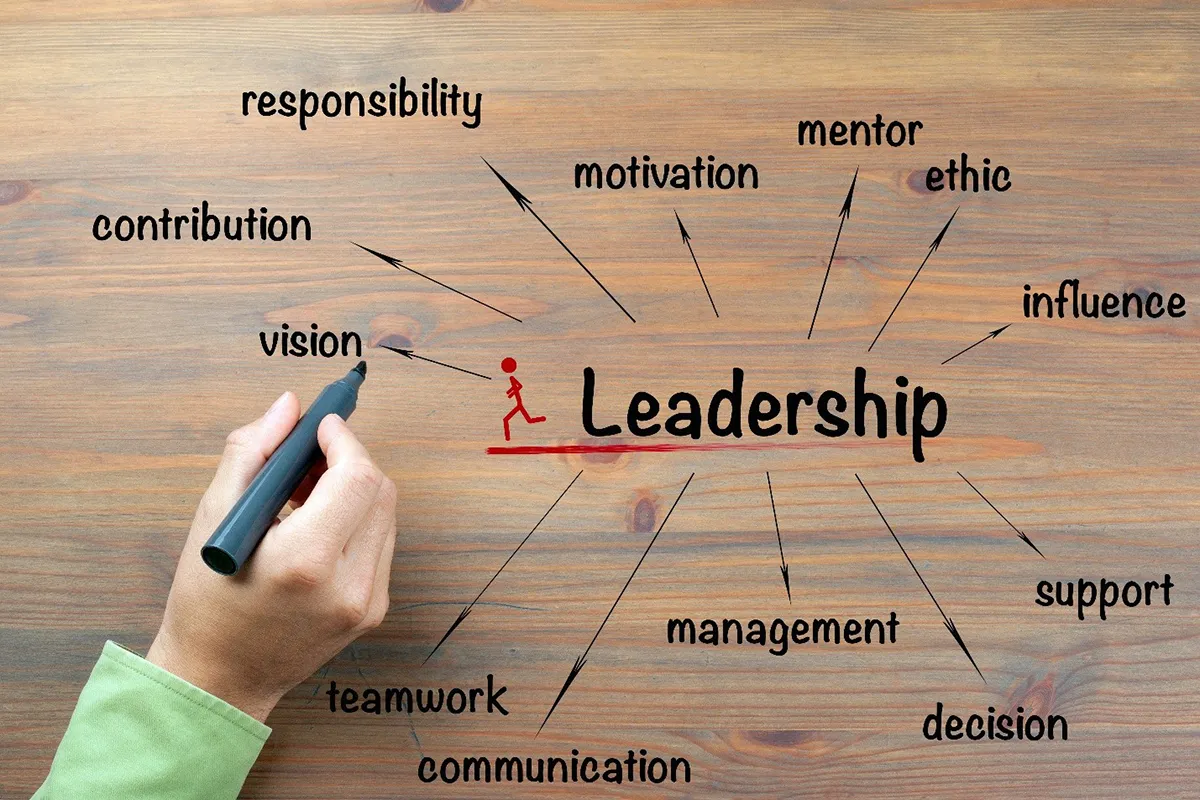
Great organizations aren't built on strategies alone—they're built on people. Before setting ambitious goals or chasing new markets, leaders must assemble a team that shares their purpose and thrives under pressure. This chapter explores the principle that getting the right people in place is the first step to greatness, emphasizing that open communication and a focus on talent create a foundation for enduring success. By prioritizing character, capability, and alignment, leaders can build teams that not only achieve but sustain excellence over time. Read More
Imagine a boutique marketing agency aiming to compete with industry giants. The Visionary dreams of landing major clients, but early efforts falter due to inconsistent delivery. The Integrator realizes the issue isn't strategy—it's the team. They overhaul hiring, focusing on candidates who embrace feedback and align with the agency's mission of creativity with impact. New hires, selected for their adaptability and drive, transform the agency's culture, delivering campaigns that win national accounts. This reflects the idea that the right people, united by a shared purpose, turn potential into performance.
Open communication is the glue that holds great teams together. Leaders who foster candid conversations—where ideas are challenged and weaknesses addressed—create trust. A simple example is with a logistics firm we've worked with, the leadership team struggled with siloed departments. By holding regular, honest discussions about goals and gaps, they aligned their people around a unified vision, boosting efficiency by 25%. The principle here is that transparency ensures everyone is rowing in the same direction, amplifying collective impact.
Disciplined hiring is critical to this approach. Enduring organizations don't just fill roles—they seek individuals who elevate the whole. A tech startup, for example, prioritized candidates with a growth mindset over technical expertise alone. This focus on potential paid off when their team adapted to market shifts, launching a product that gained rapid traction. To apply this, start with a Talent Alignment Audit: evaluate your team's strengths, identify gaps, and define traits that match your mission. Next, use a Values-Based Interview Process, asking questions that test for cultural fit and resilience. Finally, commit to ongoing development through mentorship, ensuring your people grow with the company. Greatness begins with who's on your team—choose wisely, align them with candor, and build a legacy that lasts.
The High Cost of Indifference in Business

The famous quote warns that "the price good men pay for indifference to public affairs is to be ruled by evil men." While this was said in relation to politics and society, the same principle holds true in the business world as well. Indifference and apathy from good corporate leaders, managers, and employees allows those focused solely on greed and self-interest to take control. Read More
The consequences of this indifference can be catastrophic for companies and organizational cultures. When ethical employees stay silent and disengage from organizational decision-making and policies, it creates a vacuum that can be filled by those driven by a win-at-all-costs mentality. This is a slippery slope that can lead to unethical, illegal, or wildly misguided business practices.
History is filled with examples of corporate indifference and lack of moral courage enabling corporate wrongdoing. Financial crises and accounting scandals often feature companies motivated only by short-term profits rather than sustainable business models that served the long-term interests of communities, customers, and society. Corporate fraud and toxic sales cultures breed when leadership stays indifferent to proper business practices.
Corporate crimes and unethical business dealings are given free rein because employees look the other way rather than questioning superiors. Every major corporate scandal features good employees who saw warning signs but remained indifferent rather than having the courage to speak up and drive positive change.
Ethical employees have a responsibility to remain engaged and be stakeholders in their company's core mission, values, and policies. They must have the courage to ask questions, elevate concerns, and fight for integrity in their corporate culture and business practices. The cost of this indifference is the slow erosion of ethics and the enablement of greedy leaders who are driven solely by profit and self-enrichment.
Good companies don't emerge by accident, they are built to last! They are cultivated through the active involvement and courage of ethical employees and leaders at all levels. Don't let your indifference be an enabler of corporate wrongdoing. Speak up, get engaged, and fight to have companies and leaders that create value through principled business practices that make the world a little bit better.
Investigating the Impact of Business Model Innovation on Industry Evolution

In an increasingly competitive global market, the survival and growth of businesses depend not only on the quality of their products and services but also on the innovative strength of their business models. Business model innovation (BMI) refers to the process of creating, adjusting, or transforming the ways in which a company creates, delivers, and captures value. The impact of BMI is profound, influencing not just individual businesses but the entire industries they operate within. This article delves into how business model innovation drives industry evolution and shapes the future of commerce. Read More
Business model innovation involves rethinking and redesigning the foundational aspects of how a business operates. It can include changes in revenue models, customer engagement strategies, cost structures, and delivery mechanisms. Unlike product or process innovation, which focuses on specific aspects of a business, BMI requires a holistic approach, often leading to a fundamental shift in the way a business interacts with its market.
Key components of business model innovation include value proposition, redefining what value is offered to customers; customer segments, identifying and targeting new or niche customer groups; channels, exploring new ways to deliver products or services to customers; customer relationships, enhancing customer engagement and loyalty strategies; revenue streams, developing new ways to generate income; key resources and activities, optimizing the resources and activities critical to delivering the value proposition; and cost structure, adjusting the business's cost structure to support new models.
Business model innovation is often at the heart of industry disruption. Companies that successfully implement innovative business models can upend established market leaders by offering superior value in novel ways. For instance, Netflix's subscription-based streaming model revolutionized the entertainment industry, rendering traditional DVD rental services obsolete.
BMI can also lead to the creation of entirely new markets. The advent of the sharing economy is a prime example, where companies like Airbnb and Uber developed platforms that enabled individuals to share resources, creating new market dynamics and opportunities that did not exist before.
Innovative business models can provide a significant competitive advantage by differentiating a company from its competitors. Businesses that continually evolve their models to meet changing market demands can maintain relevance and competitiveness. For example, Amazon's transition from an online bookstore to a global e-commerce and cloud computing giant showcases how evolving business models can drive sustained growth and industry leadership.
Business model innovation often focuses on enhancing the customer experience, leading to increased customer satisfaction and loyalty. Companies that understand and anticipate customer needs can tailor their offerings to provide exceptional value, thereby reshaping industry standards. For example, the subscription box model, popularized by companies like Birchbox, provides customers with personalized product experiences, changing the way people discover and purchase new products.
BMI can encourage greater collaboration within industries. Open innovation models, where companies collaborate with external partners to co-create value, have become more prevalent. This collaborative approach can lead to accelerated innovation, shared risk, and the pooling of resources, ultimately benefiting the entire industry. An example of this is the automotive industry, where manufacturers are increasingly partnering with tech companies to develop autonomous driving technologies.
While the benefits of business model innovation are significant, there are also challenges that businesses must navigate. Organizations often face internal resistance when attempting to implement new business models. Employees and stakeholders may be hesitant to embrace change, particularly if it disrupts established routines or threatens existing revenue streams. Effective change management and clear communication are essential to overcome this resistance.
Innovative business models involve a degree of uncertainty and risk. Businesses must be willing to experiment and accept the possibility of failure. Implementing a robust strategy for testing and iterating on new models can help mitigate these risks. Companies must strike a balance between innovating their business models and maintaining stability. Overly frequent changes can confuse customers and disrupt operations, while too little innovation can lead to stagnation and loss of competitiveness.
Business model innovation is a powerful driver of industry evolution, capable of disrupting traditional markets, creating new opportunities, and enhancing competitive advantage. Companies that embrace BMI can redefine their industries and shape the future of commerce. However, successful implementation requires careful planning, a willingness to embrace change, and the ability to balance innovation with stability.
As industries continue to evolve in response to technological advancements and changing consumer preferences, the role of business model innovation will only become more critical. By understanding and leveraging the principles of BMI, businesses can navigate the complexities of the modern market and position themselves for long-term success.
Embracing the Road Ahead: Jumpstarting Your Business with Jeffrey Michael Capital

Embracing the road ahead is an exhilarating journey filled with endless possibilities and opportunities for growth. At Jeffrey Michael Capital, we believe that every step forward, no matter how small, brings us closer to realizing our business aspirations and achieving remarkable success. Our consulting services are designed to empower businesses like yours to thrive in today's dynamic and competitive landscape, propelling you towards a future brimming with innovation, resilience, and prosperity. Read More
Leadership Development is the cornerstone of effective business strategies. We envision a future where visionary leaders inspire teams, navigate challenges with grace, and drive transformative change. Through personalized coaching, leadership assessments, and development workshops, we are committed to cultivating a new generation of leaders who will steer your company towards unparalleled success in any market environment.
Employee Excellence Plans are the heart of a motivated and high-performing workforce. We envision a future where talent development, engagement, and retention strategies create a culture of innovation, collaboration, and exceptional performance. Our comprehensive programs, ranging from performance management systems to training initiatives, are designed to attract, develop, and retain top talent, fostering a workplace environment where every employee can thrive and contribute their best.
Web Development and Tech Service Upgrades are the backbone of a digitally empowered business. We envision a future where cutting-edge technology and tailored solutions enhance your online presence, streamline operations, and elevate customer experiences. Our expertise in website design, cybersecurity, cloud computing, and IT support services ensures that your company is equipped with the latest tools and capabilities to succeed in the digital age, driving growth, and competitiveness.
Improving Company Performance is at the core of our mission. We envision a future where strategic investments, customized solutions, and industry expertise propel your company towards sustainable growth and long-term success. By focusing on leadership development, employee excellence plans, web development and tech service upgrades, we empower your business to overcome challenges, seize opportunities, and thrive in an ever-evolving business landscape.
The road ahead is bright, promising, and full of exciting possibilities for your business. With Jeffrey Michael Capital as your trusted partner, you can embrace the future with confidence, optimism, and a sense of purpose. Together, we will embark on a transformative journey towards a brighter, more resilient, and prosperous tomorrow.
The Significance of Stability: Exploring the Link Between Business Stability and Solvency

In the contemporary business landscape, there's a notable shift towards prioritizing stability as a critical element for sustained success and resilience. Business stability encompasses the ability to maintain consistent operations, withstand market fluctuations, and overcome challenges while preserving core functions and financial well-being. This newfound focus on stability is paramount due to the ever-evolving market dynamics, which include economic uncertainties, regulatory changes, technological disruptions, and unforeseen crises like pandemics or natural disasters. Stable businesses are better equipped to manage cash flow, retain talent, sustain customer relationships, and uphold brand reputation, fostering trust among stakeholders such as investors, creditors, customers, and employees. Read More
The connection between stability and solvency is intrinsic to a business's financial health and viability. Solvency refers to a business's ability to meet its financial obligations by having sufficient assets to cover liabilities, both short-term and long-term. Stability contributes significantly to solvency through various avenues. Firstly, stable businesses tend to generate consistent revenue streams, ensuring they can meet ongoing expenses and debt payments without relying solely on unpredictable sources of income.
Effective cost management is also a byproduct of stability, allowing businesses to optimize expenditures, control costs, and avoid unnecessary financial burdens. Furthermore, stable operations make businesses more appealing to lenders, investors, and capital providers, enhancing their access to financing and favorable credit terms. Mitigating risks, focusing on long-term planning, and fostering transparent communication with stakeholders are additional strategies that stability supports, ultimately reinforcing solvency and overall financial strength.
To achieve stability and ensure solvency, businesses should adopt proactive financial planning and analysis, diversify revenue streams, optimize cost structures, develop robust risk management strategies, and maintain transparent communication with stakeholders. By prioritizing stability and solvency, businesses can build resilience, capitalize on opportunities, and thrive in the face of uncertainties, thereby paving the way for sustainable success and long-term value creation in the competitive business landscape.
Navigating the Data Flood: Fostering Knowledge in Contemporary Business

In the fast-paced world of modern business, the quote "We are drowning in information but starved for knowledge" holds profound significance. This statement encapsulates the paradoxical challenge faced by businesses today – while access to vast amounts of data has never been easier, the real value lies in transforming that data into meaningful knowledge. The sheer volume of information available can be overwhelming, leading to a hunger for actionable insights and strategic wisdom that drive informed decisions and propel business growth. Read More
To navigate this information deluge effectively, businesses must adopt strategies that prioritize knowledge cultivation over data accumulation. Firstly, focusing on data quality and relevance is crucial. Rather than being inundated with irrelevant data points, businesses should concentrate on collecting and analyzing information that directly contributes to their strategic objectives and decision-making processes.
Leveraging advanced analytics tools and techniques is another key strategy. By harnessing data visualization, predictive analytics, and machine learning algorithms, businesses can uncover patterns, identify opportunities, and make informed decisions based on actionable insights derived from data. Furthermore, fostering a culture of continuous learning is essential. Encouraging employees to seek out new knowledge, stay updated on industry trends, and share insights and best practices across teams promotes a dynamic learning environment that fuels innovation and problem-solving.
Collaborating with external partners, industry experts, and research institutions also plays a vital role in knowledge acquisition. Building strategic alliances facilitates knowledge exchange, access to specialized expertise, and collaboration on innovative projects that drive business growth. Investing in training programs, workshops, and skill development initiatives is equally important. Enhancing employees' critical thinking, problem-solving, and decision-making skills not only improves individual performance but also contributes to the collective knowledge base of the organization.
Implementing robust knowledge management systems and platforms further enhances knowledge sharing, collaboration, and information access across departments and teams. Centralizing information, facilitating collaboration, and ensuring knowledge continuity are key benefits of effective knowledge management practices.
Ultimately, the impact of knowledge on business success cannot be overstated. Knowledge empowers informed decision-making, strategic planning, and innovation. It enables businesses to anticipate market trends, identify opportunities, mitigate risks, and drive sustainable growth in today's competitive business landscape.
While the abundance of information can be overwhelming, businesses that prioritize knowledge cultivation gain a competitive advantage and position themselves for long-term success. By adopting strategies that emphasize data quality, advanced analytics, continuous learning, strategic partnerships, training and development, and knowledge management, businesses can harness knowledge as a strategic asset and thrive in the digital age.
"Out of Your Vulnerabilities Will Come Strength" -Sigmund Freud

In the realm of business growth, Brene Brown's quote, "Out of your vulnerabilities will come strength," holds profound relevance. It underscores the importance of embracing vulnerability as a catalyst for resilience, innovation, and success. In the competitive landscape of entrepreneurship, it's common for leaders to feel pressured to project invulnerability, yet acknowledging vulnerabilities is crucial for growth. These moments of vulnerability are not weaknesses but opportunities for learning, adaptation, and transformation. Read More
Embracing vulnerability in business involves several key aspects. Firstly, it means being open to change and adaptable to evolving market dynamics, consumer needs, and technological advancements. This agility allows businesses to pivot strategies, learn from failures, and stay relevant in a dynamic environment. Secondly, vulnerability fosters a culture of innovation by encouraging creativity, risk-taking, and experimentation. Employees who feel safe to express ideas and take calculated risks contribute significantly to business growth and evolution.
Vulnerability facilitates authentic connections within an organization and with external stakeholders. When leaders share stories of challenges overcome and lessons learned, they humanize the brand and build trust and loyalty. Additionally, vulnerability cultivates resilience by empowering individuals and teams to face adversity with determination and learn from setbacks. This resilience drives continuous improvement and fuels the growth mindset essential for business success.
Practically, embracing vulnerability in business involves creating a safe and transparent environment where open communication, feedback, and collaboration thrive. Leaders play a crucial role in leading by example, demonstrating vulnerability, and encouraging a culture of learning and growth. Celebrating resilience, adaptability, and innovation reinforces the value of vulnerability as a source of strength and opportunity.
In essence, vulnerability is not a weakness to be avoided but a powerful asset that fuels innovation, collaboration, and resilience in the journey of business growth. By embracing vulnerability, businesses can harness strength from challenges, transform setbacks into stepping stones, and navigate the complexities of the business landscape with courage and authenticity.
Brand Building in 2024: Strategies for Success
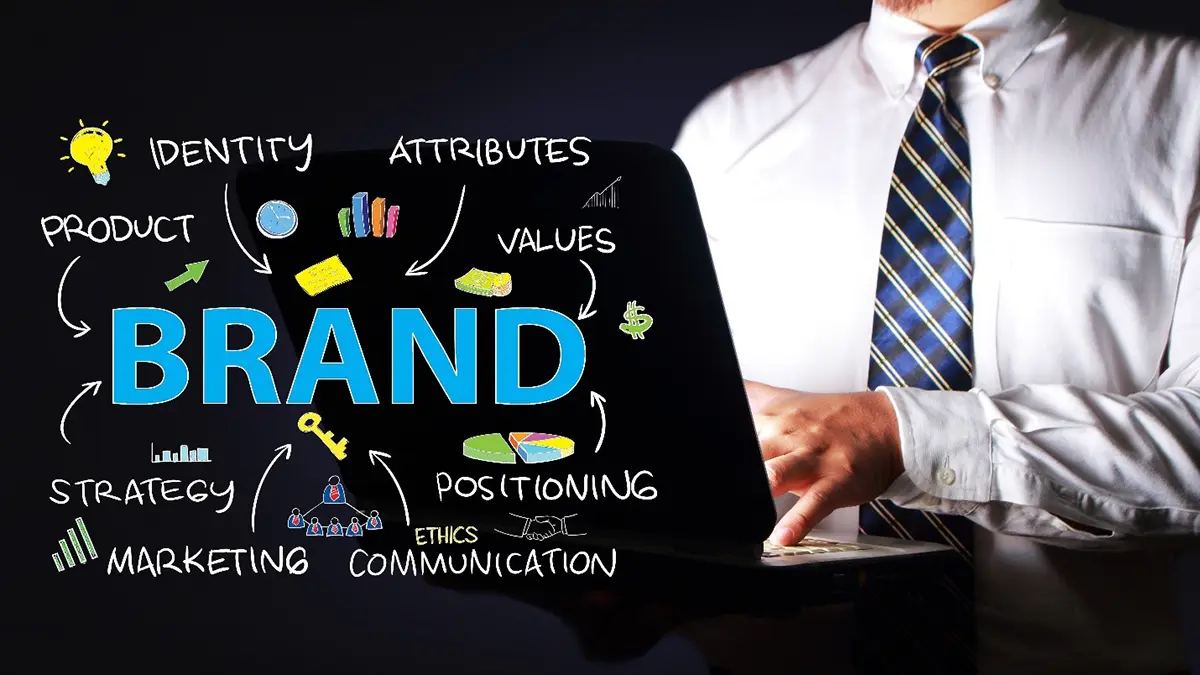
Starting a dynamic year 2024, brand building has evolved into a sophisticated blend of artistry and strategy. Today's consumers demand more than just a logo or slogan; they seek authentic connections and purpose-driven engagement from the brands they support. Defining a brand's identity is foundational, encompassing its mission, vision, values, and personality, all of which must resonate deeply with the target audience. Read More
Purpose-driven branding has gained prominence, with consumers valuing brands that align with meaningful causes and demonstrate social and environmental responsibility. Data and technology play pivotal roles in modern brand building. Leveraging data analytics, AI, and machine learning enables personalized customer experiences, optimized marketing strategies, and enhanced brand engagement across various digital touchpoints. Prioritizing customer experience has become non-negotiable, necessitating seamless omnichannel interactions, personalized recommendations, efficient customer service, and post-purchase engagement to foster loyalty and advocacy.
Emotional connections are another cornerstone of successful brand building in 2024. Brands must tell compelling stories, evoke emotions, and create memorable experiences that leave lasting impressions. Authenticity and transparency are equally crucial, with consumers valuing honesty, genuineness, and ethical business practices. Trust is earned through consistent delivery on brand promises, acknowledgment of mistakes, and active listening to customer feedback.
Purposeful marketing strategies are imperative, focusing on creating valuable content, leveraging storytelling techniques, and utilizing social media, influencers, and user-generated content to amplify brand messages. SEO, content marketing, and digital advertising further enhance brand visibility and engagement. Ultimately, building a resilient brand in 2024 requires a strategic blend of creativity, authenticity, data-driven insights, and purposeful engagement with customers.
Adaptability, innovation, and a commitment to delivering exceptional experiences are key to navigating the ever-evolving landscape of brand building and ensuring long-term success.
Differentiation Strategy: A Powerful Tool for Improving Company Performance

During his tenure as CEO of General Electric, Jack Welch implemented a radical management approach that became known as the "vitality curve" or "differentiation" strategy. The core principle of this strategy was to sort employees into three categories - the top 20% of performers, the middle 70%, and the bottom 10% - and then take very different approaches to managing each group. Read More
For the top 20% of high-performing employees, Welch advocated investing heavily in their development, providing them with the best resources, and creating clear paths for advancement. This group was seen as the company's future leaders and top talent, so maximizing their potential was crucial.
In contrast, the middle 70% were encouraged to improve through coaching, training, and setting stretch goals. Welch believed that with the right support, many in this group could be elevated to the top tier of performers.
Finally, the bottom 10% were quickly identified and either developed to improve or, if that proved unsuccessful, swiftly dismissed. Welch felt strongly that keeping poor performers on the payroll was detrimental to the overall health and competitiveness of the organization.
This differentiation strategy had a profound impact on GE's performance. By clearly identifying and nurturing top talent, the company was able to develop a deep bench of exceptional leaders. Motivating the middle group to reach new heights boosted overall productivity and efficiency. And quickly removing the bottom performers prevented them from dragging down morale and hampering the progress of the entire organization.
The results speak for themselves - during Welch's tenure from 1981 to 2001, GE's market capitalization grew from $12 billion to over $400 billion, making it the most valuable company in the world at the time. Employee engagement and satisfaction also soared, as top talent was rewarded and nurtured, and underperformers were held accountable.
While Welch's approach was controversial and confrontational in many ways, it cannot be denied that it delivered tremendous value for GE. Other companies looking to drive greater performance, improve their culture, and build a sustainable competitive advantage would be wise to carefully consider implementing a similar differentiation strategy. By identifying, developing, and retaining top talent while proactively managing out poor performers, organizations can unlock remarkable gains in productivity, innovation, and overall success.
How the Power of Consulting = Success With Jeffrey Michael Capital

In the fast-paced and constantly evolving world of business, leveraging the expertise of consulting firms has become increasingly crucial for staying competitive and achieving sustainable growth. Firms, such as Jeffrey Michael Capital, offer a wealth of specialized knowledge, experience, and strategic guidance tailored to address the unique challenges and goals of businesses across various industries. One of the key advantages of working with consultants is gaining access to specialized expertise that spans finance, operations, marketing, technology, and more. This expertise enables businesses to make informed decisions, identify opportunities, and implement effective solutions with confidence. Read More
Consultants bring fresh perspectives and innovative thinking to the table, helping businesses break free from internal biases and traditional approaches. They excel in strategic planning and execution, assisting companies in aligning their goals with actionable plans and ensuring successful implementation of initiatives such as market entry strategies, operational optimizations, and digital transformations. Hiring consultants also offers a cost-effective resource utilization strategy, allowing businesses to access top-tier talent and resources without the overhead costs associated with full-time employees.
One of the key strengths of consulting firms like Jeffrey Michael Capital is their ability to facilitate objective and data-driven decision-making. Consultants leverage analytics, market research, and industry benchmarks to inform strategic initiatives, enabling businesses to make decisions based on facts and insights rather than assumptions. This objective approach enhances the effectiveness and success rate of strategic initiatives. When it comes to choosing a consulting partner, Jeffrey Michael Capital stands out for several reasons. With a proven track record of delivering results for clients ranging from startups to Fortune 500 companies, Jeffrey Michael Capital offers customized solutions that address specific business needs and challenges. The firm's team of industry experts and seasoned consultants bring deep domain knowledge and experience to the table, fostering a collaborative partnership with clients and working closely to achieve success.
Partnering with consulting firms like Jeffrey Michael Capital is essential for businesses looking to thrive and succeed in today's dynamic business environment. From accessing specialized expertise and innovative solutions to driving strategic planning and objective decision-making, consultants play a vital role in helping businesses navigate challenges, seize opportunities, and stay competitive in an ever-changing marketplace.
The Power of Clear Communication in Leadership and Company Growth

Communication is the cornerstone of success in any organization. As the CEO of a consulting firm that specializes in leadership development and business growth, I've seen firsthand how clear and effective communication can drive positive change and propel companies toward their goals. In this article, we'll explore the crucial role that communication plays in fostering leadership development and enhancing the efficiency and processes of a growing company. Read More
Building Strong Leadership through Communication
At the heart of every successful organization are strong leaders who can inspire, motivate, and guide their teams toward shared objectives. However, leadership isn't just about making decisions; it's about effectively communicating those decisions and vision to the entire organization. Clear communication creates alignment, fosters trust, and empowers employees to take ownership of their roles. One of the key aspects of leadership development is teaching leaders how to communicate effectively at all levels of the organization. This includes mastering the art of active listening, providing constructive feedback, and delivering clear and concise messages. When leaders communicate with transparency and authenticity, they create a culture of openness and collaboration that drives innovation and success.
Driving Efficiency and Process Improvement
In a rapidly growing company, efficiency and streamlined processes are essential for sustainable success. Clear communication plays a pivotal role in identifying bottlenecks, addressing inefficiencies, and implementing process improvements. When teams communicate effectively, they can collaborate more seamlessly, make decisions faster, and adapt to changes in the market more efficiently. Effective communication also ensures that everyone is on the same page regarding goals, priorities, and expectations. This clarity eliminates confusion, reduces errors, and minimizes rework, ultimately saving time and resources. By fostering a culture of communication and continuous improvement, companies can optimize their operations and stay competitive in today's fast-paced business landscape.
Best Practices for Enhancing Communication
To harness the power of clear communication in leadership development and company growth, here are some best practices to consider:
- Establish Open Channels: Create platforms and forums for open and transparent communication at all levels of the organization. Encourage feedback, ideas, and suggestions from employees, and ensure that leaders are accessible and approachable.
- Provide Training and Development: Invest in communication training for leaders and employees alike. Offer workshops, seminars, and coaching sessions focused on active listening, conflict resolution, and effective messaging.
- Use Technology Wisely: Leverage communication tools and technology to facilitate collaboration and information sharing. Utilize project management software, messaging apps, and video conferencing platforms to connect teams and streamline communication workflows.
- Set Clear Expectations: Clearly communicate goals, objectives, and performance expectations to all employees. Provide regular updates and progress reports to keep everyone informed and aligned.
- Encourage Feedback and Adaptation: Foster a culture of feedback and continuous improvement. Encourage employees to provide feedback on processes, workflows, and communication practices, and be open to making adjustments based on that feedback.
Clear communication is not just a soft skill; it's a strategic imperative for successful leadership development and company growth. By prioritizing effective communication practices, organizations can build strong leaders, drive efficiency, and create a culture of collaboration and innovation. As leaders, let's commit to sharpening our communication skills and unlocking the full potential of our teams and organizations.
Embracing Criticism: A Stepping Stone to Success
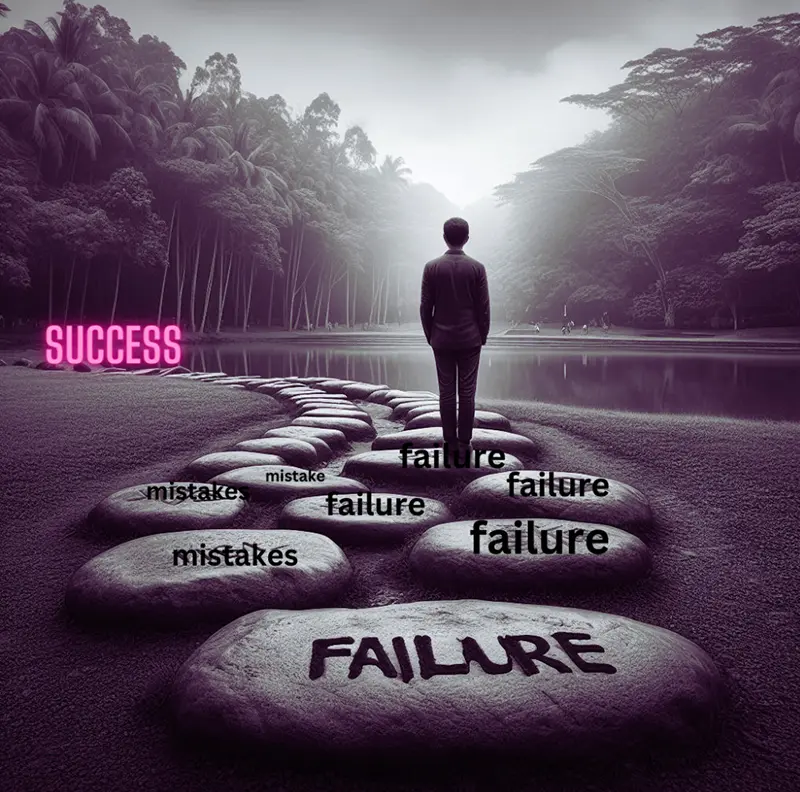
In the competitive realm of business, where challenges and obstacles are inevitable, the words of Zig Ziglar ring true: "Don't be distracted by criticism. Remember, the only taste of success some people have is when they take a bite out of you." This quote serves as a powerful reminder of the resilience and determination required to navigate the ups and downs of entrepreneurship. Read More
Criticism is an inherent part of the journey to success. It can come from competitors, clients, colleagues, or even well-meaning friends and family. However, how we respond to criticism defines our path forward. Instead of being deterred or disheartened, successful entrepreneurs view criticism as valuable feedback and an opportunity for growth.
One of the key traits of successful business leaders is their ability to embrace criticism with grace and humility. Rather than taking it personally or allowing it to undermine their confidence, they use it as a catalyst for improvement. Criticism, when viewed through the lens of constructive feedback, can provide valuable insights into areas that require attention or refinement.
Moreover, criticism can be a testament to one's progress and success. As Ziglar eloquently puts it, some individuals only experience a taste of success when they attempt to bring others down. This realization can serve as motivation to keep pushing forward, to continue innovating, and to prove detractors wrong through tangible achievements.
It's essential to remember that not all criticism is valid or constructive. Discernment is key in determining which feedback to internalize and act upon. Surrounding oneself with a supportive network of mentors, advisors, and peers who provide constructive criticism and encouragement is invaluable on the journey to success.
In the face of criticism, maintaining a positive mindset and unwavering determination is crucial. Every setback, every critique, and every challenge is an opportunity to learn, adapt, and grow stronger. It's a reminder that success is not defined by the absence of criticism but by how we respond to it and use it to fuel our progress.
As aspiring entrepreneurs and business leaders, let us embrace criticism as a stepping stone to success. Let us cultivate resilience, learn from feedback, and stay focused on our goals and vision. Remember, it's not the criticism that defines us but how we rise above it and continue on the path to greatness.
"The way to get started is to quit talking and begin doing." – Walt Disney.

In the fast-paced and fiercely competitive world of business, the timeless wisdom encapsulated in Walt Disney's quote, "The way to get started is to quit talking and begin doing," resonates more powerfully than ever. In an environment where ideas alone are not enough to secure success, the imperative lies in translating aspirations into actions. The sheer overwhelm and competition demand a departure from mere rhetoric towards tangible, purposeful steps. Read More
Procrastination and endless deliberation can be paralyzing in a landscape where every moment counts. The quote underscores the importance of embracing a proactive mindset. In a world where countless businesses vie for attention, success favors those who dare to step beyond the realm of conceptualization and into the arena of execution. Taking that first step, no matter how small, signifies a commitment to progress and an acknowledgment that success is an outcome of actions, not just intentions.
Competitiveness in the business arena demands agility, resilience, and an unwavering focus on results. While discussions and plans are vital, they must seamlessly transition into concrete actions to stand out in the crowded market. The quote encourages entrepreneurs and business leaders to move beyond the comfort of ideation and embark on the journey of implementation, where innovation, adaptability, and swift decision-making reign supreme.
The overwhelming nature of the business world necessitates a mindset shift—from talking about ambitions to actively pursuing them. In a landscape where competitors are not idle, where opportunities are fleeting, and where consumers demand constant evolution, the quote serves as a guiding principle. It urges us to confront the challenges head-on, to iterate and refine in real-time, and to understand that the true value lies not in perfecting plans but in the resilience to learn from doing.
The quote by Walt Disney is a rallying cry against analysis paralysis—an affliction that often hinders progress in the face of complexity. In a competitive business world, taking action, even if it means making mistakes along the way, can be more valuable than prolonged contemplation. It's about learning through the process, adapting to change, and refining strategies based on real-world experiences.
Walt Disney's words encapsulate a profound truth that reverberates through the corridors of the overwhelming and competitive business world. To succeed, to make a mark, and to navigate the complexities of the market, the transformation from talk to action is indispensable. In a realm where doing is the currency of progress, the journey begins not with grandiose plans but with that first courageous step into the realm of decisive action.
Mastering Dynamic Leadership: Piloting Business Shifts with Agile Leadership

In business where change is the only constant, the demand for agile leadership has become more than a necessity—it's a strategic imperative. Agile leadership is more than just a buzzword; it's a dynamic philosophy that propels organizations forward in the face of uncertainty. This journey into the essence of agile leadership unravels the fundamental principles that drive adaptability, foster collaboration, and champion quick decision-making in our rapidly changing business ecosystem. Read More
At the core of agile leadership is a commitment to adaptability, a mindset that views change as an opportunity rather than a threat. In a landscape where market trends can shift unexpectedly, agile leaders cultivate an environment where flexibility is not just encouraged but celebrated.
Collaboration forms the heartbeat of agile leadership. Unlike traditional top-down approaches, agile leaders champion cross-functional teamwork, recognizing that diversity in perspectives is the catalyst for innovation. By fostering an inclusive culture where every team member's voice is valued, agile leaders build a collective force that propels the organization to success.
The ability to make swift, informed decisions is a hallmark of agile leadership. Agile leaders seamlessly integrate data, team expertise, and instinct to propel the organization forward. Decision-making is not a ponderous process but a skillful dance, ensuring that delays are minimized, and momentum is sustained in the fast-paced business world.
Agile leaders embrace uncertainty as a playground for innovation. Rather than fearing the unknown, they encourage experimentation, learning from failures, and leveraging challenges as steppingstones to success. For agile leaders, uncertainty is not a hindrance but an opportunity for transformative growth.
Continuous improvement is ingrained in the fabric of agile leadership. It's not a destination but an ongoing journey. Leaders committed to agility regularly reflect on processes, seek feedback, and iterate on strategies. This commitment to learning and adapting ensures that organizations remain not only relevant but ahead of the curve in an ever-evolving business landscape.
In the realm of agile leadership, adaptability, collaboration, and quick decision-making are not just principles—they are the pillars upon which resilient, forward-thinking organizations are built. As the winds of change continue to blow, agile leadership is the compass that not only navigates the storm but harnesses its power for transformative growth. It's time to embrace agility, not as a strategy but as a way of leadership that confidently propels us into the future.
The Customer Experience Revolution: Crafting Smiles at Every Interaction

In a business, where success is often measured not just by the quality of products or services but by the satisfaction of the customer, a new era has dawned—the Customer Experience Revolution. Picture a graph mapping your customers' sentiment at every touchpoint, capturing the essence of their journey with your company. In 2024, it's no longer merely about delivering a superior product or unbeatable value; the focus has shifted to ensuring that each interaction, each experience, leaves the customer not just satisfied but smiling. Read More
Traditionally, companies built their business models around factors like quality and value. However, as we step into the future, the emphasis is on crafting an immersive and delightful customer experience. This shift is not just a trend; it's a revolution in the way businesses operate and thrive in today's competitive market.
At the heart of this revolution is the concept of personalized marketing. It's about understanding your customers at a granular level—knowing what they need, when they need it, and how they want it. Imagine receiving an offer that aligns perfectly with your preferences at the exact moment you're contemplating a purchase. That's the power of personalized marketing—creating a connection that goes beyond the transaction, making the customer feel truly understood and valued.
In this era of the Customer Experience Revolution, on-time delivery is no longer a perk but an expectation. Customers are no longer willing to wait; they want their orders promptly and efficiently. Whether it's a tangible product arriving at their doorstep or a digital service being seamlessly activated, the key is to eliminate delays and provide a service that respects the customer's time and urgency.
Frictionless setup and installation have become the benchmark of customer-centric businesses. Gone are the days of complicated user manuals and frustrating assembly processes. Today, companies are investing in intuitive designs and user-friendly interfaces to ensure that customers can easily set up and use their products or services without a hitch. The goal is not just to meet expectations but to exceed them, leaving customers impressed and satisfied from the very beginning.
Efficient problem resolution is another crucial pillar of the Customer Experience Revolution. In a world where issues can arise, no matter how well a product or service is designed, the key is to handle them swiftly and effectively. Companies are investing in robust customer support systems, leveraging technology to streamline complaint resolution processes. The aim is not just to resolve problems but to turn a negative experience into a positive one, showcasing the company's commitment to customer satisfaction.
The Customer Experience Revolution is reshaping the way businesses operate, placing the customer at the center of the equation. It's no longer enough to offer a great product or service; success hinges on creating an experience that resonates with the customer at every touchpoint. Personalized marketing, on-time delivery, frictionless setup, and efficient problem resolution are not just buzzwords—they are the building blocks of a customer-centric future. As companies embrace this revolution, they are not just earning customers; they are creating brand advocates who will not only return for more but will also enthusiastically recommend their positive experiences to others. Welcome to the era where every interaction is an opportunity to make your customer smile.
"Success is not final, failure is not fatal: It is the courage to continue that counts." - Winston Churchill

Winston Churchill's timeless quote, "Success is not final, failure is not fatal: It is the courage to continue that counts," encapsulates a profound truth that resonates across various facets of life, particularly in the dynamic world of business. In this article, we delve into the depths of this quote, exploring its implications on resilience, adaptability, and the essential courage required to navigate the ever-evolving business landscape. Read More
Embracing the Impermanence of Success:
Churchill's assertion that success is not final serves as a poignant reminder for businesses to avoid complacency in times of triumph. Success, while a cause for celebration, should not breed stagnation. Instead, it should be viewed as a steppingstone, a milestone on an ongoing journey of growth and evolution. In the fast-paced business world, standing still often equates to falling behind. Continuous innovation and a forward-looking mindset are the keys to transcending the transitory nature of success.
Learning from Failure without Fearing Fatality:
Equally important is Churchill's acknowledgment that failure is not fatal. In the realm of business, failure is an inevitable companion on the road to success. Rather than being a crippling blow, failure should be seen as a fertile ground for learning, a catalyst for improvement. Companies that embrace failure as a part of the journey, rather than viewing it as an endpoint, cultivate a culture of resilience and adaptability. In this context, failure becomes a valuable teacher, providing insights that can steer a business towards greater heights.
The Courage to Persevere:
Churchill's timeless wisdom shines brightest in the phrase, "It is the courage to continue that counts." In the face of setbacks, uncertainties, and challenges, it is the courage to persevere that distinguishes successful businesses. This courage is not merely about persistence but encompasses the ability to adapt, innovate, and pivot when necessary. In a world where change is constant, having the courage to navigate uncharted territories, embrace transformation, and learn from both successes and failures is the true essence of enduring success in business.
Translating Churchill's Wisdom into Business Strategy
Embrace a Growth Mindset:
Cultivate a growth mindset within your organization, where success is viewed as a continuous journey rather than a destination. Encourage a culture of learning and innovation to propel the company forward.
Create a Resilient Culture:
Foster a resilient organizational culture that perceives failure as a steppingstone to success. Encourage open communication, learning from mistakes, and adapting strategies based on insights gained from setbacks.
Encourage Adaptive Leadership:
Develop leaders who embody the courage to adapt and persevere. Adaptive leadership involves staying agile in the face of change, making informed decisions, and guiding the organization through challenges with resilience.
Invest in Continuous Learning:
Prioritize continuous learning at all levels of the organization. Equip your team with the skills and knowledge needed to navigate evolving market dynamics, emerging technologies, and shifting consumer expectations.
Innovate and Pivot Strategically:
Actively seek opportunities for innovation and be willing to pivot strategically when required. The courage to explore new avenues and shift strategies based on market trends is fundamental to sustained success.
Winston Churchill's wisdom transcends time, offering invaluable insights for businesses seeking enduring success. By recognizing that success is a journey, failure is a teacher, and courage is the driving force, businesses can navigate the ever-changing tides of the market with resilience, adaptability, and the unwavering courage to continue. In the words of Churchill, it is this courage that truly counts on the path to sustained success in the business world.
Unleashing Unstoppable Teams: The Power of Selfless Collaboration for Extraordinary Success
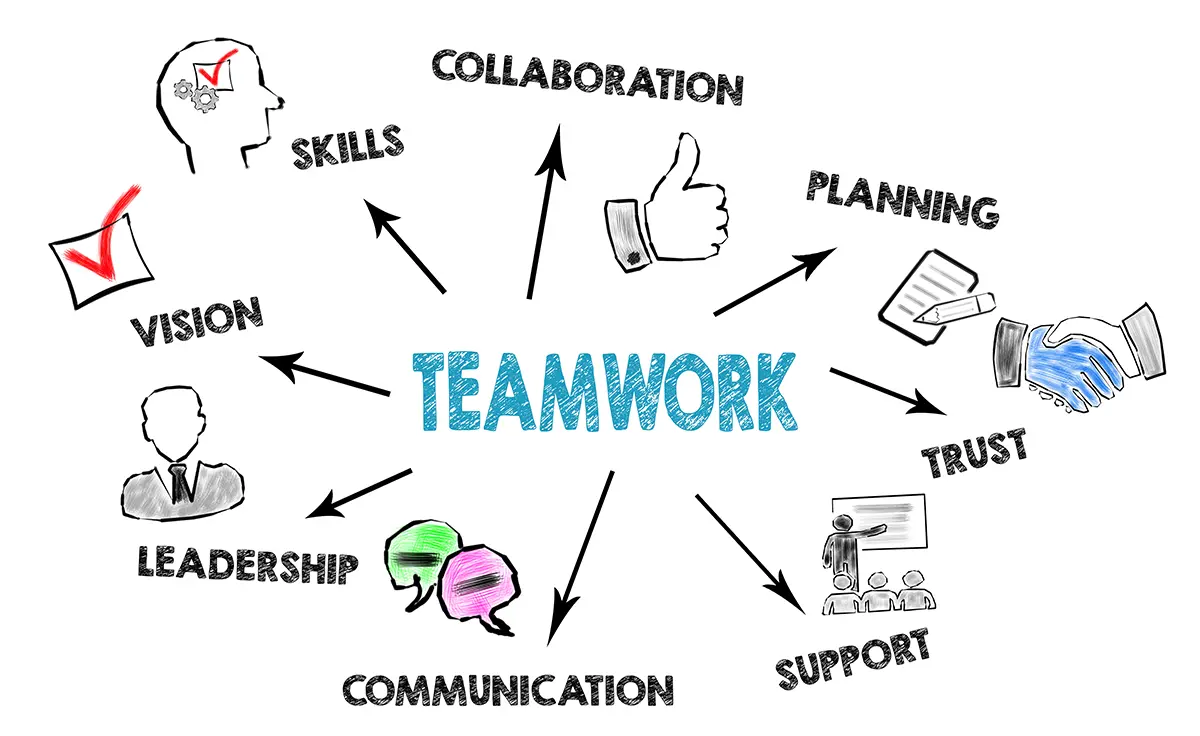
In the realm of business and beyond, the concept of unstoppable teams stands as a beacon of extraordinary success. The overarching theme revolves around the idea that when teams embrace selfless collaboration, they transform into an unstoppable force, capable of achieving unparalleled heights. Selfless collaboration goes beyond individual achievements, focusing on the collective triumph of the team. It is the synergy created when each team member brings their unique strengths and talents to the table, working towards a common goal without ego or personal agenda. Read More
The Pillars of Selfless Collaboration:
- Shared Vision and Purpose: Unstoppable teams are bound by a shared vision and purpose that ignites passion and commitment. When every team member understands and embraces the common goal, it fosters a collective drive that propels the team forward.
- Open Communication and Transparency: Effective communication is the lifeblood of unstoppable teams. Transparent and open channels ensure that ideas flow freely, fostering an environment where every voice is heard and valued. This inclusivity leads to a diversity of perspectives, enriching the team's problem-solving capabilities.
- Mutual Trust and Respect: Unstoppable teams are built on a foundation of mutual trust and respect. Team members rely on each other's expertise, knowing that every contribution is valued. This trust creates a cohesive and supportive atmosphere where individuals feel empowered to take risks and innovate.
- Adaptability and Flexibility: Embracing change is a hallmark of unstoppable teams. In a rapidly evolving landscape, teams that are adaptable and flexible can navigate challenges seamlessly. A culture that encourages learning and adaptation ensures that the team remains resilient in the face of uncertainties.
- Recognition of Individual Strengths: Selfless collaboration thrives when individual strengths are not only recognized but celebrated. Unstoppable teams understand that each member brings a unique set of skills to the table. By leveraging these strengths, the team becomes a powerhouse capable of overcoming obstacles and achieving extraordinary results.
The Journey to Extraordinary Success:
The journey to extraordinary success begins with the transformation of a group of individuals into a cohesive, selfless team. As each member contributes their best without seeking personal glory, the team becomes an unstoppable force. It's a journey marked by shared victories, collective learning, and the joy of achieving more together than any individual could alone.
Take, for instance, companies that have disrupted industries and redefined success. Behind these success stories are unstoppable teams fueled by selfless collaboration. Whether it's the innovation hubs of Silicon Valley or the collaborative spaces of global corporations, the common thread is a group of individuals working harmoniously towards a shared vision.
In the grand tapestry of success, unstoppable teams emerge as the masterpiece woven by selfless collaboration. The excitement lies in the realization that, by fostering a culture of shared purpose, open communication, trust, adaptability, and recognition of individual strengths, any team can become an unstoppable force. It's not just about achieving goals; it's about surpassing them, breaking barriers, and creating a legacy of extraordinary success that stands the test of time. In the world of unstoppable teams, the journey is as exhilarating as the destination.
Empowering Employees: Igniting Organizational Excellence

In dynamic modern workplaces, courageous leaders play a pivotal role in unlocking the full potential of their teams. Employee empowerment, far beyond a mere buzzword, stands as a strategic imperative under the guidance of these leaders. Recognizing the unique potential and talents within their teams, these leaders foster a culture of empowerment that permeates the entire organization. They acknowledge the individuality of each team member, appreciating their distinct skills, experiences, and perspectives. By doing so, they create an environment where every employee feels seen, heard, and valued. Read More
Courageous leaders take the concept of empowerment further by providing tailored opportunities for growth and development. This involves implementing training programs, mentorship initiatives, and creating pathways for career advancement. By investing in the professional development of their employees, leaders not only enhance individual skills but also fortify the organization's collective capabilities.
The impact of employee empowerment extends beyond skill development; it has a profound effect on morale and engagement. Courageous leaders actively seek ways to uplift and encourage their teams, fostering a positive work environment where creativity and innovation thrive. This boost in morale directly translates into increased productivity, providing the organization with a competitive edge in the market.
Empowered employees, entrusted with responsibilities by courageous leaders, become drivers of organizational productivity. This trust instills a sense of ownership and accountability, motivating employees to go above and beyond to achieve organizational goals. Consequently, productivity levels soar, and the entire organization reaps the rewards of a highly engaged workforce.
In the competitive business landscape, where adaptability and innovation are paramount, courageous leaders recognize that empowered teams are the key to success. By unleashing the full potential of their workforce, they position their organization as a formidable player in the market. Employee empowerment becomes a strategic differentiator that sets the company apart from competitors.
In conclusion, courageous leaders understand that true empowerment is a collaborative effort, involving the recognition of each team member's potential and the provision of tailored opportunities for growth. As they foster a culture of empowerment, these leaders not only boost morale, enhance organizational productivity, and fuel competitiveness but also shape the foundation for a resilient and thriving future. In the journey towards excellence, employee empowerment stands as the catalyst propelling both individuals and organizations to new heights.
Superman Leadership: Riding the Emotional and Financial Rollercoaster of Entrepreneurship

Embarking on the entrepreneurial journey is akin to donning the cape of Superman, navigating through the exhilarating highs and daunting lows that define the rollercoaster of business ownership. The emotional peaks come with the triumphs of success milestones, be it sealing significant deals, surpassing sales targets, or reveling in positive customer feedback. The joy derived from pursuing one's passion and aligning with a purpose creates an unparalleled emotional high, acting as a driving force through the challenges. Witnessing personal growth, both professionally and personally, along the entrepreneurial journey adds a layer of fulfillment that fuels the spirit. Read More
However, just as Superman faces adversaries, business owners encounter emotional lows. Setbacks and failures are inherent in entrepreneurship, triggering feelings of frustration, disappointment, and self-doubt. Financial stress, particularly during the initial stages, adds a layer of pressure—fluctuating income, meeting payroll, and navigating economic uncertainties can take a toll. Balancing the demands of business with personal life often results in work-life imbalance, causing entrepreneurs to feel stretched too thin, experiencing burnout, and neglecting personal well-being.
To manage this rollercoaster ride effectively, entrepreneurs can adopt strategies worthy of Superman himself. Building a robust support network, consisting of mentors and fellow entrepreneurs, provides a platform for shared experiences, advice, and encouragement, helping mitigate the emotional impact of the journey. Sound financial planning practices, such as creating buffers for unpredictable periods and prioritizing essential expenses, are crucial for navigating economic challenges. Developing resilience as a core trait allows entrepreneurs to view setbacks as opportunities for growth, learning, adapting, and persisting with determination.
Avoiding the "superhero syndrome," entrepreneurs can delegate tasks, prioritize responsibilities, and practice effective time management to prevent burnout and maintain a healthier work-life balance. Incorporating mindfulness practices, like meditation or exercise, becomes vital for managing stress and ensuring sustained success by caring for both mental and physical health.
In the realm of entrepreneurship, where emotional and financial highs and lows are inevitable, embracing Superman leadership means not only weathering the storm but also emerging stronger, more resilient, and ready for whatever challenges lie ahead.
"To see what is right and not do it is a lack of courage." - Confucius

This quote from Confucius struck a chord: "To see what is right and not do it is a lack of courage." In the realm of business leadership, this age-old wisdom resonates profoundly, serving as a timeless guide for success. Confucius's words highlight the fundamental quality of leadership—courage. True leaders possess the insight to discern the right course of action and the courage to act upon it. In the dynamic landscape of business, where decisions shape destinies, this virtue becomes a cornerstone for effective leadership. Read More
Applying Confucius's wisdom to business leadership entails several key principles. Firstly, leaders are urged to prioritize ethical decision-making, aligning choices with principles that foster a positive organizational culture. This commitment to ethical conduct builds trust and respect among employees, clients, and the community. Beyond ethics, successful leaders exhibit the ability to discern what is right in terms of adaptability and innovation. Recognizing market trends, embracing change, and fostering innovation are essential for staying competitive. Failure to act on these insights may result in missed opportunities and organizational stagnation.
Courageous leaders understand the importance of empowering their teams. Recognizing the potential and talents of employees and providing opportunities for growth not only boosts morale but also enhances organizational productivity and competitiveness. On the flip side, the adverse effects of leadership inaction are substantial. Failing to act on insights and opportunities can lead to stagnation and missed chances for growth, especially in a rapidly evolving business landscape where hesitation can result in falling behind competitors.
Consistently neglecting to act on what is right poses risks, such as the erosion of trust among teams, with potential cascading effects on morale, productivity, and the company's bottom line. Inaction in the face of ethical challenges or emerging crises can lead to irreparable damage to a company's reputation, affecting relationships with customers and investors who value leaders demonstrating the courage to address issues head-on. Ultimately, a lack of courage in decision-making may lead to organizational stagnation and decline in a competitive business environment where adaptability is crucial for relevance and sustained success.
Rising Above the Mid-Level Rut: Strategies for Corporate Excellence

Navigating the corporate highway can sometimes feel like being caught in the middle of a bustling intersection, where standing out seems like an elusive feat. If you find yourself yearning to ascend the workplace hierarchy, you're not alone. The quest for recognition and promotion is a universal aspiration. In a world where professional growth is synonymous with standing out, understanding the common struggles and crafting innovative solutions becomes crucial. Read More
The Struggle is Real: Feeling Stuck in the Middle
Many professionals encounter the challenge of feeling stagnated, stuck in the middle layers of the corporate hierarchy. The mid-level rut often arises from the perception that one's contributions are not gaining the visibility they deserve. The struggle intensifies when the road to promotion appears ambiguous, and standing out amidst the crowd seems like an insurmountable task.
Breaking Free from the Mid-Level Quandary
To escape the mid-level predicament and make waves in the corporate world, professionals must embrace a proactive mindset and adopt strategies that align with current trends. Let's explore some exciting and trending terms that can revolutionize your approach and catapult you from the middle to the forefront of your organization.
1. Craft Your Personal Brand: Be the CEO of You, Inc.
In a world obsessed with personal branding, becoming the CEO of 'You, Inc.' is not just a catchy phrase but a strategic approach to stand out. Define your unique value proposition, showcase your strengths, and communicate them consistently. Develop a narrative that resonates with your professional journey, creating a brand that is synonymous with excellence and innovation.
2. Embrace a Growth Mindset: Be a Continuous Learner
The corporate world evolves at a breakneck pace, and those who embrace a growth mindset are poised for success. Demonstrate your commitment to continuous learning by engaging in training programs, pursuing certifications, and staying abreast of industry trends. A growth mindset signals to your superiors that you're not just an employee but an invaluable asset invested in personal and professional development.
3. Master the Art of Networking: It's Who You Know
In the era of interconnectedness, networking is not just a buzzword; it's a powerful tool for career advancement. Attend industry events, join professional associations, and leverage online platforms to expand your network. Engage in meaningful conversations, share your insights, and build relationships that go beyond the confines of your immediate team. Networking opens doors, creating opportunities for visibility and recognition.
4. Showcase Your Tech Savvy: Embrace Digital Transformation
In a tech-driven world, being technologically adept is non-negotiable. Showcase your proficiency in relevant technologies, stay informed about digital trends, and champion digital transformation initiatives within your organization. Being the go-to person for technological insights positions you as an invaluable asset, propelling you to the forefront of corporate innovation.
6. Lead with Emotional Intelligence: The EQ Advantage
Emotional intelligence (EQ) is the secret sauce that distinguishes exceptional leaders. Cultivate self-awareness, empathy, and effective communication skills. Leaders with high EQ navigate workplace dynamics adeptly, building strong relationships and fostering a positive work environment. As you enhance your emotional intelligence, you become a leader who not only stands out but also inspires others to follow.
7. Deliver Impactful Presentations: Be a Storyteller
The ability to communicate effectively is a hallmark of successful professionals. Master the art of storytelling in your presentations. Craft narratives that captivate your audience, making your ideas memorable and compelling. Being a dynamic presenter not only elevates your personal brand but also ensures that your contributions leave a lasting impact.
8. Cultivate a Remote-Ready Skill Set: Navigate the Hybrid Work Environment
The corporate landscape has witnessed a paradigm shift with the rise of remote work. Equip yourself with remote-ready skills such as virtual collaboration, digital project management, and effective communication in virtual environments. Professionals who seamlessly navigate the hybrid work model position themselves as adaptable and indispensable assets to their organizations.
9. Volunteer for High-Visibility Projects: Take Calculated Risks
Stepping out of your comfort zone is a prerequisite for standing out. Volunteer for high-visibility projects that align with your skills and interests. Taking calculated risks not only showcases your initiative but also provides you with opportunities to shine in areas that may have previously gone unnoticed.
10. Cultivate Resilience: Bounce Back from Setbacks
In the volatile corporate world, setbacks are inevitable. Cultivate resilience as a core trait. Learn from failures, bounce back with renewed determination, and showcase your ability to navigate challenges. Resilient professionals not only stand out but inspire confidence in their leadership capabilities.
Navigate the Corporate Jungle with Confidence
Breaking free from the mid-level rut requires a strategic and forward-thinking approach. Embrace the exciting and trending terms that define success in the contemporary corporate world. Craft your personal brand, champion diversity, and continuously evolve to align with the dynamic needs of your organization. By adopting these strategies, you're not just standing out; you're propelling yourself to new heights in the corporate jungle. The mid-level maze is no match for the professional who dares to innovate, lead, and embrace the ever-changing landscape of success.
Exploring the Core of Leadership Development and Growth: The Path of Excellence
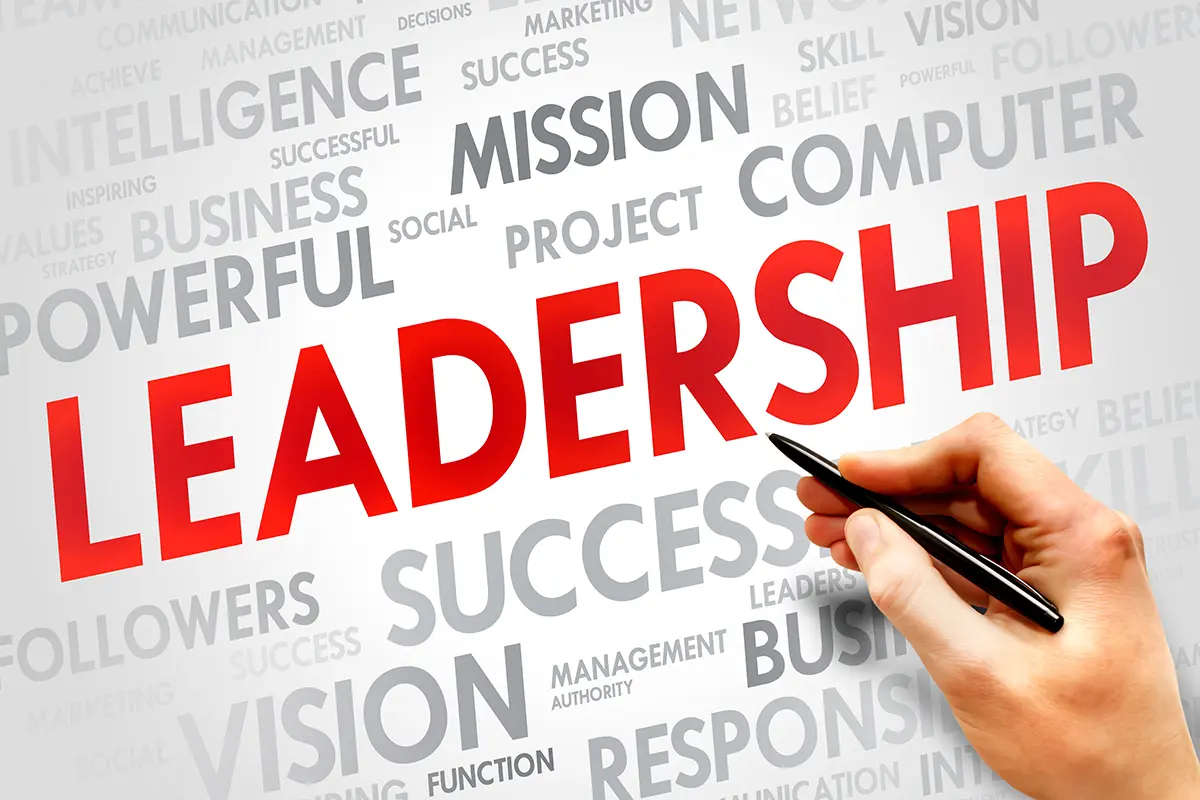
In the ever-evolving landscape of leadership, the true art lies not merely in acquiring a position of authority but in the continuous journey of development and growth. Leadership is not a stagnant destination; rather, it is a dynamic expedition characterized by adaptability, learning, and a relentless pursuit of excellence. Read More
One key aspect of effective leadership development is self-awareness. Successful leaders recognize the significance of understanding their strengths, weaknesses, and the impact of their actions on their teams. Take, for instance, the transformative journey of Satya Nadella, the CEO of Microsoft. Nadella's leadership philosophy emphasizes empathy and a growth mindset. Under his guidance, Microsoft has not only embraced innovation but has also become a symbol of corporate reinvention. Nadella's commitment to self-awareness has been pivotal in fostering a culture of continuous learning within the organization.
Another integral component is the ability to inspire and motivate teams. Elon Musk, the visionary leader behind companies like Tesla and SpaceX, exemplifies this quality. Musk's ambitious goals and unwavering determination serve as a rallying point for his teams. His ability to instill a sense of purpose and passion has been instrumental in propelling his ventures to new heights. Musk's leadership underscores the importance of motivating others toward a shared vision and cultivating a spirit of innovation within the organization.
Strategic thinking and decision-making are indispensable skills in the realm of leadership. Indra Nooyi, the former CEO of PepsiCo, stands out as a paragon of strategic leadership. Nooyi's tenure was marked by a focus on sustainability, innovation, and diversification. Her strategic decisions, such as the "Performance with Purpose" initiative, not only boosted the company's financial performance but also positioned PepsiCo as a socially responsible entity. Nooyi's leadership legacy underscores the significance of foresight, strategic planning, and the ability to make decisions that align with long-term goals.
Leadership development also involves fostering effective communication and collaboration. Sundar Pichai, the CEO of Alphabet Inc. and Google, is renowned for his inclusive leadership style. Pichai's emphasis on open communication, collaboration, and innovation has played a pivotal role in Google's success. His approach fosters a culture where diverse perspectives are valued, and employees feel empowered to contribute their ideas. Pichai's leadership style exemplifies the importance of creating a collaborative environment that fuels creativity and enhances organizational performance.
In the realm of sports, the leadership journey of Serena Williams provides valuable insights. Williams, an icon in the world of tennis, epitomizes resilience, determination, and a commitment to continuous improvement. Her ability to navigate challenges, learn from setbacks, and maintain a winning mindset sets her apart. Williams' leadership journey is a testament to the idea that even in individual pursuits, the principles of leadership development, such as self-motivation and a growth mindset, are integral to sustained success.
Furthermore, the true art of leadership development encompasses adaptability to change. Jeff Bezos, the founder of Amazon, exemplifies this quality through the transformative evolution of his leadership style. Bezos, known for his customer-centric approach, has led Amazon through constant innovation and adaptation. His willingness to embrace change, experiment with new ideas, and focus on long-term goals has propelled Amazon to become a global e-commerce giant. Bezos' leadership journey underscores the importance of adaptability and a forward-thinking approach in navigating the complexities of the business landscape.
The true art of leadership development and growth lies in the holistic integration of self-awareness, motivation, strategic thinking, effective communication, and adaptability. Leaders who embark on a continuous journey of learning, embrace challenges as opportunities for growth, and inspire their teams to excel are the architects of lasting success. By drawing inspiration from exemplary leaders across various fields, individuals can unravel the intricacies of leadership, shaping not only their own trajectories but also fostering environments where others can thrive and contribute to a shared vision of excellence.
The Art of Leadership Language: The Potent Influence of Words

In the intricate dance of leadership, there exists a hidden force, a subtle alchemy that can shape destinies and inspire greatness – the power of words. As leaders, our every utterance carries the potential to ignite motivation, quell doubts, and chart the course for success. This article delves into the profound awareness that leaders must cultivate, recognizing that words are not mere vessels of communication but catalysts for transformation. Read More
The Art of Conscious Communication:
Every interaction within a team is a canvas upon which a leader paints the vision of the future. Words, chosen with intention, become the brushstrokes that craft a narrative of inspiration and unity. Conscious communication involves an acute awareness of the impact each word carries, fostering an environment where clarity, motivation, and empathy converge.
Motivating the Troops:
In the realm of leadership, motivation is the heartbeat that propels a team forward. Leaders who harness the power of uplifting words create a culture of resilience and determination. This article explores the art of crafting motivational messages that resonate, stirring the collective spirit and instilling a sense of purpose among team members.
Navigating Challenges with Words:
In times of adversity, a leader's words can be the beacon that guides a team through stormy waters. Effective leaders recognize the potential for words to either amplify panic or instill calm assurance. The article explores strategies for choosing words that reassure, inspire confidence, and transform challenges into opportunities for growth.
Trust is the bedrock upon which successful leadership stands. Transparent communication, achieved through carefully chosen words, fosters an environment where trust flourishes. This segment of the article delves into the nuances of transparent communication, emphasizing its role in building strong, collaborative teams.
Empathy in Leadership Language:
The ability to empathize is a hallmark of exceptional leadership. Words, when laced with empathy, create connections that transcend professional boundaries. This article navigates the significance of infusing empathy into leadership language, illustrating how understanding and compassion can elevate the leader-team dynamic.
"The Ripple Effect" Words in Organizational Culture:
The impact of a leader's words extends beyond individual interactions; it permeates the organizational culture. This section explores how conscious language choices contribute to shaping a positive, inclusive culture that attracts top talent and fosters innovation.
Leaders Who Mastered the Art:
Real-world examples amplify the narrative, showcasing leaders who harnessed the power of words to steer their organizations to unprecedented success. From iconic speeches to day-to-day interactions, these case studies offer tangible insights into the transformative potential of language in leadership.
The Ongoing Mastery of Leadership Language:
In the grand tapestry of leadership, the mastery of language is an ever-evolving art. This conclusion emphasizes the continuous journey of self-awareness, encouraging leaders to reflect on their words, refine their communication skills, and wield the power of language as a force for positive change.
As leaders embark on this exploration of the alchemy of leadership language, they discover that every word spoken is a brushstroke, creating a masterpiece of inspiration, motivation, and enduring success.
Unleashing the Power of Teamwork: A Collective Journey Towards Unstoppable Success

In the intricate dance of collaborative endeavors, the resonance of a team's success often lies in a harmonious balance – a melody created when individual achievements seamlessly blend into a collective symphony. The essence of this collaborative spirit is beautifully encapsulated in the quote, "A team that doesn't care who gets the credit is unstoppable." This profound sentiment echoes the transformative potential that emerges when a team's focus shifts from individual recognition to a shared commitment to a greater purpose. As we navigate the intricate landscape of teamwork, we explore the profound impact of this philosophy and delve into the principles that make a team truly unstoppable when credit becomes secondary to collective success. Read More
The Essence of Selfless Teamwork:
At the core of the notion that "A team that doesn't care who gets the credit is unstoppable" lies the essence of selfless teamwork. This philosophy champions the idea that individual accolades fade in comparison to the shared triumphs of a united team. It challenges the traditional narrative of success driven by personal recognition and champions a more profound victory born out of collective effort.
In a world that often celebrates individual achievements, the concept of selfless teamwork prompts a paradigm shift. It calls for a culture where the success of the team is prioritized above all else, creating an environment where each member contributes their best without the allure of personal acclaim. This shift in focus unleashes a potent force that propels the team towards unparalleled achievements.
The Limitless Potential of Doing Good:
Ronald Reagan's timeless wisdom, "There is no limit to the amount of good you can do if you don't care who gets the credit," serves as a guiding principle for teams aspiring to make a positive impact. When the pursuit of credit takes a back seat to the desire to do good, a team can harness its collective strength to address challenges, make a difference, and leave a lasting legacy.
Consider the analogy of a humanitarian mission where a team works tirelessly to provide aid to those in need. In such a scenario, the focus on doing good becomes the driving force that transcends individual contributions. The impact of collective efforts is magnified, creating a ripple effect of positive change that extends far beyond the immediate mission.
Amplifying Creativity and Innovation:
The philosophy of selfless teamwork is an elixir for creativity and innovation within a team. When team members are liberated from the constraints of seeking personal credit, they are free to explore uncharted territories, take risks, and push the boundaries of conventional thinking. This freedom to innovate becomes the catalyst for groundbreaking solutions and transformative ideas.
In a corporate setting, this principle can redefine the way teams approach challenges. When the collective goal is paramount, individuals are more likely to share diverse perspectives and engage in collaborative problem-solving. This diversity of thought, fueled by a shared commitment to the team's success, creates an environment where innovation thrives.
Trust as the Cornerstone:
Trust emerges as the cornerstone of selfless teamwork. The idea that "A team that doesn't care who gets the credit is unstoppable" is inherently linked to the level of trust that team members share. In an environment where individuals are confident that their contributions will be acknowledged and valued, trust flourishes, creating a strong foundation for collaboration.
Trust within a team extends beyond professional interactions; it creates a sense of camaraderie where members genuinely care about each other's well-being. This trust becomes the glue that binds the team together, fostering an atmosphere of mutual respect and support. In this environment, the team becomes more than the sum of its parts, achieving feats that surpass individual capabilities.
Unleashing Productivity and Efficiency:
A team that operates with a selfless mindset experiences a notable boost in productivity and efficiency. When the pursuit of personal credit is set aside, energy is channeled toward the actual tasks at hand. The absence of internal competition ensures that team members are focused on achieving collective objectives rather than individual accolades.
Reagan's words resonate powerfully in a corporate context, where achieving organizational objectives requires a coordinated effort. A team that prioritizes collaboration over individual recognition excels in meeting deadlines, exceeding targets, and adapting swiftly to changes. The shared sense of purpose propels the team forward, making them resilient in the face of challenges and agile in pursuing opportunities.
Nurturing a Culture of Continuous Improvement:
The philosophy that "There is no limit to the amount of good you can do if you don't care who gets the credit" embodies a commitment to continuous improvement. In a culture where individuals are driven by a collective desire to achieve greatness, there is a natural inclination towards learning, growing, and evolving together. Mistakes are viewed as opportunities for learning, and successes are celebrated as team achievements.
This culture of continuous improvement extends to the organizational level, where the entire company becomes a learning entity. A team that values collaboration over credit recognizes the importance of staying abreast of industry trends, adopting new technologies, and refining processes. The result is an organization that remains innovative, adaptive, and forward-thinking.
Realizing Extraordinary Success Stories:
The philosophy that "A team that doesn't care who gets the credit is unstoppable" has been exemplified in countless success stories across various domains. From the triumphs of innovative startups to the sustained excellence of established corporations, the common thread is often a team that operates as a unified force.
Consider the accomplishments of SpaceX, where Elon Musk's vision of interplanetary colonization is propelled by a team dedicated to pushing the boundaries of space exploration. The success of SpaceX is not attributed solely to Musk's brilliance but is a testament to the collective efforts of engineers, scientists, and professionals who share a commitment to advancing humanity's reach beyond Earth.
Leadership's Role in Fostering Selfless Teamwork:
In cultivating a team that operates with a selfless mindset, leadership plays a pivotal role. Leaders who prioritize collaboration and de-emphasize individual credit set the tone for the entire organization. Leading by example, they demonstrate that success is a collective achievement, and every contribution, regardless of its visibility, is valued.
Leaders who embody the ethos of "A team that doesn't care who gets the credit is unstoppable" create an environment where team members feel empowered, acknowledged, and motivated to give their best. They cultivate a culture where credit is not a finite resource to be hoarded but a renewable energy that grows with each shared success.
In the symphony of teamwork, the crescendo of success is reached when individual notes blend seamlessly into a harmonious whole. The philosophy that "A team that doesn't care who gets the credit is unstoppable" beckons teams to embrace a culture of selfless collaboration, where the pursuit of a common goal takes precedence over individual recognition. This philosophy not only propels teams towards unparalleled achievements but also fosters a culture of innovation, trust, and continuous improvement.
As organizations navigate the complexities of a dynamic world, the transformative power of selfless teamwork emerges as a guiding principle. In transcending the limits of individual accomplishments, teams become architects of extraordinary success stories, leaving an indelible mark on the landscape of their industries. The journey towards unstoppable success begins when teams unite under a common banner, fueled by the belief that the true measure of triumph lies not in personal accolades but in the collective good achieved together.
Strategic Networking and Alliances: Building Collaborative Partnerships for Business Advancement

In modern business, strategic networking and alliances have emerged as powerful catalysts for driving growth and achieving business advancement. This paradigm shift reflects an acknowledgment that success is often not solely determined by internal capabilities but by the strength of collaborative partnerships forged with external entities. From startups to established corporations, organizations are increasingly recognizing the strategic value of building networks and alliances to enhance their competitive edge, foster innovation, and capitalize on mutually beneficial opportunities. The Foundation of Strategic Networking: Strategic networking is more than just exchanging business cards at events; it involves a deliberate effort to cultivate relationships that align with organizational objectives. At its core, strategic networking is about creating a web of connections that extends beyond the immediate business circle. It involves engaging with individuals and organizations whose expertise, resources, or market presence complement and contribute to the overarching goals of your business. Read More
Consider the scenario of a technology startup seeking to enter new markets. Through strategic networking, the startup can identify potential partners, distributors, or collaborators with established footholds in those markets. By fostering relationships with these entities, the startup gains access to invaluable market insights, expands its reach, and accelerates its market entry strategy.
Unlocking Collaborative Opportunities: Strategic alliances, on the other hand, represent formalized partnerships between organizations that agree to work together towards shared objectives. These alliances can take various forms, including joint ventures, partnerships, or collaborations. A prime example is the alliance formed between Apple and Nike to create the Apple Watch Nike+, a product that seamlessly integrates technology and sportswear expertise.
Such collaborations are not merely about combining resources; they're about tapping into each partner's strengths to create something that transcends individual capabilities. In the interconnected world of business, strategic alliances enable organizations to pool expertise, share risks, and access new markets, ultimately fostering innovation and enhancing competitiveness.
Navigating Industry Challenges: In the face of industry challenges and disruptions, strategic networking and alliances provide a buffer against uncertainty. Take the healthcare sector, for instance, where the complexity of regulatory environments and the rapid evolution of medical technologies necessitate collaboration. Pharmaceutical companies may form alliances with research institutions to expedite drug development, leveraging shared knowledge and resources to navigate the intricate landscape of the industry.
This collaborative approach extends beyond traditional industry boundaries. In the era of digital transformation, organizations are forming alliances with tech companies, startups, and even competitors to stay ahead of the curve. The automotive industry's collaboration with tech giants for the development of electric and autonomous vehicles exemplifies the convergence of industries for mutual benefit.
Startups and the Power of Networks: For startups, strategic networking can be a game-changer. Often operating with limited resources, startups can leverage networks to access mentorship, funding, and market connections that accelerate their growth trajectory. Business incubators and accelerators exemplify the power of strategic networks in providing startups with a supportive ecosystem, connecting them with industry experts, investors, and potential customers.
Startups can form strategic alliances to overcome barriers such as limited market reach or production capacity. Collaborations with established companies can provide startups with the necessary resources and mentorship, while the established companies benefit from the agility and innovation inherent in startup culture.
Key Components of Successful Networking: Building an effective network requires a strategic approach. It involves identifying key stakeholders, nurturing relationships, and leveraging opportunities for mutual benefit. Active participation in industry events, conferences, and online forums provides avenues for connecting with like-minded professionals and potential collaborators. Networking is not a one-time endeavor but an ongoing process that demands genuine engagement, trust-building, and a commitment to adding value to the network.
Similarly, strategic alliances necessitate careful consideration of partner selection and alignment of objectives. Shared values, complementarity of resources, and a clear understanding of mutual expectations form the foundation of successful alliances. Effective communication and transparency are vital, ensuring that both parties are aligned in their goals and committed to the collaborative journey.
Challenges and Mitigation Strategies: While the benefits of strategic networking and alliances are substantial, challenges are inherent in navigating collaborative endeavors. Issues such as conflicting objectives, cultural differences, and misaligned expectations can arise. Effective communication and the establishment of clear governance structures are paramount to overcoming these challenges. Regular evaluations and adaptability to evolving circumstances ensure that the alliance remains dynamic and responsive to changing business environments.
Organizations must recognize that not all collaborations will be successful, and a certain degree of risk is inherent in forming alliances. Learning from setbacks and continuously refining collaboration strategies contribute to building resilience and ensuring long-term success.
Case Studies in Strategic Success: Several organizations have showcased the transformative power of strategic networking and alliances in achieving business advancement. Cisco's ecosystem of technology partners, for instance, exemplifies how strategic alliances can create a comprehensive and interoperable suite of solutions for customers. By collaborating with various technology providers, Cisco extends its reach and offers a more robust set of solutions than it could develop in isolation.
In the realm of strategic networking, LinkedIn itself serves as a compelling case study. The platform has become a hub for professionals to connect, share insights, and forge strategic partnerships. From job seekers to business leaders, individuals leverage the network to access opportunities, share knowledge, and build relationships that contribute to personal and professional growth.
The Future of Collaboration: Looking ahead, the future of business success lies in the ability to navigate the intricacies of strategic networking and alliances. As industries evolve and global challenges demand innovative solutions, organizations that can seamlessly integrate into collaborative ecosystems will thrive. The rise of industry clusters, where organizations with complementary capabilities coalesce, underscores the shift towards collaborative business models.
Strategic networking and alliances represent not just a strategy but a fundamental shift in the way businesses operate. In a world that demands agility, innovation, and resilience, the power of collaboration cannot be overstated. Whether connecting with industry peers, forming alliances with strategic partners, or nurturing a network of mentors, organizations that prioritize collaboration are poised to not only weather challenges but also to lead the way in shaping the future of their industries. Strategic networking and alliances are not just tools for business advancement; they are the cornerstone of a progressive and interconnected business landscape.
Today is a Great Day to be Amazing: Embracing Positivity and Personal Growth

In the hustle and bustle of our daily lives, it's easy to get caught up in the monotony of routine or be overwhelmed by challenges. However, amidst the chaos, there's a powerful mantra that can serve as a guiding light— “Today is a great day to be amazing.” This simple yet profound phrase encapsulates the essence of embracing positivity, personal growth, and the boundless opportunities that each new day brings. Read More
The Power of Positive Affirmation: At the core of "Today is a great day to be amazing" lies the concept of positive affirmation. Affirmations are declarations of truth that, when repeated consistently, have the power to shape our mindset and influence our actions. By starting the day with the affirmation that today is an opportunity to be amazing, we set a positive tone for our thoughts and actions, paving the way for a more fulfilling and productive day.
Embracing the Present Moment: The phrase encourages us to focus on the present moment, recognizing that each day is a fresh canvas ready to be painted with our intentions and actions. Instead of dwelling on past mistakes or worrying about the uncertainties of the future, the affirmation invites us to be fully present in the now. This mindfulness fosters a sense of gratitude for the opportunities and experiences that today holds.
Overcoming Challenges with Resilience: "Today is a great day to be amazing" doesn't dismiss the existence of challenges but encourages us to face them with resilience and a positive mindset. Challenges are inevitable, but our response to them determines the course of our day and, ultimately, our personal growth. By viewing challenges as opportunities for learning and growth, we transform obstacles into stepping stones toward greatness.
Cultivating a Growth Mindset: The affirmation aligns seamlessly with the concept of a growth mindset—a belief that our abilities and intelligence can be developed with dedication and effort. Embracing a growth mindset opens doors to continuous learning and improvement. Each day becomes a chance to expand our skills, overcome limitations, and inch closer to our aspirations.
Setting Daily Intentions: "Today is a great day to be amazing" serves as a reminder to set positive intentions for the day ahead. Rather than passively letting the day unfold, we take an active role in shaping our experiences. Setting intentions helps clarify our goals, whether they are personal or professional, and provides a roadmap for the actions needed to make them a reality.
Spreading Positivity to Others: The power of positivity is contagious. When we believe that today is a great day to be amazing, we radiate positive energy that influences those around us. Whether it's through a smile, a kind word, or a supportive gesture, our positivity has a ripple effect, creating a more uplifting and collaborative environment.
Celebrating Small Victories: The affirmation encourages us to celebrate small victories along the way. Every accomplishment, no matter how minor, contributes to our journey of personal growth. By acknowledging and appreciating these victories, we build momentum and confidence, propelling us further toward our larger goals.
Reflecting on Personal Growth: At the end of the day, reflecting on the affirmation allows us to assess our actions, mindset, and accomplishments. Did we seize the opportunities to be amazing? What did we learn? How did we contribute positively to our own growth and the well-being of others? These reflections create a cycle of continuous improvement and reinforce the belief that every day is an opportunity for greatness.
"Today is a great day to be amazing" encapsulates the transformative power of positive affirmation and the mindset needed to navigate life's challenges with resilience and purpose. By embracing the present moment, cultivating a growth mindset, setting daily intentions, spreading positivity, celebrating small victories, and reflecting on personal growth, we unlock the potential within ourselves to make each day truly amazing. As we carry this mantra forward, let it be a guiding force that inspires us to embrace the opportunities, overcome challenges, and be the architects of our own greatness.
Today is indeed a great day to be amazing!
Navigating the Expectation Maze: Common Mistakes Made by Business Leaders and Strategies for Success
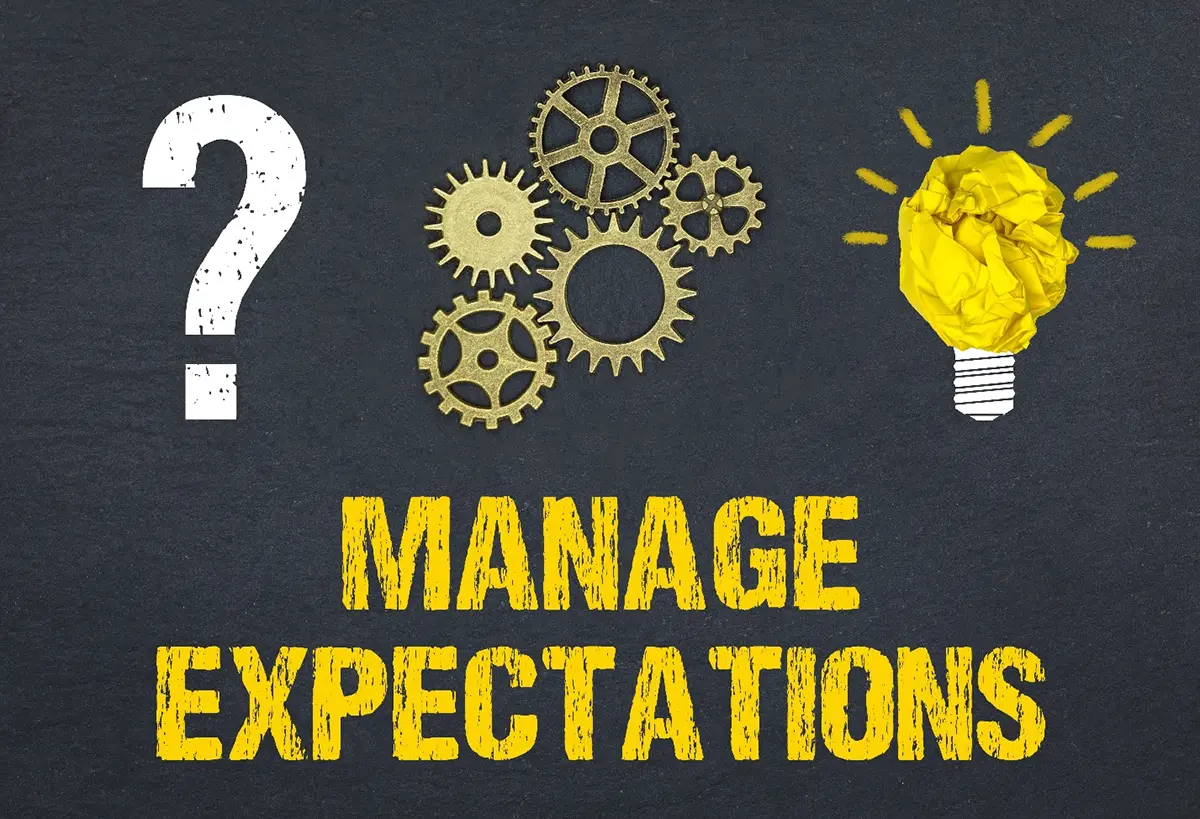
In the dynamic world of business, managing expectations is a critical skill for leaders aiming to foster positive relationships, drive productivity, and achieve organizational success. However, many business leaders find themselves entangled in the expectation maze, facing common pitfalls that can hinder their effectiveness. In this article, we'll explore some prevalent mistakes made by business leaders in managing expectations and delve into actionable solutions to navigate these challenges successfully. Read More
1. Setting Unrealistic Goals:
One common mistake business leaders make is setting unrealistic goals for their teams or projects. Unrealistic expectations can lead to stress, burnout, and decreased morale among team members. To address this, leaders should engage in a collaborative goal-setting process, ensuring that objectives are challenging yet achievable. Open communication about the rationale behind goals and the resources available for their attainment fosters a shared understanding, promoting a more realistic and sustainable approach.
2. Lack of Clarity in Communication:
Communication breakdowns are a significant challenge in managing expectations. Leaders may assume that their team members comprehend their expectations, but lack of clarity can result in confusion and misunderstandings. Business leaders should prioritize clear and transparent communication, employing various channels such as team meetings, written documentation, and one-on-one discussions. Encouraging an open-door policy and actively seeking feedback ensures that everyone is on the same page, reducing the risk of misinterpretation.
3. Ignoring Individual Differences:
Business leaders often overlook the diverse skill sets, preferences, and working styles within their teams. Treating everyone the same way can lead to dissatisfaction and unmet expectations. Leaders should take the time to understand the strengths and weaknesses of individual team members, tailoring expectations and responsibilities accordingly. This personalized approach not only maximizes each team member's potential but also contributes to a more inclusive and collaborative work environment.
4. Failure to Manage Scope Creep:
Scope creep occurs when additional tasks or expectations are added to a project without a corresponding extension of resources or timeline. Leaders who fail to manage scope creep risk overwhelming their teams and compromising the quality of work. To combat this, leaders should establish clear project scopes from the outset, regularly review progress against objectives, and be assertive in resisting unwarranted additions. Open communication about potential changes and their impact ensures that everyone is aware of the project's boundaries.
5. Micromanagement:
Micromanaging is a common pitfall that stems from a lack of trust in team members. It not only hampers creativity and innovation but also demoralizes employees. Business leaders should foster a culture of trust and empowerment, providing their teams with the autonomy to execute tasks. Setting clear expectations and establishing regular check-ins for updates can strike a balance between oversight and freedom, promoting a more positive and productive work environment.
6. Overlooking Emotional Intelligence:
Effective leaders recognize the importance of emotional intelligence in managing expectations. Neglecting the emotional aspects of team dynamics can lead to unaddressed concerns, dissatisfaction, and ultimately, high turnover. Leaders should develop their emotional intelligence by actively listening to team members, acknowledging their perspectives, and empathizing with their concerns. This approach fosters stronger relationships, boosts morale, and ensures that expectations are aligned with the emotional well-being of the team.
7. Failure to Adapt to Change:
Change is inevitable in the business world, and leaders who resist or fail to adapt to it may struggle with managing expectations effectively. Business leaders should embrace a growth mindset, encouraging their teams to view change as an opportunity for learning and development. Communicating the rationale behind changes, providing necessary support, and actively involving the team in decision-making processes can help manage expectations during periods of transition.
8. Inconsistent Feedback:
Consistent feedback is essential for growth and improvement. Leaders who provide feedback sporadically or fail to acknowledge positive contributions may create uncertainty among team members. To address this, leaders should establish regular feedback mechanisms, recognizing both individual and collective achievements. Constructive criticism should be delivered in a timely and respectful manner, fostering a culture of continuous improvement.
Navigating the expectation maze is a crucial aspect of effective leadership. By addressing common mistakes such as setting unrealistic goals, improving communication clarity, acknowledging individual differences, managing scope creep, avoiding micromanagement, incorporating emotional intelligence, adapting to change, and providing consistent feedback, business leaders can enhance their ability to manage expectations successfully. Embracing these solutions fosters a positive work environment, enhances team collaboration, and ultimately contributes to the long-term success of the organization. Leaders who prioritize effective expectation management are better equipped to steer their teams through challenges, inspire confidence, and achieve sustainable growth.
The Shifting Dynamics of Boardroom Activism

When talking about corporate dynamics, a new breed of activists is emerging, challenging traditional perceptions and redefining the role of boardroom influencers. The term "activist" has long been associated with external forces pushing for societal or political change. However, in today's corporate realm, the lines between external activists and those within the boardroom are becoming increasingly blurred. Read More
Traditionally, activists were seen as individuals advocating for change from the outside, often challenging the status quo and demanding reforms to the capitalist system. However, a paradigm shift is underway, and the face of activism within corporate walls is changing.
Boardroom activists are individuals who, while adhering to company dress codes and fulfilling their roles as corporate decision-makers, are also raising their voices for change from within. The once-clear boundaries of a director's role are now more fluid, as these individuals navigate their responsibilities while championing social and political causes.
Statistics indicate a noticeable rise in this internal activism. A growing number of board members, traditionally viewed as stewards of shareholder interests, are leveraging their positions to advocate for broader societal change. This shift challenges preconceived notions about the dichotomy between corporate insiders and external activists.
These boardroom activists are not merely figures in suits; they are individuals who recognize the power vested in their roles and seek to utilize it for a broader purpose. Their calls for change encompass a range of issues, from environmental sustainability to social justice and ethical business practices.
The evolving environment of boardroom activism brings to light the complexity of corporate decision-making in the 21st century. Companies are now grappling with the challenge of balancing shareholder interests with a broader commitment to societal well-being. It prompts discussions on the nature of corporate responsibility and the evolving expectations placed on those at the helm.
As we navigate this era of change, it is essential to recognize that boardroom activism is not a one-size-fits-all concept. The motivations, causes, and methods employed by these internal advocates vary widely. Some may see it as a genuine commitment to positive change, while others may view it as a strategic move to align with shifting societal values.
In conclusion, the landscape of activism within the boardroom is undeniably transforming. The traditional image of an activist as an outsider is evolving to include those who operate within the corporate machinery. As the dynamics continue to shift, companies and stakeholders must adapt to this new reality, understanding that the boardroom is not immune to the calls for change echoing beyond its walls. The future of corporate governance may well be shaped by these boardroom activists, challenging us to reconsider our assumptions about where and how positive change can be instigated.
Unveiling the Most Overlooked Secret of Success: Where Preparation Meets Opportunity

In the intricate dance of life, success often reveals itself as an alchemical fusion—a magical convergence of meticulous preparation and opportune moments. The profound saying, "Success is when preparation meets opportunity," encapsulates the essence of this transformative process. As we delve into the intricacies of this philosophy, we unravel the profound truth that success is not merely chance; it is a deliberate interplay of readiness and the timely emergence of favorable circumstances. Read More
The Art of Preparation:
Preparation is the silent architect of success, laying the groundwork for achievement long before opportunity knocks. It is a deliberate and ongoing process that involves honing skills, acquiring knowledge, and cultivating the mindset necessary for seizing opportunities when they arise.
Continuous Learning and Skill Development: Success is an evolving journey, and preparation involves a commitment to continuous learning. Whether in the realms of business, academia, or personal growth, those who aspire to succeed understand the importance of staying abreast of industry trends, acquiring new skills, and adapting to a dynamic landscape.
Building a Resilient Mindset: Preparation extends beyond acquiring tangible skills; it encompasses cultivating a resilient and growth-oriented mindset. The ability to navigate challenges, learn from setbacks, and maintain a positive outlook is integral to success. A prepared mind is one that can weather storms and capitalize on opportunities with unwavering confidence.
Setting Clear Goals: Goal-setting is the compass that guides preparation. Successful individuals meticulously outline their objectives, breaking them down into manageable milestones. This strategic approach not only provides direction but also serves as a roadmap for effective preparation.
The Dance with Opportunity:
Opportunity, like a fleeting muse, presents itself unexpectedly. However, it is the prepared mind and spirit that can recognize and seize these moments when they arise. The intersection of readiness and opportunity is where success truly blossoms.
Recognizing and Embracing Opportunities: Prepared individuals have an acute awareness that opportunities often disguise themselves as challenges. It is the ability to perceive these challenges as potential turning points that sets the stage for success. Recognizing opportunities requires a keen observation of the environment, a willingness to step outside comfort zones, and an openness to change.
Strategic Decision-Making: The prepared mind is adept at making strategic decisions in the face of opportunity. Whether it's a career move, a business venture, or a personal choice, success often hinges on the ability to make informed decisions swiftly. Prepared individuals have a clarity of purpose that guides them in evaluating and seizing the right opportunities.
Embracing Risk with Calculated Confidence: Success often involves an element of risk, and prepared individuals understand the delicate balance between taking risks and mitigating potential downsides. Calculated risk-taking is an art that requires thorough preparation, informed decision-making, and the courage to embrace uncertainty.
Case Studies in the Symphony of Success:
- The Entrepreneurial Odyssey: Preparation: Successful entrepreneurs don't simply stumble upon opportunities; they create them through rigorous preparation. From market research and business planning to building a resilient team, entrepreneurs lay the groundwork for success. Opportunity: The opportune moment may come in the form of a gap in the market, a technological breakthrough, or changing consumer preferences. The prepared entrepreneur seizes this moment, leveraging their groundwork for transformative business success.
- Academic Achievement: Preparation: Academic success is rooted in years of diligent study, research, and skill development. Prepared students approach their education with a commitment to continuous learning and a strategic mindset. Opportunity: Opportunities in academia may manifest in research projects, internships, or networking events. A prepared student maximizes these opportunities, translating academic excellence into real-world success.
- Leadership Triumphs: Preparation: Leaders ascend to success through years of refining their leadership skills, understanding their industries, and fostering strong interpersonal relationships. Opportunity: Leadership opportunities often arise during times of change or challenges within organizations. Prepared leaders step into these roles with confidence, having cultivated the skills and mindset necessary to guide their teams to success.
Nurturing a Culture of Success:
In the professional landscape, organizations that foster a culture of preparation and opportunity create an environment where success becomes a collective endeavor.
- Cultivating a Learning Culture: Organizations committed to success prioritize continuous learning. They provide employees with opportunities for professional development, training programs, and mentorship to ensure that the workforce remains prepared for emerging opportunities.
- Encouraging Innovation and Adaptability: Success often accompanies innovation, and prepared organizations encourage a culture of creativity and adaptability. They empower employees to think outside the box, embrace change, and capitalize on opportunities for growth and improvement.
In the grand view of success, the harmonious blend of preparation and opportunity weaves a narrative of achievement and fulfillment. As we navigate our personal and professional journeys, let us internalize the profound truth that success is not a stroke of luck or happenstance; it is the result of meticulous preparation meeting opportune moments. The alchemy of success lies within our capacity to continuously prepare, embrace change, and recognize the transformative power of the opportunities that present themselves along the way.
The Virtue of Patience: Unlocking the Door to Success
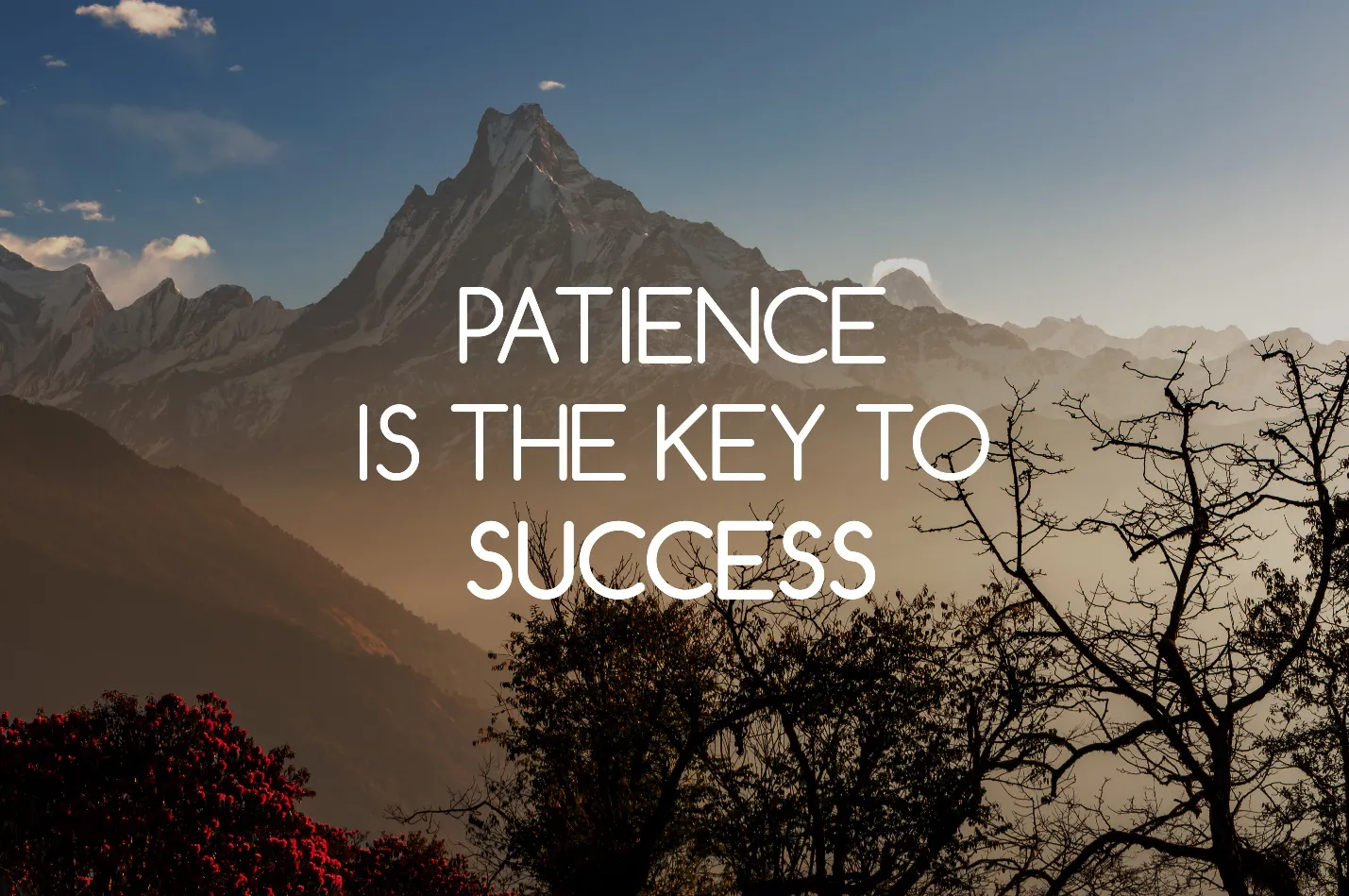
In a world characterized by constant hustle and a fervent pursuit of instant gratification, the timeless virtue of patience often takes a back seat. However, for those navigating the labyrinth of success, patience emerges not merely as a virtue but as the key to unlocking doors that lead to enduring accomplishments and fulfillment. Read More
Nature of Success and the Virtue of Patience:
Success is often perceived as a destination, a summit to be conquered swiftly. However, the journey towards success is rarely a straight, expedited path. It is in the twists, turns, and unexpected detours that the true test of patience unfolds. Patience isn't merely the ability to wait; it is the capacity to maintain a positive attitude and steady perseverance while confronting challenges and uncertainties.
Navigating the Ups and Downs:
Every success story is adorned with setbacks, failures, and moments of doubt. Patience acts as a guiding force during these tumultuous times. It provides the clarity to understand that obstacles are not roadblocks but opportunities for growth and learning. The ability to endure setbacks with resilience and a steadfast spirit often distinguishes those who merely survive from those who truly thrive.
Building Sustainable Foundations:
Success that stands the test of time is built on sturdy foundations. Whether in business, career, or personal endeavors, the haste to achieve immediate results can compromise the quality of the journey. Patience allows for the meticulous construction of these foundations. It is the architect that ensures each step taken is thoughtful, deliberate, and aligned with long-term goals.
Cultivating Expertise and Mastery:
Greatness is often synonymous with mastery, a level of expertise that can only be achieved through patient dedication and continuous learning. Patience fosters a mindset that embraces the process of becoming an expert in a chosen field. Whether acquiring new skills, honing existing ones, or gaining profound insights, the patient pursuit of mastery is a journey that cannot be rushed.
Nurturing Relationships and Collaborations:
Success is not a solitary journey; it is interwoven with relationships and collaborations. Patience plays a pivotal role in nurturing these connections. It allows for the development of genuine, meaningful relationships based on trust, understanding, and mutual respect. In the world of networking and collaborations, the value of patience becomes evident as it weaves a tapestry of enduring partnerships.
Resisting the Allure of Instant Gratification:
In an age of rapid technological advancements and instant access to information, the allure of instant gratification can be compelling. However, true success requires resisting the impulse for immediate results. Patience enables individuals to resist shortcuts and quick fixes, steering them towards a more profound, sustainable form of achievement.
Inspiring Others Through Patience:
Leadership, in any domain, is a beacon that inspires others to tread the path of success. Patience is a leadership quality that resonates deeply. Leaders who exhibit patience not only navigate challenges with grace but also serve as mentors who inspire others to endure, persevere, and believe in the power of their journey.
In the tapestry of success, patience is the thread that weaves together moments of adversity, triumphs, and personal growth. It is the silent force that propels individuals towards sustainable achievements, enduring relationships, and a profound sense of fulfillment. As we navigate our respective journeys, let us not underestimate the transformative power of patience - the key that opens doors to a success that is not merely achieved but embraced, celebrated, and cherished. In a world that moves at a frenetic pace, let patience be our guiding compass towards lasting success.
Unleashing Potential: Embracing Power and Overcoming Fear in Business Success
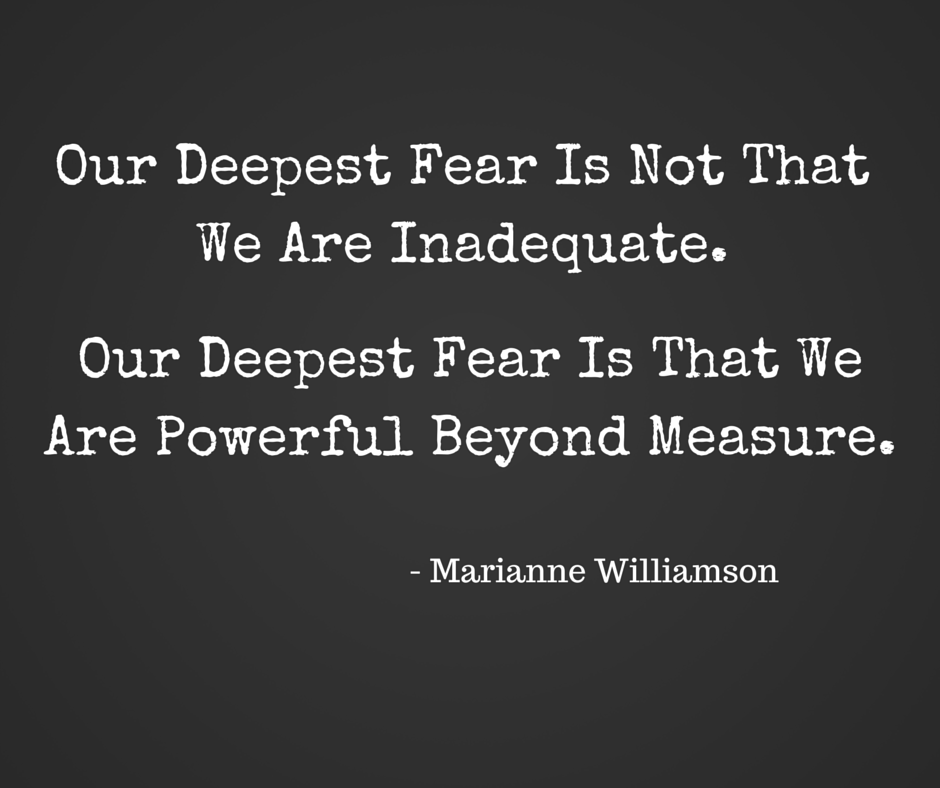
In the intricate dance of life, we often find ourselves entangled in the web of challenges, setbacks, and unforeseen obstacles. In these moments of adversity, where the path forward seems obscured, it's easy to succumb to despair. Yet, as Albert Einstein once eloquently put it, "In the middle of difficulty lies opportunity." This profound phrase encapsulates the essence of resilience, urging individuals to see beyond the immediate hardships and recognize the hidden doorways to growth, innovation, and success. Read More
In the competitive landscape of business, where challenges are ubiquitous and uncertainties abound, the fear of failure is a common narrative. However, Williamson's quote challenges us to look beyond this conventional fear and confront a deeper, more nuanced apprehension – the fear of our own latent power and the transformative impact it can have on our professional journey.
Embracing Power and Potential:
In business, acknowledging one's capabilities and recognizing the inherent power within is pivotal for success. The fear of being powerful beyond measure often stems from the responsibility and expectations associated with success. Entrepreneurs, leaders, and professionals may grapple with imposter syndrome, hesitating to step into roles that demand their full potential. This fear can become a limiting factor, hindering innovation, creativity, and the pursuit of ambitious goals.
To overcome this fear, individuals must embrace their own power. Understanding that success is not a solitary endeavor but a collective outcome of effort, skill, and leadership allows for a paradigm shift. Recognizing one's potential empowers individuals to take calculated risks, make bold decisions, and contribute meaningfully to their organizations.
Moving Beyond Comfort Zones:
Williamson's quote challenges individuals to confront the fear of their own power by venturing beyond their comfort zones. Success in business often requires stepping into uncharted territory, tackling unfamiliar challenges, and assuming leadership roles that demand the full expression of one's capabilities. It's within these unexplored realms that true potential is realized.
Entrepreneurs, for instance, must grapple with the fear of their ventures' success. The fear of being powerful beyond measure can manifest in doubts about managing growth, leading teams, or shouldering the responsibility that comes with achieving ambitious business goals. However, it's precisely by acknowledging and embracing their own power that entrepreneurs can lead their ventures to unprecedented success.
Fostering a Culture of Empowerment:
In the organizational context, leaders play a pivotal role in shaping a culture that encourages individuals to embrace their power. A workplace that fosters empowerment nurtures creativity, innovation, and a sense of ownership among employees. By dispelling the fear associated with being powerful, leaders create an environment where each team member feels inspired to contribute their best.
Encouraging open communication, recognizing individual strengths, and providing opportunities for professional development are integral aspects of fostering empowerment. When employees feel supported and valued, they are more likely to overcome their fear of being powerful beyond measure and contribute proactively to the organization's success.
Mitigating the Fear of Failure:
The fear of being powerful beyond measure often intertwines with the fear of failure. Individuals may fear the expectations that come with success, worrying that they won't meet the standards set for them. This fear can lead to self-sabotage, missed opportunities, and a reluctance to take on leadership roles.
To mitigate this fear, it's crucial to redefine failure as a steppingstone to success. In the world of business, setbacks and challenges are inherent. Instead of fearing the responsibilities that come with success, individuals can view failures as opportunities to learn, adapt, and refine their approach. This mindset shift not only alleviates the fear of one's power but also propels individuals toward greater achievements.
Overcoming Limiting Beliefs:
Williamson's quote underscores the importance of challenging limiting beliefs about oneself. In the pursuit of success, individuals may carry ingrained notions of inadequacy or unworthiness. These beliefs act as self-imposed barriers, preventing individuals from fully realizing their potential.
Overcoming these limiting beliefs requires introspection and a commitment to personal growth. Seeking mentorship, engaging in continuous learning, and surrounding oneself with a supportive network can help dismantle these mental barriers. By challenging the fear associated with being powerful, individuals can redefine their self-perception and unlock their true capabilities.
Marianne Williamson's quote serves as a poignant reminder that success in business is not solely hindered by external challenges or inadequacies. Instead, the fear of being powerful beyond measure can be a formidable obstacle. Embracing one's power, stepping beyond comfort zones, fostering a culture of empowerment, mitigating the fear of failure, and overcoming limiting beliefs are essential steps toward realizing untapped potential.
Success in business requires individuals to confront and conquer this fear, recognizing that their power is not a threat but a catalyst for positive change. As professionals navigate the complexities of the business world, Williamson's quote encourages them to shed the fear of their own greatness and, in doing so, unlock a realm of possibilities that lead to unprecedented success and fulfillment.
Navigating Challenges: Unveiling Opportunities in the Midst of Difficulty

In the intricate dance of life, we often find ourselves entangled in the web of challenges, setbacks, and unforeseen obstacles. In these moments of adversity, where the path forward seems obscured, it's easy to succumb to despair. Yet, as Albert Einstein once eloquently put it, "In the middle of difficulty lies opportunity." This profound phrase encapsulates the essence of resilience, urging individuals to see beyond the immediate hardships and recognize the hidden doorways to growth, innovation, and success. Read More
The journey of life is inherently peppered with difficulties, both personal and professional. From unexpected career setbacks to navigating the complexities of personal relationships, challenges come in myriad forms. It is during these turbulent times that the wisdom embedded in Einstein's words takes center stage.
Embracing the Growth Mindset: At the core of Einstein's philosophy is the idea of embracing a growth mindset—a perspective that perceives challenges not as insurmountable roadblocks but as steppingstones toward personal and professional development. In the face of adversity, a growth mindset prompts individuals to view difficulties as opportunities for learning, innovation, and self-discovery.
In the professional realm, encountering challenges in the workplace is inevitable. Whether it be a project gone awry, financial setbacks, or internal conflicts, these difficulties present a unique chance for leaders and employees alike to reevaluate, strategize, and implement positive change. A workplace that embraces a growth mindset transforms difficulties into opportunities for skill enhancement, team collaboration, and organizational evolution.
Lessons from History: Throughout history, iconic figures and successful individuals have exemplified the transformative power of seizing opportunities amid difficulties. Consider the story of Steve Jobs, co-founder of Apple Inc. Faced with the adversity of being ousted from his own company in the 1980s, Jobs utilized this setback as an opportunity for personal growth and innovation. His time away from Apple allowed him to start NeXT and Pixar, ventures that not only showcased his creative prowess but eventually led to his triumphant return to Apple, where he revolutionized the tech industry.
This historical narrative echoes the sentiment that difficulties, when confronted with a positive mindset, can be catalysts for innovation and unforeseen achievements. Jobs' journey serves as a testament to the latent opportunities hidden within the heart of adversity.
Adapting to Change: "In the middle of difficulty lies opportunity" is a call to adaptability, encouraging individuals to embrace change rather than fear it. The capacity to adapt is a hallmark of successful individuals and organizations. In a world that is constantly evolving, those who can navigate challenges with a flexible mindset discover opportunities for growth, innovation, and redefined success.
Consider the business landscape shaped by the COVID-19 pandemic. Organizations faced unprecedented difficulties as they grappled with remote work, supply chain disruptions, and shifting consumer behaviors. However, those agile enough to adapt seized the opportunity to innovate. Remote work spurred advancements in digital collaboration tools, supply chain challenges fostered resilience and diversification, and changing consumer behaviors led to the rise of new business models. The difficulties presented by the pandemic became a crucible for reinvention and adaptation.
Cultivating Resilience: Resilience is the bedrock upon which opportunities emerge from difficulties. When confronted with setbacks, disappointments, or failures, resilient individuals don't simply bounce back; they bounce forward. Resilience empowers individuals to extract valuable lessons from challenges, building a foundation for future success.
In the corporate world, resilience is a cornerstone of effective leadership. Leaders who embody resilience inspire their teams to navigate difficulties with a sense of purpose and optimism. They foster a culture where challenges are not seen as roadblocks but as avenues for collective growth and achievement.
Fostering Creativity and Innovation: Difficulties can serve as the breeding ground for creativity and innovation. When faced with constraints or obstacles, individuals are often compelled to think outside the box, seeking unconventional solutions to problems. This innovative spirit is the crux of the phrase "In the middle of difficulty lies opportunity."
Consider the story of James Dyson, the inventor of the bagless vacuum cleaner. Dyson faced numerous setbacks and rejections on his journey to create a groundbreaking product. However, his persistence and commitment to finding a solution led him to an opportunity that revolutionized the vacuum cleaner industry. Dyson's ability to see opportunity in the midst of difficulty showcases the transformative power of creativity and innovation.
Building Character and Wisdom: Difficulties are not just external challenges; they also shape our internal landscape, fostering the development of character and wisdom. The journey through hardship often unveils facets of our resilience, determination, and adaptability that may have remained dormant in times of ease. The phrase by Einstein is a reminder that in the middle of difficulty, we discover not only external opportunities but also the opportunity for profound self-discovery and personal growth.
Strategies for Embracing Opportunities in Difficulty:
- Mindful Reflection: When faced with challenges, take the time to reflect mindfully. Assess the situation, identify potential lessons, and explore alternative perspectives. Mindful reflection provides clarity and opens the door to hidden opportunities.
- Collaborative Problem-Solving: Engage in collaborative problem-solving. Seek input from colleagues, team members, or mentors. The diversity of perspectives often reveals innovative solutions that may not be apparent when facing difficulties in isolation.
- Continuous Learning: Approach difficulties as learning opportunities. Invest time in acquiring new skills, expanding your knowledge base, and staying abreast of industry trends. Continuous learning not only enhances your capabilities but positions you to seize emerging opportunities.
- Resilience Building: Cultivate resilience through practices such as mindfulness, positive affirmations, and maintaining a healthy work-life balance. Building resilience equips you to navigate difficulties with grace and fortitude.
- Adaptive Leadership: In organizational settings, practice adaptive leadership. Create a culture that embraces change, encourages innovation, and views challenges as opportunities for improvement. Adaptive leaders inspire teams to collectively navigate difficulties and seize opportunities.
"In the middle of difficulty lies opportunity" is a timeless mantra that transcends eras and resonates across diverse spheres of life. It encapsulates the essence of a growth mindset, resilience, and the transformative power of positive thinking. As we navigate the complexities of our personal and professional journeys, let us internalize this wisdom, recognizing that every difficulty is a gateway to unforeseen opportunities. Whether in the pursuit of personal goals or the challenges faced by businesses and societies at large, the phrase by Einstein serves as a guiding beacon, reminding us that within the heart of adversity lies the untapped potential for growth, innovation, and extraordinary achievements.
The Psychology of Motivation: Incentivizing Performance and Driving Results in Today's Fast-Paced Business World

In the world of business, where competition is fierce, and the pace is relentless, understanding the intricacies of motivation has become more crucial than ever. The psychology of motivation goes beyond traditional incentive structures; it delves into the core drivers that propel individuals to excel in the face of challenges. In this article, we will explore how businesses can leverage psychological insights to incentivize performance and drive exceptional results in the current competitive, fast-paced, and stressful business environment. Read More
The Changing Dynamics of the Business World:
The contemporary business world is marked by unprecedented levels of competition, rapid technological advancements, and a constant influx of information. These dynamics create an environment that is not only fast-paced but also inherently stressful. In such a landscape, the conventional carrot-and-stick approach to motivation falls short. Leaders need to delve into the realm of psychology to understand what truly motivates individuals and teams.
Intrinsic vs. Extrinsic Motivation:
The psychology of motivation distinguishes between intrinsic and extrinsic motivators. Extrinsic motivators, such as monetary rewards or promotions, are external incentives. While they play a role, intrinsic motivators, stemming from personal satisfaction, passion, and a sense of purpose, often drive sustained and exceptional performance. In today's business world, where stress levels are high, tapping into these intrinsic motivators becomes paramount.
Recognizing Individual Needs:
One size does not fit all when it comes to motivation. Each individual brings a unique set of needs, aspirations, and values to the workplace. Effective leaders recognize this diversity and tailor motivational strategies accordingly. For some, recognition and praise may be the driving force, while others may be fueled by a sense of autonomy or opportunities for professional growth. By acknowledging and catering to individual needs, businesses can create a more inclusive and motivating work environment.
Setting Meaningful Goals:
The psychology of motivation underscores the importance of setting meaningful and achievable goals. In a fast-paced business world, where tasks can be overwhelming, breaking them down into smaller, manageable goals provides a sense of progress and accomplishment. Clear and meaningful objectives not only guide individuals but also align their efforts with the broader organizational vision, fostering a sense of purpose.
Nurturing a Supportive Culture:
Motivation is not solely an individual endeavor; it thrives in a supportive and collaborative culture. Leaders play a pivotal role in shaping the organizational culture, influencing how individuals perceive challenges and setbacks. A culture that encourages open communication, values innovation, and provides avenues for skill development fosters a positive psychological environment where motivation can flourish.
Stress as a Motivational Challenge:
Acknowledging and addressing stress is an integral part of understanding the psychology of motivation in the contemporary business world. While stress is inherent, excessive and unmanaged stress can lead to burnout and a decline in performance. Leaders must implement strategies that help employees cope with stress, whether through wellness programs, flexible work arrangements, or mental health support. By mitigating stressors, businesses can create an environment where motivation can thrive.
The Role of Recognition and Feedback:
Recognition serves as a potent psychological motivator. Regular acknowledgment of individual and team achievements instills a sense of pride and accomplishment. Constructive feedback, delivered with empathy and a focus on growth, guides individuals toward improvement. Both recognition and feedback contribute to a positive psychological climate, reinforcing the value of individual contributions and fostering a culture of continuous improvement.
Leveraging Technology for Motivation:
In the digital age, technology can be a powerful ally in understanding and harnessing the psychology of motivation. Data analytics and employee engagement platforms provide valuable insights into individual preferences, performance trends, and areas for improvement. Technology-driven tools can facilitate personalized approaches to motivation, enhancing the overall effectiveness of incentive programs.
Embracing a Growth Mindset:
The psychology of motivation aligns closely with the concept of a growth mindset. Embracing challenges as opportunities for learning and improvement cultivates resilience and a positive outlook. Leaders who instill a growth mindset within their teams create an environment where setbacks are viewed as steppingstones to success. This mindset not only motivates individuals to overcome obstacles but also fuels a culture of continuous improvement.
In the dynamic and competitive business landscape of today, the psychology of motivation is a powerful tool for leaders seeking to incentivize performance and drive exceptional results. By understanding the distinction between intrinsic and extrinsic motivators, recognizing individual needs, and fostering a supportive culture, businesses can create an environment where motivation flourishes even in the face of stress and challenges. As technology continues to play a pivotal role, and the workforce becomes increasingly diverse, embracing the nuances of motivational psychology will be key to navigating the complexities of the modern business world. Ultimately, by tapping into the intrinsic motivators of individuals and nurturing a culture of continuous improvement, businesses can unlock the full potential of their teams, driving success and innovation in an ever-evolving landscape.
Continuous Improvement Frameworks: Implementing Kaizen for Sustainable Growth and Excellence

In the ever-evolving landscape of business, the pursuit of excellence is a journey, not a destination. Companies that thrive are those that embrace a culture of continuous improvement, and one powerful methodology in this realm is Kaizen. Derived from Japanese roots, Kaizen, which means "change for better," is a philosophy that promotes incremental and continuous improvements in all aspects of an organization. In this article, we will delve into the intricacies of implementing Kaizen as a solid continuous improvement framework, paving the way for sustainable growth and excellence. Read More
Embrace a Cultural Shift:
At the heart of the Kaizen philosophy lies a cultural shift toward a mindset of continuous improvement. To successfully implement Kaizen, business leaders must instill this mindset throughout the organization. It's about fostering a workplace culture where every employee, from the top management to the frontline staff, is empowered to identify opportunities for improvement and is encouraged to contribute ideas.
Leaders must lead by example, showcasing their commitment to continuous improvement by actively participating in the process. Create an environment where employees feel safe to voice their opinions and suggest changes without fear of reprisal. This cultural shift is the foundation upon which the Kaizen framework can flourish.
Establish Clear Goals and Objectives:
A key element in implementing Kaizen is the establishment of clear, achievable goals and objectives. These goals should align with the company's overall mission and vision, providing a roadmap for improvement initiatives. Whether it's enhancing operational efficiency, reducing waste, or improving customer satisfaction, each goal should be SMART (Specific, Measurable, Achievable, Relevant, and Time-bound).
For instance, if the objective is to streamline the production process, a SMART goal could be to reduce production time by 15% within the next quarter. This clarity ensures that every improvement effort is purposeful and directly contributes to the broader organizational goals.
Create Cross-Functional Teams:
Kaizen is a collaborative effort that involves the collective wisdom and expertise of employees from various departments. Form cross-functional teams comprising individuals with diverse skills and perspectives. These teams act as the driving force behind improvement initiatives, bringing a holistic view to the challenges at hand.
Encourage these teams to engage in regular brainstorming sessions, root cause analysis, and feedback loops. By involving individuals from different functions, you tap into a wealth of knowledge, fostering a more comprehensive understanding of the organization's intricacies.
Implement Lean Principles:
Central to Kaizen is the integration of Lean principles, which focus on minimizing waste and maximizing value. This involves critically assessing processes to identify and eliminate non-value adding activities. Emphasize the importance of efficiency and resource optimization within the organization.
For instance, in a manufacturing setting, Lean principles may involve just-in-time inventory management, reducing lead times, and optimizing production layouts. Applying these principles leads to cost savings, improved productivity, and enhanced overall efficiency.
Encourage Continuous Feedback:
Feedback is the lifeblood of continuous improvement. Establish robust feedback mechanisms that allow employees at all levels to provide input on existing processes. This can include regular surveys, suggestion boxes, or digital platforms where employees can share their insights.
Implement a system for capturing both positive and constructive feedback. Positive feedback serves as reinforcement, recognizing and celebrating achievements, while constructive feedback identifies areas for improvement. This continuous feedback loop is instrumental in refining processes over time.
Prioritize Employee Training and Development:
Investing in employee training and development is a cornerstone of Kaizen implementation. Equip employees with the skills and knowledge necessary to contribute meaningfully to improvement initiatives. This could involve technical training, leadership development, or specific workshops related to their roles.
Empowered and knowledgeable employees are better positioned to identify inefficiencies and propose innovative solutions. Additionally, training programs create a sense of value and appreciation, fostering a culture where individuals feel invested in the organization's success.
Implement Visual Management:
Visual management is a powerful tool in the Kaizen arsenal, providing a clear, visual representation of key performance indicators and improvement initiatives. Utilize techniques such as Kanban boards, visual dashboards, and process maps to make information easily accessible and understandable.
For example, a Kanban board in a software development team could visually represent the progress of tasks, from backlog to completion. This visual representation enhances transparency, making it easier for teams to track their progress and identify bottlenecks.
Measure and Analyze Key Performance Indicators (KPIs):
Implementing Kaizen requires a commitment to data-driven decision-making. Define and track Key Performance Indicators (KPIs) relevant to the organization's goals. Regularly analyze this data to identify trends, patterns, and areas that require attention.
For instance, if the goal is to improve customer satisfaction, relevant KPIs could include Net Promoter Score (NPS), customer complaints, and resolution times. Analyzing these metrics provides insights into the effectiveness of improvement initiatives and guides future decision-making.
Celebrate Small Wins:
In the pursuit of continuous improvement, it's crucial to celebrate small wins along the way. Recognize and acknowledge the efforts of individuals and teams who contribute to positive changes. This not only boosts morale but also reinforces the idea that continuous improvement is a collective achievement.
For example, if a cross-functional team successfully implements a process improvement resulting in a 10% reduction in customer response time, celebrate this achievement with the entire organization. Recognition creates a positive feedback loop, motivating employees to actively engage in the continuous improvement process.
Foster a Kaizen Mindset Beyond the Workplace:
Kaizen is not limited to the confines of the workplace. Encourage employees to adopt a Kaizen mindset in their personal lives as well. This holistic approach reinforces the philosophy beyond the office walls, creating a culture of continuous improvement that extends to all aspects of life.
For instance, an employee inspired by Kaizen principles at work may apply the same approach to personal goal setting, health and wellness, or community engagement. This integration of Kaizen into the broader aspects of life enhances its transformative impact.
Implementing Kaizen as a continuous improvement framework is not a one-size-fits-all endeavor; it requires a thoughtful and customized approach aligned with the organization's specific goals and challenges. By embracing a cultural shift, setting clear objectives, fostering collaboration, and incorporating Lean principles, businesses can create an environment where continuous improvement becomes ingrained in the organizational DNA.
As a leader, the responsibility lies not only in introducing Kaizen but in nurturing and sustaining it. Continuous improvement is not a destination but a journey that, when embraced with dedication and perseverance, leads to sustainable growth, operational excellence, and a culture that thrives on the relentless pursuit of improvement.
Unleashing Potential: The Foundation of Business Success

In the realm of corporate dynamics, the pursuit of success is an unceasing journey. It's a journey marked by milestones of growth, innovation, and adaptation. At the core of this expedition lies an integral principle: unleashing potential. At Jeffrey Michael Capital we've witnessed firsthand the transformative power that emerges when companies commit to unlocking their full potential. In this article, I'll delve into the essence of unleashing potential as the bedrock of sustainable business success, drawing insights from real-world examples of growth. Read More
Understanding Potential:
Potential is the latent energy waiting to be harnessed within individuals, teams, and organizations. It embodies the untapped capabilities, innovative ideas, and inherent strengths that, when cultivated, fuel progress. Unleashing potential is not merely about reaching a particular milestone; it's about fostering an environment that continuously evolves and adapts.
One profound example of unleashing potential can be found in the technology sector. Consider the evolution of Apple Inc. From its inception in a garage to becoming one of the world's most valuable companies, Apple's journey epitomizes unlocking potential. Steve Jobs envisioned a company that didn't just sell products but created experiences. By fostering a culture of innovation and pushing the boundaries of what technology could achieve, Apple transformed industries and reshaped consumer expectations.
Cultivating a Growth Mindset:
Central to unleashing potential is cultivating a growth mindset, both individually and collectively. A growth mindset fosters resilience, adaptability, and a hunger for continuous learning. When individuals embrace the belief that their abilities can be developed through dedication and hard work, the potential for growth becomes limitless.
Amazon's ascent to prominence is a testament to nurturing a growth mindset. Jeff Bezos prioritized innovation and long-term vision over short-term gains. He encouraged risk-taking and experimentation within the company culture, fostering an environment where employees were empowered to think big and challenge the status quo. This mindset propelled Amazon from an online bookstore to a global e-commerce giant that revolutionized industries like cloud computing, logistics, and entertainment.
Embracing Diversity and Inclusion:
Unlocking potential thrives in an environment that celebrates diversity and inclusion. When diverse perspectives converge, it breeds creativity, enhances problem-solving, and drives innovation. Embracing diversity isn't just about representation; it's about creating an inclusive culture where every voice is heard and valued.
A shining example of leveraging diversity to unlock potential is seen in the success story of Microsoft under Satya Nadella's leadership. Nadella instilled a culture of inclusivity, emphasizing empathy and understanding diverse customer needs. By embracing diverse talents and perspectives, Microsoft repositioned itself as a leader in cloud computing, artificial intelligence, and productivity tools.
Fostering a Culture of Agility:
In today's rapidly evolving business landscape, agility is paramount. Organizations that can swiftly adapt to change and seize emerging opportunities are the ones that thrive. Unleashing potential necessitates a culture that embraces change, encourages experimentation, and swiftly adapts to market shifts.
The transformation of Netflix from a DVD rental service to a global streaming powerhouse exemplifies the power of agility. Netflix disrupted its own business model, pivoting from physical media to online streaming. By swiftly recognizing market trends and consumer behavior shifts, Netflix harnessed its potential to become an entertainment giant, setting new standards in original content production and personalized user experiences.
Investing in Talent Development:
Realizing the full potential of a business requires nurturing and investing in talent. Empowering employees with the right tools, resources, and opportunities for growth is a strategic imperative. When individuals feel valued, supported, and challenged, they contribute their best to the organization's success.
Google's approach to talent development illustrates this principle vividly. The company's "20% time" policy allowed employees to dedicate a portion of their work hours to pursue personal projects. This not only fueled innovation but also empowered employees to explore their passions, leading to breakthrough products like Gmail and Google Maps.
Unleashing potential is the cornerstone of sustainable business success. It requires a comprehensive approach that nurtures growth mindsets, embraces diversity, fosters agility, and invests in talent development. Witness for yourself the profound impact that unlocking potential can have on an organization's trajectory. It's a continuous journey, marked by dedication, innovation, and a relentless pursuit of excellence. By unlocking the latent potential within individuals, teams, and the organization as a whole, we lay the groundwork for sustainable growth, innovation, and success in the ever-evolving landscape of business.
Maximizing EBITDA Growth: Avoiding Common Pitfalls and Implementing Effective Solutions for Business Owners

As the business landscape continues to evolve, the pursuit of maximizing EBITDA (Earnings Before Interest, Taxes, Depreciation, and Amortization) remains a top priority for business owners, CEOs, and CFOs. Achieving consistent EBITDA growth is crucial for demonstrating a company's financial health and attracting potential investors. However, numerous common mistakes often hinder this goal. Recognizing these pitfalls and implementing effective solutions is paramount in steering your company towards sustained EBITDA growth. Read More
Mistake 1: Overlooking Operational Inefficiencies
Solution: Streamlining Processes and Embracing Technology
Operational inefficiencies can significantly impact EBITDA. Identifying bottlenecks in workflows, redundant processes, or underutilized resources is key. Implementing lean methodologies, automation, and adopting advanced technologies like AI-driven analytics can optimize operations, reducing costs, and enhancing productivity.
Mistake 2: Ignoring Pricing Strategies
Solution: Implementing Data-Driven Pricing Models
Pricing directly affects profitability. Relying on outdated or arbitrary pricing models can erode margins. Utilize data analytics to assess market trends, customer behavior, and competitors' pricing strategies. Implement dynamic pricing models to capture value without compromising market competitiveness.
Mistake 3: Neglecting Working Capital Management
Solution: Efficient Working Capital Practices
Poor management of accounts receivable, inventory, and payables ties up cash flow, impacting EBITDA. Improving billing cycles, renegotiating payment terms, and optimizing inventory levels are crucial. Employing technology for real-time monitoring and forecasting helps in managing working capital effectively.
Mistake 4: Failing to Invest in Innovation and Growth
Solution: Strategic Investments and Diversification
Stagnation impedes EBITDA growth. Strategic investments in research and development, new markets, or innovative technologies are vital. Diversification can mitigate risks and open avenues for new revenue streams, bolstering EBITDA over the long term.
Mistake 5: Underestimating Talent Management
Solution: Investing in Human Capital and Skills Development
A talented workforce drives growth. Neglecting talent retention, training, and skill development can hinder operational efficiency and innovation. Prioritize employee well-being, foster a culture of continuous learning, and align individual goals with company objectives to maximize productivity and EBITDA growth.
Mistake 6: Inadequate Focus on Customer Experience
Solution: Enhancing Customer Engagement and Satisfaction
Customer loyalty directly impacts profitability. Overlooking customer feedback, failing to adapt to changing preferences, or providing subpar service can lead to reduced revenue. Invest in personalized customer experiences, gather feedback, and adapt strategies to meet evolving customer needs, thereby boosting revenue and EBITDA.
Achieving sustained EBITDA growth requires a comprehensive approach that addresses various aspects of business operations. By recognizing and rectifying these common mistakes with strategic solutions, business leaders can position their companies for enhanced profitability and long-term success in today's competitive landscape.
Remember, each business is unique, and tailoring these solutions to fit your specific industry and company needs is key to driving substantial EBITDA growth.
Harnessing Automation: Mitigating Labor Shortages and Transforming Industries
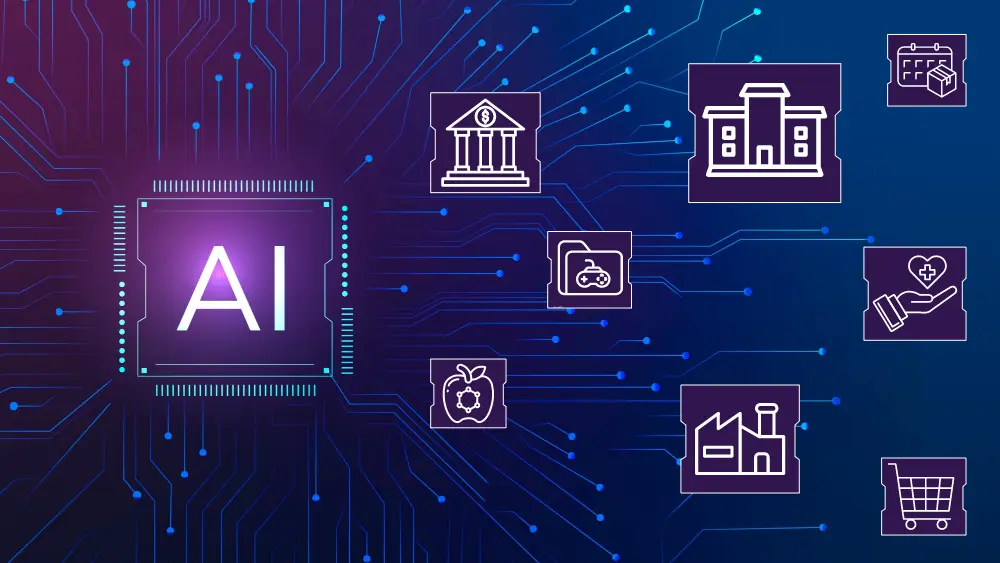
In recent times, the global landscape has witnessed a significant challenge: the persistent shortage of labor across various industries. This scarcity of workforce has led to concerns and disruptions in productivity, supply chains, and operational efficiencies. However, amid this pressing issue, automation has emerged as a beacon of hope, offering a viable solution to ease the burden of labor shortages while revolutionizing the way businesses operate. Read More
Automation, through the integration of cutting-edge technologies such as robotics, artificial intelligence (AI), and machine learning, has proven to be a game-changer in mitigating the adverse effects of labor deficits. Industries grappling with workforce shortages, including manufacturing, healthcare, hospitality, and agriculture, among others, have embraced automation to bridge the gap and streamline operations.
One of the primary advantages of automation in the face of labor shortages is its ability to augment human efforts. By implementing robotics and AI-driven systems, repetitive and mundane tasks can be efficiently handled, allowing human workers to focus on more complex, creative, and high-value assignments that require critical thinking and decision-making skills. This symbiotic relationship between humans and machines not only enhances productivity but also elevates the overall quality of output.
In manufacturing, for instance, automated assembly lines equipped with robotic arms and intelligent machinery can perform intricate tasks with precision and speed, compensating for the reduced workforce. Similarly, in healthcare, AI-powered systems aid medical professionals in diagnostics, patient care, and administrative duties, lessening the strain on healthcare personnel and improving service delivery.
Automation plays a pivotal role in bolstering operational resilience. By reducing dependency on manual labor, businesses can mitigate the risks associated with absenteeism, turnover, or sudden labor shortages due to unforeseen circumstances like the COVID-19 pandemic. Automated processes ensure continuity and consistency in operations, safeguarding businesses against disruptions and enabling them to adapt swiftly to changing scenarios.
Another compelling facet of automation lies in its potential to address skill gaps. With rapid advancements in technology, upskilling the existing workforce to adapt to evolving job requirements becomes crucial. Automation facilitates this transition by offering training and reskilling opportunities to employees, empowering them to operate and oversee automated systems effectively. This fosters a workforce that is not only adaptable but also equipped with the skills needed for the future job market.
Despite the undeniable benefits, the integration of automation amidst labor shortages does pose certain challenges. Initial setup costs, technological complexities, and the need for specialized expertise in managing automated systems are some hurdles that businesses may encounter. Additionally, concerns regarding job displacement and the need for a human touch in certain industries remain valid, necessitating a balanced approach to harnessing automation.
To maximize the potential of automation and alleviate labor shortages effectively, a strategic approach is imperative. Businesses need to conduct thorough assessments to identify areas where automation can be seamlessly integrated without disregarding the human element. Collaborative efforts between industry stakeholders, policymakers, and educational institutions are crucial in developing strategies for reskilling and workforce transition programs.
To sum it up, automation stands as a beacon of hope amidst labor shortages, offering a pathway towards increased efficiency, productivity, and resilience across industries. Embracing automation not only addresses immediate labor deficits but also propels businesses towards a future where humans and machines collaborate synergistically, unlocking new opportunities for innovation and growth.
As we navigate the challenges posed by labor shortages, the transformative power of automation offers a promising trajectory, paving the way for a more agile, efficient, and sustainable future workforce.
Customer Retention and Experience: Fostering customer loyalty, delivering exceptional experiences, and retaining customers in an increasingly competitive market were critical challenges.

In the fiercely competitive market landscape, maintaining customer loyalty and delivering exceptional experiences stand as critical imperatives for businesses. Customer Retention and Experience pose significant challenges, given the evolving consumer preferences, the abundance of choices available to customers, and the increased focus on personalized interactions. Businesses face the uphill task of not only acquiring customers but also ensuring their continued satisfaction and loyalty in an environment where alternatives abound. Read More
One of the primary challenges businesses encounter is the struggle to foster long-term customer loyalty. With increased competition, customers have become more discerning and demanding. Meeting or exceeding their expectations consistently is no longer a differentiator but a necessity. The failure to engage customers effectively or address their evolving needs often results in customer attrition, impacting revenue and brand reputation.
Delivering exceptional customer experiences in a competitive market landscape presents another significant hurdle. Customers now expect seamless, personalized experiences across all touchpoints. Any discrepancy or dissatisfaction in the customer journey can lead to a negative perception of the brand. Achieving consistency and excellence in customer service across diverse channels and interactions remains a challenge for many businesses.
The digital era has significantly altered the dynamics of customer interactions. With the rise of social media and online reviews, a single negative experience shared by a customer can swiftly impact a brand's reputation and influence potential customers' decisions. Businesses face the challenge of not only meeting but also exceeding customer expectations consistently to safeguard their brand image.
However, amidst these challenges, there are strategies and approaches available for businesses to improve Customer Retention and Experience effectively. Building strong relationships with customers forms the bedrock of fostering loyalty. Providing personalized and tailored experiences, understanding individual customer needs, and engaging in proactive communication cultivates a sense of value and loyalty among customers.
Investing in customer-centric technologies and analytics plays a pivotal role in enhancing customer experiences. Leveraging data analytics and customer insights helps in understanding preferences, predicting behavior patterns, and tailoring offerings to meet specific customer needs. Implementing user-friendly interfaces, personalized recommendations, and efficient customer support systems enhance overall satisfaction.
Furthermore, prioritizing continuous improvement based on customer feedback and embracing a culture of innovation aids in delivering exceptional experiences. Encouraging feedback, listening to customer suggestions, and iterating products or services based on insights derived from customer interactions is essential in meeting evolving customer expectations.
Customer Retention and Experience pose significant challenges for businesses in today's competitive landscape. By prioritizing customer-centric strategies, fostering strong relationships, leveraging technology for insights, and embracing continuous improvement, businesses can navigate these challenges effectively. Ensuring exceptional experiences and fostering long-term customer loyalty will be crucial in staying competitive and sustaining growth in the ever-evolving market environment.
Adapting to Changing Consumer Behavior: Understanding and responding to shifts in consumer preferences, behavior, and expectations in an increasingly dynamic market landscape were significant challenges for businesses.

In today's rapidly evolving market, businesses encounter a significant challenge in adapting to changing consumer behavior. Understanding and responding to shifts in consumer preferences, behavior, and expectations stand as critical tasks, crucial for maintaining relevance and competitiveness. The digital age, characterized by technological advancements and an interconnected world, has empowered consumers with greater access to information, diverse choices, and enhanced convenience, reshaping their expectations and influencing their purchasing decisions. Read More
One of the primary challenges faced by businesses is the unpredictability and speed of changes in consumer behavior. With technological advancements and the rise of social media, consumer preferences and trends can shift rapidly and unpredictably. This dynamism poses a significant challenge for businesses, making it challenging to forecast and respond effectively to changing consumer demands.
As we grow out of the shadow of the COVID-19 pandemic we are seeing how the pandemic has accelerated digital adoption and altered consumer behaviors at an unprecedented pace. The sudden shift to remote work, increased reliance on e-commerce, and changing lifestyle patterns have reshaped consumer expectations and preferences. Businesses that were traditionally reliant on physical spaces faced the urgent need to pivot and adapt their strategies to meet evolving consumer needs in the digital realm.
Furthermore, the abundance of data available from various sources, such as social media, online reviews, and customer feedback, presents both an opportunity and a challenge for businesses. While this data offers valuable insights into consumer behavior, preferences, and sentiment, analyzing and interpreting this vast amount of data effectively remains a challenge for many organizations.
However, amid these challenges, there are strategies and approaches available for businesses to adapt to changing consumer behavior effectively. First and foremost, investing in robust data analytics and consumer research capabilities is crucial. Leveraging advanced analytics tools and methodologies helps businesses gain deeper insights into consumer behavior patterns, enabling them to anticipate and respond proactively to changing trends.
Additionally, fostering agility and flexibility within the organization is essential. Businesses must be ready to pivot swiftly and adjust their strategies in response to changing consumer preferences. An agile approach allows companies to experiment with new ideas, products, and services, enabling them to adapt quickly to meet evolving consumer demands.
Enhancing customer engagement and personalization plays a pivotal role in meeting changing consumer expectations. Building meaningful connections with consumers through personalized experiences, targeted marketing campaigns, and responsive customer service strengthens brand loyalty and responsiveness to changing consumer needs.
Collaboration and partnerships can aid businesses in adapting to changing consumer behavior. Collaborating with industry peers, technology partners, or market experts facilitates the exchange of insights, innovative ideas, and best practices, enriching businesses' understanding of evolving consumer trends.
To sum it up, adapting to changing consumer behavior remains a critical challenge for businesses in today's dynamic market landscape. By investing in advanced analytics, fostering agility, enhancing customer engagement, and fostering collaborations, businesses can effectively respond to changing consumer preferences and behaviors. The ability to understand, anticipate, and adapt to these shifts will be crucial in staying competitive and relevant in an increasingly dynamic and customer-centric marketplace.
Regulatory Compliance and Governance: Navigating complex and evolving regulatory environments, ensuring compliance with data protection laws, and meeting industry-specific regulations remained challenging for many businesses.
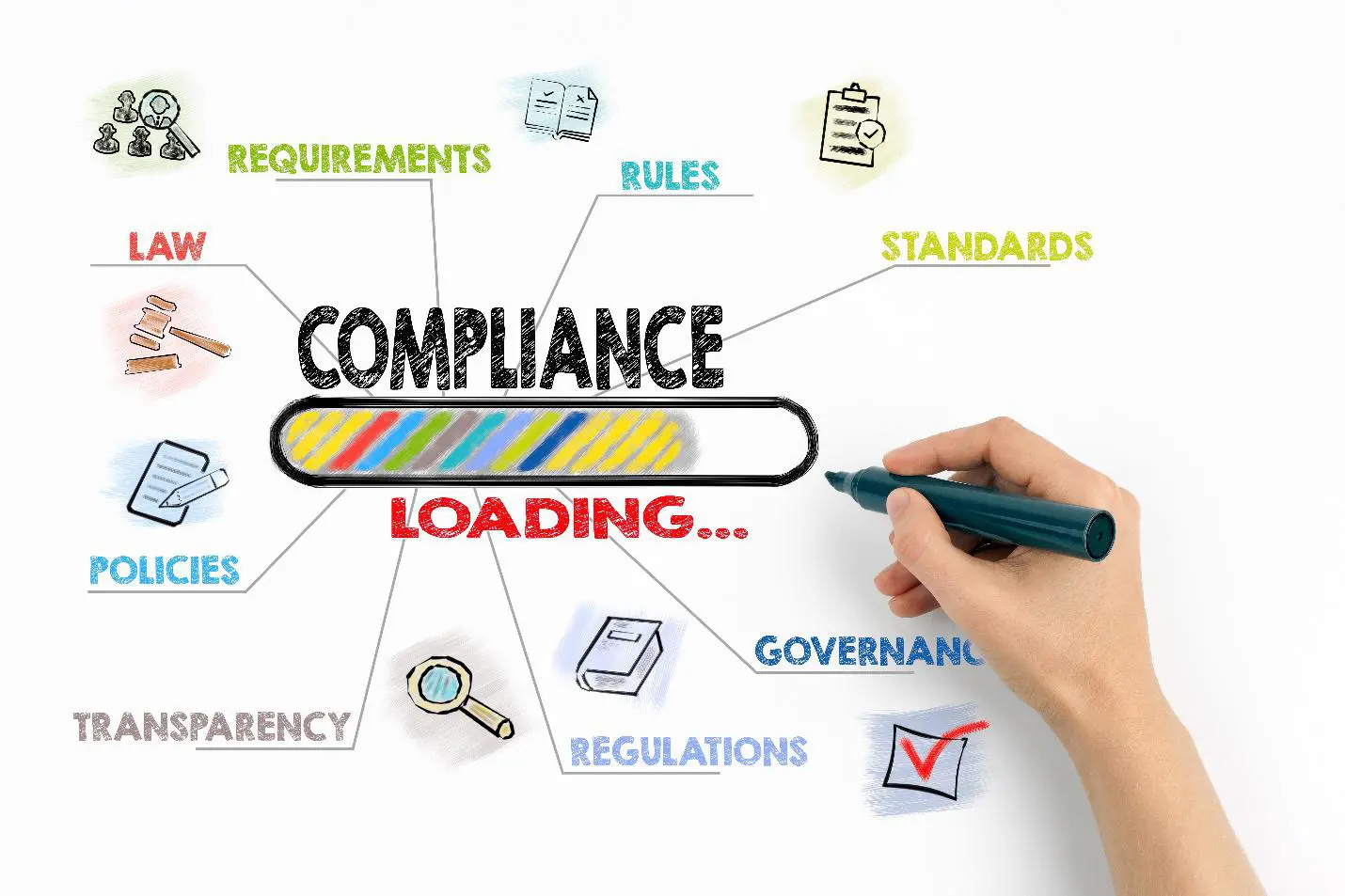
In business today, navigating Regulatory Compliance and Governance stands as a significant challenge for businesses across industries. The continuously evolving regulatory environments present a complex maze that businesses must navigate to remain compliant. The challenge lies not only in understanding the intricate frameworks of regulations but also in adapting swiftly to meet the ever-changing compliance requirements. For many companies, ensuring adherence to data protection laws, industry-specific regulations, and governance standards poses a substantial burden on operational efficiency and strategic growth. Read More
One of the primary challenges faced by businesses is the sheer volume and complexity of regulatory frameworks. Keeping pace with the myriad of regulations at the local, national, and international levels demands substantial resources, expertise, and time. This complexity often leads to confusion, making it difficult for businesses, especially smaller ones, to interpret and implement the necessary measures for compliance effectively.
With the rapid evolution of technology and its integration into business processes has further complicated regulatory compliance. Adapting to new technological advancements while ensuring compliance with data protection laws and cybersecurity regulations poses challenges. The inherent risks associated with data breaches, privacy concerns, and maintaining the confidentiality of sensitive information heighten the urgency for businesses to fortify their compliance measures.
Industry-specific regulations pose unique challenges for businesses operating in diverse sectors. Adhering to specific rules and standards while ensuring operational efficiency becomes a balancing act. Striking this balance often involves significant investments in resources, workforce training, and specialized compliance tools, impacting the overall competitiveness and profitability of businesses.
Amid these challenges, there are strategies and solutions available for businesses to navigate the complex regulatory landscape effectively. First and foremost, adopting a proactive approach to compliance is crucial. Businesses need to continuously monitor regulatory changes, stay abreast of industry trends, and anticipate upcoming compliance requirements. This proactive stance allows businesses to prepare in advance, minimizing the risk of non-compliance penalties and operational disruptions.
Investing in robust compliance management systems and technologies streamlines and automates compliance processes. These systems assist in monitoring, assessing, and ensuring adherence to regulatory requirements, reducing human error and improving accuracy in compliance efforts. Leveraging technology not only enhances efficiency but also strengthens the overall compliance posture of businesses.
Additionally, fostering a culture of compliance within the organization is paramount. Employee training, awareness programs, and establishing clear protocols and guidelines empower employees to understand and implement compliance measures effectively. Encouraging ethical practices and accountability across all levels of the organization reinforces a culture of compliance, reducing the risk of inadvertent violations.
Also, collaborating with legal experts and compliance professionals provides businesses with valuable insights and guidance in navigating complex regulations. Seeking external expertise helps in interpreting intricate regulatory requirements, implementing best practices, and ensuring that businesses remain aligned with changing compliance standards.
Remember, Regulatory Compliance and Governance pose formidable challenges for businesses, yet proactive strategies and solutions exist to effectively manage these complexities. By embracing a proactive approach, investing in technology, fostering a compliance culture, and leveraging external expertise, businesses can navigate the intricate regulatory landscape more effectively. Compliance, when integrated seamlessly into the fabric of the organization, not only ensures adherence to regulations but also contributes to improved operational efficiency, enhanced trust, and sustained growth in today's dynamic business environment.
Cybersecurity Threats: With increased digital reliance, businesses faced heightened risks of cyber threats, data breaches, and ransomware attacks, necessitating robust cybersecurity measures.

In the era of heightened digital reliance, businesses encounter an escalating array of cybersecurity threats. The rapid digitization of operations, remote work setups, and increased online transactions have significantly expanded the attack surface for cyber threats. Among the most prevalent risks are data breaches, ransomware attacks, phishing attempts, and various forms of malware infiltrations, all posing severe risks to businesses' operations, finances, and reputation. Read More
One of the primary concerns for businesses is the ever-evolving nature of cyber threats. Cybercriminals continually adapt and innovate their tactics, making it challenging for organizations to predict and defend against these threats effectively. As a result, businesses are required to stay proactive in implementing robust cybersecurity measures that evolve in tandem with emerging threats.
Data breaches represent a significant threat to businesses, potentially resulting in the compromise of sensitive information, financial losses, and erosion of customer trust. Securing sensitive data through encryption, multi-factor authentication, and regular data backups are critical measures to mitigate the impact of data breaches.
Ransomware attacks have surged in recent years, crippling businesses by encrypting critical data and demanding ransom payments for decryption. Protecting against ransomware requires a multi-layered defense approach, including robust endpoint protection, regular software updates, employee training on identifying phishing attempts, and maintaining secure backups to restore systems if attacked.
Phishing attempts continue to be a prevalent threat vector, exploiting human vulnerabilities to gain unauthorized access to systems or sensitive information. Educating employees about recognizing phishing emails, implementing email filters, and conducting regular cybersecurity awareness training sessions are essential in combating these threats.
The adoption of cloud-based services introduces new dimensions to cybersecurity challenges. Securing cloud environments demands rigorous access controls, encryption protocols, continuous monitoring, and adherence to stringent compliance standards to safeguard sensitive data stored on cloud platforms.
Cybersecurity incidents not only pose immediate financial risks but also have long-term repercussions on a business's reputation and brand trust. Therefore, investing in robust cybersecurity frameworks, regularly conducting risk assessments, fostering a culture of cybersecurity awareness among employees, and collaborating with cybersecurity experts are essential steps for businesses to safeguard against these threats.
In the face of increased digital reliance, businesses must remain vigilant and proactive in implementing robust cybersecurity measures to combat the escalating risks of cyber threats. By adopting a comprehensive approach that combines technological defenses, employee education, regular risk assessments, and collaboration with cybersecurity experts, businesses can effectively fortify their defenses against cyber threats and mitigate potential damages to their operations and reputation.
Acknowledging the Mental Strain on CEOs Navigating Current Challenging Business Trends

Navigating the ever-changing business landscape places immense mental strain on CEOs tasked with keeping their companies profitable amidst uncertainty. The constant pressure to make critical decisions, meet financial targets, and steer the company through dynamic market shifts takes a toll on mental well-being. CEOs often find themselves grappling with stress, anxiety, and burnout due to the relentless demands of leading in such a challenging environment. Read More
One of the fundamental solutions to cope with this mental strain involves prioritizing self-care. CEOs need to recognize the importance of mental and physical well-being. Allocating time for adequate rest, exercise, and relaxation is essential. Establishing a healthy work-life balance by setting boundaries and disconnecting from work when needed helps in maintaining mental resilience.
Seeking support networks and mentorship also plays a crucial role in mitigating the mental strain. Engaging with peer groups, seeking guidance from mentors or coaches, and sharing experiences with fellow CEOs create avenues for support, advice, and sharing the burden of leadership challenges.
Practicing mindfulness and stress-management techniques proves beneficial in handling the mental strain. Incorporating mindfulness practices, meditation, or yoga into daily routines fosters mental clarity, reduces stress, and enhances emotional resilience. Additionally, delegating responsibilities and trusting capable team members lightens the workload, easing the burden on CEOs.
Fostering an organizational culture that values mental health also contributes to alleviating the strain on CEOs. Encouraging open communication, providing access to mental health resources, and promoting a supportive work environment help in reducing the stigma associated with mental health challenges and create a space for seeking help when needed.
Also, periodically stepping back and reassessing priorities and goals helps in managing mental strain. CEOs should revisit strategic plans, recalibrate goals, and realign business strategies in response to changing market dynamics. Being adaptable and agile in approach minimizes the pressure to stick to rigid plans in unpredictable business landscapes.
CEOs face significant mental strain in steering their companies through the ever-evolving business landscape. Prioritizing self-care, seeking support networks, practicing mindfulness, fostering a supportive organizational culture, and reassessing strategies offer effective solutions to cope with and mitigate the mental strain. By implementing these strategies, CEOs can safeguard their mental well-being, navigate challenges more effectively, and lead their organizations towards sustainable success.
Access to Funding and Capital: Securing funding for growth, managing cash flow, obtaining loans, and accessing capital for expansion were persistent challenges, particularly for startups and small businesses.

For startups and small businesses, access to funding and capital stands as a crucial factor determining growth and sustainability. However, securing adequate funding remains an ongoing challenge, fraught with complexities. It involves navigating various channels, such as loans, investors, venture capitalists, or crowdfunding platforms, to secure the necessary capital for business expansion. Read More
Managing cash flow emerges as a pressing concern in the pursuit of growth. Efficient cash flow management ensures that businesses have the necessary funds available for daily operations, investments, and unforeseen expenses. Striking a balance between incoming and outgoing cash flows is essential to maintain financial stability and fuel growth initiatives.
Obtaining loans constitutes a common avenue for businesses seeking capital injection. However, securing loans often involves meeting stringent eligibility criteria and providing collateral, posing challenges, especially for startups lacking significant assets. Additionally, high-interest rates or unfavorable terms can further burden small businesses seeking loans for growth.
Accessing capital for expansion is vital for businesses aiming to scale operations. It involves acquiring funding for new projects, entering new markets, investing in research and development, or expanding product lines. Lack of access to adequate capital can limit growth opportunities and hinder the realization of business potential.
Strategies to address these challenges encompass a multi-faceted approach. Building a strong and compelling business plan is foundational in attracting investors or lenders. A well-thought-out plan outlining growth strategies, revenue projections, and potential returns enhances the attractiveness of the business to potential funders.
Diversifying funding sources serves as a risk mitigation strategy. Exploring various funding options, such as angel investors, venture capital, government grants, or strategic partnerships, reduces reliance on a single source, mitigating risks associated with limited access to funding.
Fostering relationships with financial institutions or investors through networking and showcasing business viability and growth potential enhances credibility and increases the likelihood of securing funding. Additionally, effectively managing and showcasing financial data, including cash flow projections, profitability, and return on investment, can bolster confidence in the business's financial health.
To conclude, access to funding and capital remains a persistent challenge for startups and small businesses. Strategies focusing on comprehensive business planning, diversification of funding sources, and relationship-building with potential investors or lenders play a pivotal role in overcoming these challenges. By adopting a proactive and strategic approach, businesses can improve their chances of securing the necessary capital to fuel growth and ensure long-term sustainability.
Leadership and Succession Planning: Ensuring continuity amid leadership changes posed challenges for sustained growth.
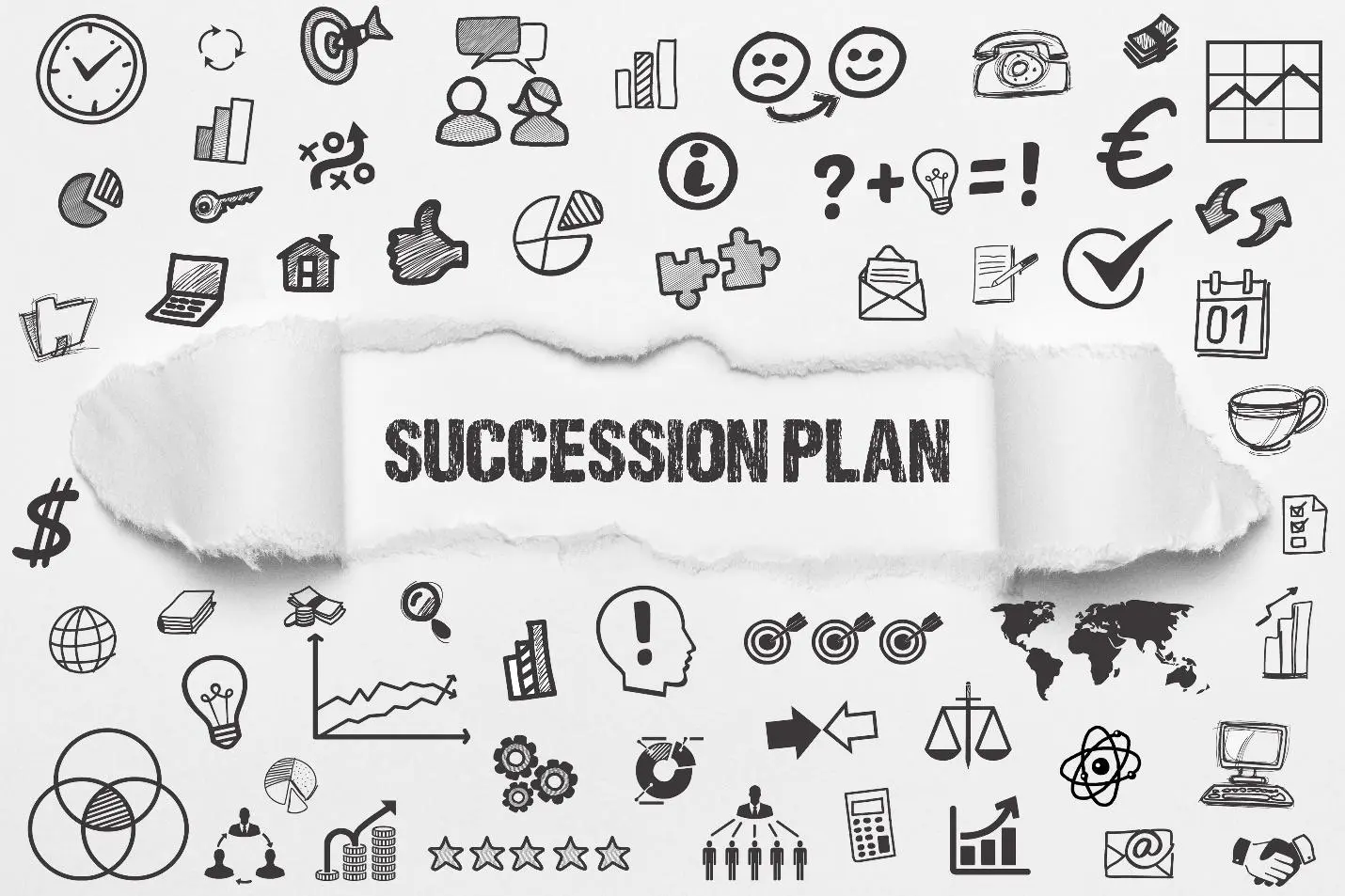
Developing robust leadership pipelines is a cornerstone for organizational growth. However, establishing and nurturing these pipelines present significant challenges for businesses aiming to sustain growth over the long haul. It involves identifying high-potential employees, providing them with the necessary training and development opportunities, and fostering a culture that encourages leadership growth from within. Read More
Succession planning is another critical aspect that businesses must prioritize. Planning for leadership transitions ensures continuity and stability amid changes in key leadership positions. It involves identifying and preparing potential successors for pivotal roles within the organization. Creating a structured succession plan reduces disruptions and ensures a seamless transition, mitigating risks associated with sudden leadership gaps.
Ensuring continuity amid leadership changes is essential for maintaining momentum and stability within an organization. Smooth transitions during leadership changes prevent disruptions in operations, maintain employee morale, and uphold stakeholder confidence. It requires a proactive approach, with a focus on clear communication and transparent processes to mitigate uncertainties during leadership transitions.
Challenges arise due to various factors, including identifying and developing future leaders, aligning succession plans with organizational goals, and creating a culture that values leadership development. Organizations often face difficulties in balancing short-term needs with long-term leadership development strategies, hindering the seamless execution of succession plans.
Strategies to address these challenges involve a holistic approach to leadership development. Businesses must invest in comprehensive leadership training programs, mentorship initiatives, and talent identification processes. Moreover, cultivating a leadership-centric culture fosters an environment that nurtures and recognizes leadership potential at all levels.
Additionally, incorporating succession planning into the organization's strategic goals and creating clear pathways for career growth encourages employees to envision a future within the company. It involves transparent communication about succession planning processes, opportunities, and expectations, motivating employees to actively participate in their career development.
Leadership and Succession Planning present critical concerns for businesses aiming for sustained growth. Establishing robust leadership pipelines, implementing structured succession plans, and ensuring continuity amid leadership changes demand proactive strategies, investment in talent development, and fostering a culture that values leadership growth. By prioritizing these aspects, organizations can effectively navigate challenges associated with leadership transitions, ensuring sustained growth and stability in an ever-evolving business landscape.
Economic Uncertainty and Market Volatility

Economic uncertainties and market volatility pose significant challenges for businesses striving to navigate through unpredictable terrains. The ever-evolving economic landscape, influenced by various factors like global events, geopolitical tensions, and fluctuations in consumer behavior, creates an environment fraught with uncertainties. Businesses find themselves on shaky ground, grappling with the daunting task of making informed decisions amidst these uncertainties. Read More
Managing risks becomes a paramount concern in such turbulent times. The volatile nature of markets amplifies risks across various fronts, including financial, operational, and strategic aspects of businesses. Identifying, assessing, and mitigating these risks becomes an essential undertaking for organizations aiming to safeguard their stability and resilience against adverse market fluctuations.
Strategic decision-making becomes a complex puzzle in volatile markets. Organizations face the challenge of charting a course that balances short-term stability with long-term growth. The need to remain agile and adaptive while devising strategies that account for unpredictability and fluctuations adds layers of complexity to the decision-making process.
Navigating these challenges necessitates a multi-faceted approach. Businesses must prioritize building resilience, both operationally and financially, to weather economic uncertainties and market turbulence. Diversification of revenue streams, robust risk management strategies, and prudent financial planning serve as shields against market volatility.
Businesses should focus on enhancing agility and flexibility in their operations and strategies. The ability to pivot swiftly in response to changing market dynamics is crucial. Organizations that can quickly adapt their business models, re-strategize, and capitalize on emerging opportunities tend to fare better in volatile markets.
Collaboration and information-sharing among industry peers and stakeholders also play a pivotal role. Engaging in industry networks, staying abreast of market trends, and seeking insights from experts and thought leaders can provide valuable perspectives and strategies to navigate uncertain economic landscapes.
Economic uncertainty and market volatility present formidable challenges for businesses. However, by prioritizing risk management, fostering agility, seeking collaboration, and making informed, strategic decisions, organizations can navigate these uncertain terrains more effectively. Embracing resilience and adaptability becomes imperative, enabling businesses not only to survive but also to thrive amidst unpredictable market conditions.
Innovation and Adaptation: Encouraging a Culture of Innovation

Encouraging a culture of innovation is pivotal for organizations striving to thrive in today's dynamic business landscape. It's about fostering an environment where fresh ideas flourish, creativity blooms, and new perspectives are welcomed with open arms. However, fostering such an innovative culture poses a challenge for many organizations. It requires a fundamental shift in mindset—a departure from traditional norms towards embracing change and nurturing creativity at every level of the organization. Read More
Staying ahead of technological disruptions is a pressing concern faced by businesses aiming to maintain relevance and competitiveness. With the rapid pace of technological advancements, organizations must proactively embrace emerging technologies, leverage their potential, and integrate them strategically into their operations. However, navigating these disruptions requires astute strategic planning, investment in research and development, and a keen eye on emerging trends that could revolutionize industries.
Adapting quickly to market changes stands as a crucial aspect of organizational resilience. In a business landscape characterized by constant flux, the ability to pivot swiftly in response to shifting market dynamics is imperative for sustained success. Whether it's changes in consumer preferences, economic shifts, or unforeseen global events, organizations must be agile and responsive, ready to adjust strategies and operations to align with evolving market needs.
While innovation and adaptation offer immense opportunities for organizations to thrive, they come with their share of challenges. Fostering an innovative culture, staying abreast of technological disruptions, and adapting swiftly to market changes demand strategic foresight, a proactive approach to change, and a commitment to embracing innovation at the core of organizational culture. Embracing these challenges as opportunities for growth and evolution can position organizations as agile, innovative, and resilient entities in an ever-evolving business landscape.
Market Competition and Differentiation - Standing Out in a Crowded Market

Navigating Market Competition and Differentiation proves to be a formidable challenge for businesses, especially in industries where competition is fierce. Standing out and distinguishing one's products or services amidst the noise of a crowded marketplace is a Herculean task. However, despite these challenges, there are several strategies and approaches that businesses can employ to carve out their niche and stand tall among competitors. Read More
Understanding the target market forms the cornerstone of effective differentiation. Delving deep into consumer behaviors, preferences, and pain points is pivotal. Market research, therefore, becomes an essential tool in tailoring offerings to meet the specific needs of the audience.
Crafting a unique brand identity stands as a linchpin for businesses aiming to set themselves apart. A distinctive brand message, coupled with engaging storytelling, enables effective communication of the brand's value proposition.
Innovation emerges as a key driver for differentiation in a crowded market. Whether through product enhancements, technological advancements, or superior customer experiences, innovative offerings create a competitive edge.
Exceptional customer service and support play a crucial role in differentiating brands. Providing outstanding post-purchase service and personalized experiences can significantly impact brand perception and foster customer loyalty.
An effective marketing strategy becomes imperative for businesses aiming to break through the clutter. Leveraging diverse marketing channels, creating compelling content, and engaging in storytelling that communicates unique brand attributes are vital for visibility and differentiation.
Remaining adaptive and responsive to changing market dynamics ensures sustained relevance and differentiation. Monitoring market trends, competitor strategies, and consumer sentiments enables businesses to adapt swiftly and evolve offerings to align with market needs.
In summary, while navigating Market Competition and Differentiation in a crowded marketplace is challenging, it's not insurmountable. By understanding the target audience, crafting a compelling brand identity, innovating, providing exceptional service, strategizing marketing efforts, and staying agile, businesses can effectively differentiate themselves and carve a distinctive space in competitive industries.
Scaling Operational Efficiency for Growing Businesses
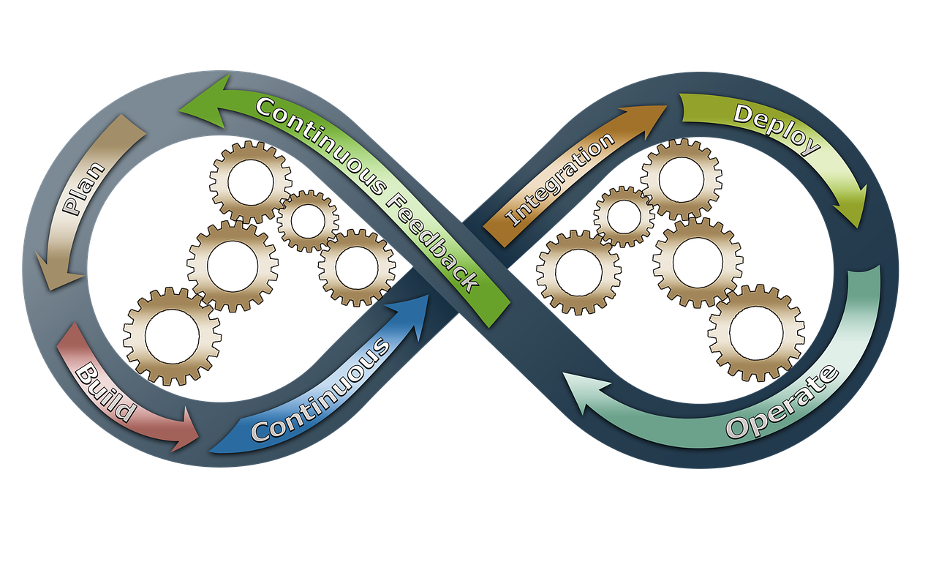
In the dynamic realm of business, companies poised for growth often encounter a common dilemma: how to seamlessly expand operations while maintaining a high level of operational efficiency. Scaling Operational Efficiency represents a cornerstone for businesses in their journey towards sustained growth. The optimization of operational processes, alongside the ability to scale infrastructure and enhance overall efficiency, emerges as pivotal considerations for companies aiming to accommodate escalating demands while ensuring seamless business expansion. Read More
Optimizing operational processes constitutes a fundamental starting point for scaling companies. The assessment of existing workflows becomes imperative, unveiling bottlenecks and areas ripe for refinement. Streamlining these processes, eliminating redundancies, and fostering a culture of continuous improvement lay a robust foundation for scalable operations. Embracing lean methodologies, such as Six Sigma or Kaizen, serves as a catalyst for propelling efficiency by minimizing waste and elevating productivity and quality across operations.
The integration of technology stands as a linchpin in the pursuit of operational efficiency. Businesses must leverage cutting-edge solutions, such as robust Enterprise Resource Planning (ERP) systems, automation tools, and data analytics. These tech-driven initiatives offer real-time insights, process automation capabilities, and data-informed decision-making, significantly augmenting overall efficiency.
Scalable infrastructure development constitutes a strategic imperative for companies on the brink of expansion. Investment in adaptable IT infrastructure, cloud-based solutions, and flexible architectures paves the way for accommodating increasing demands while upholding reliability and security standards. Establishing standardized procedures and documentation streamlines operations, fostering clear communication, and facilitating seamless collaboration as the business expands.
The empowerment of employees plays an instrumental role in achieving operational efficiency. Providing comprehensive training programs and ensuring access to requisite tools cultivates a workforce equipped to support the company's growth trajectory. Moreover, businesses can strategically outsource non-core functions to external experts, freeing up internal resources and enabling a more concentrated focus on core competencies and strategic initiatives.
Continuous monitoring and optimization form the bedrock of sustained operational efficiency. Regular evaluation of key performance indicators (KPIs), coupled with feedback mechanisms, enables ongoing refinement and improvement. Nurturing a culture that champions efficiency and innovation encourages employees to actively contribute ideas for process enhancements, fostering an environment that adapts to market changes swiftly.
In essence, scaling operational efficiency serves as the linchpin for businesses navigating growth trajectories. By strategically optimizing processes, investing in scalable infrastructure, leveraging technology, empowering employees, and fostering a culture of continuous improvement and innovation, companies can effectively meet the challenges posed by expansion while maintaining operational excellence. The successful execution of these strategies demands tailored approaches aligned with the specific needs and objectives of each business. Seeking guidance from experienced professionals and leveraging industry-specific expertise becomes imperative in the development and execution of comprehensive strategies for scaling operational efficiency.
Navigating Leadership Missteps: Correcting Indecisive and Accusatory CEO Behavior
In the dynamic landscape of business leadership, the role of a CEO serves as a guiding force shaping an organization's trajectory. In our last article we discussed issues in a company when a CEO displays traits of indecisiveness, accusation, and a diluted vision, the ripple effects can profoundly impact the company's dynamics. Read More
So let's now delve into the strategies to rectify these mistakes and mitigate their adverse effects.
Addressing Indecisiveness: Indecisiveness at the helm of leadership can breed uncertainty and stall progress. To correct this, a CEO must prioritize informed decision-making. Encouraging open dialogue, gathering diverse perspectives, and considering all viable options are crucial steps. A decisive leader acknowledges the importance of timely decisions while valuing thorough analysis.
- Mitigating Blame Culture: Pushing off blame onto others within the company fosters a toxic work environment. Instead, a leader should cultivate a culture of accountability and responsibility without scapegoating. Encouraging transparency, learning from mistakes, and focusing on solutions rather than assigning blame fosters a supportive workplace culture.
- Realigning Vision and Communication: A diluted vision hampers employee alignment and organizational progress. The head of a company should recalibrate and communicate a clear, inspiring vision. Regularly revisiting and refining this vision ensures it remains relevant and guides the company forward cohesively.
- Promoting Accountability Across the Board: Instead of deflecting blame, a CEO/ Manager/ Leader should lead by example and take responsibility for their actions. This sets the tone for accountability throughout the organization. Encouraging a culture where accountability is seen as a learning opportunity fosters trust, growth, and innovation.
- Investing in Leadership Development: Effective leadership is cultivated through continuous learning and development. Invest in leadership programs and mentorship opportunities for themselves and their team members. This investment in growth enhances leadership qualities and strengthens the organization's overall capabilities.
- Fostering a Collaborative Environment: Collaboration thrives in an atmosphere of trust and respect. A CEO should foster an environment where open communication is encouraged, diverse perspectives are valued, and collective problem-solving is embraced. Team cohesion and innovation flourish in such an environment.
Correcting the ripple effects of indecisive and accusatory leadership involves intentional efforts to address mistakes, nurture a positive work culture, and steer the company toward a shared, focused vision. By promoting decisive yet informed decision-making, fostering accountability, realigning vision, and investing in continuous growth, a CEO can mitigate the negative impacts and cultivate a thriving organizational environment.
The Tumultuous Ripple Effect of Indecisive and Accusatory Leadership: A CEO's Diluted Vision and Its Impact on Company Dynamics
In the intricate tapestry of a company's success, the role of a CEO stands as a guiding beacon. Their vision, decisiveness, and ability to inspire are pivotal in steering the entire organization toward a common goal. However, when a CEO exhibits indecision, plays the blame game, and dilutes the company's vision, the repercussions can be far-reaching, setting off a turbulent ripple effect within the organization. Read More
Indecisiveness at the helm of leadership breeds uncertainty. When a CEO wavers on critical decisions or constantly flip-flops, it casts a shadow of doubt across the entire company. Team members, uncertain about the direction, hesitate to take action, hindering progress and stalling innovation. The lack of a clear path forward can lead to missed opportunities and stagnation.
In an accusatory leadership style, where the CEO habitually shifts blame onto others within the company, creates a toxic environment. Rather than fostering collaboration and problem-solving, it fuels mistrust, sows discord, and diminishes morale. Employees, feeling unfairly targeted, may become demotivated, impacting productivity and eroding the company culture built on trust and teamwork.
The CEO's diluted vision acts as a fog obscuring the company's true potential. When a leader fails to articulate a cohesive and inspiring vision, employees struggle to align their efforts. Without a shared understanding of the company's mission, values, and long-term objectives, each department may veer off in disparate directions, diluting the overall impact and coherence of the organization.
Furthermore, by deflecting responsibility onto others, the CEO undermines accountability within the company. Instead of fostering a culture where mistakes are acknowledged and learned from, the blame game fosters a culture of fear and evasion. This not only stifles innovation but also impedes the growth and development of employees who fear repercussions for taking risks or making decisions.
To counteract these negative effects, it is imperative for a CEO to take decisive action, foster open communication, and lead by example. Clear and transparent communication of the company's vision, coupled with accountability for decisions, empowers employees to work cohesively toward common goals.
The repercussions of indecisive and accusatory leadership by a CEO reverberate throughout an organization, creating an environment of uncertainty, mistrust, and diluted purpose. A strong, visionary, and accountable leader is crucial in guiding a company toward success, inspiring confidence, and fostering a culture of collaboration and growth.
Embracing Accountability: Why Strategic Leadership Demands Personal Oversight of Critical Business Elements….Don't T.O. the Important Stuff
In the realm of leadership and business management, delegation is an indispensable tool for efficiency and scalability. Yet, in my journey as a business leader, I've come to recognize the profound risks associated with indiscriminate delegation of crucial business facets. Today, I aim to shed light on the inherent dangers of delegating pivotal aspects that can either impede growth or fuel the success of a business. Read More
1. Strategic Direction and Decision-Making:
As business leaders, our strategic vision shapes the trajectory of our companies. Delegating the formulation of this vision or critical decision-making processes might dilute our intended direction, leading to misalignment and missed opportunities for growth.
2. Core Values and Culture Formation:
A company's culture is its identity—a reflection of its values and beliefs. Delegating the cultivation of this culture risks losing the authenticity and cohesion that drive employee engagement, productivity, and ultimately, business success.
3. Key Relationships and Partnerships:
Building and nurturing relationships with stakeholders, clients, and partners are pivotal for sustained success. Delegating these relationships might compromise trust, jeopardizing opportunities for collaboration and long-term partnerships that fuel growth.
4. Innovation and Future-Focused Initiatives:
Innovation fuels progress and differentiation in a competitive landscape. Delegating responsibilities for innovation initiatives might stifle creativity and the ability to stay ahead of market trends, risking stagnation or even irrelevance.
While delegation is pivotal, as strong business leaders, it's imperative to recognize that certain critical elements demand our personal oversight and accountability.
Instead, here is a strong strategic approach:
Strategic Alignment: Maintain direct involvement in setting strategic goals and direction, ensuring they align with the company's overarching vision.
Cultural Leadership: Lead by example and reinforce core values, actively participating in nurturing a robust company culture that resonates across all levels.
Relationship Stewardship: Take a hands-on approach in cultivating key relationships and partnerships, leveraging personal connections to foster trust and collaboration.
Innovation Advocacy: Champion a culture of innovation, actively participating in ideation sessions and providing guidance to drive future-focused initiatives.
Understand that strategic leadership involves a delicate balance between delegation and personal oversight of critical business elements. Share your experiences, insights, and thoughts on the balance between delegation and personal accountability in driving business success.
What are the latest breakthroughs in the business consulting industry?
The consulting industry has been continuously evolving, adapting to technological advancements, changing consumer behaviors, and dynamic market landscapes. In recent times, several breakthroughs have reshaped the industry, influencing the way consulting firms operate, deliver services, and address client needs. One of the significant breakthroughs in the consulting realm involves the integration of artificial intelligence (AI) and machine learning (ML) technologies. Consulting firms have embraced these technologies to enhance their analytical capabilities, streamline decision-making processes, and offer more data-driven insights to clients. AI-powered tools aid consultants in analyzing vast datasets swiftly, enabling them to extract actionable insights and make informed recommendations for their clients. This shift towards AI-driven solutions has significantly improved the efficiency and accuracy of consulting services across various sectors. Read More
Moreover, the growing emphasis on sustainability and environmental concerns has led to a notable breakthrough in the consulting industry. There is an increasing demand for sustainability consulting services as businesses recognize the importance of integrating sustainable practices into their operations. Consulting firms specializing in sustainability are assisting organizations in developing eco-friendly strategies, reducing their carbon footprint, and meeting regulatory requirements related to environmental conservation. This shift towards sustainability consulting reflects a broader societal trend where companies are aligning their goals with environmental stewardship, and consulting firms are at the forefront of guiding this transformation.
Another breakthrough transforming the consulting landscape is the rise of remote consulting services. The global pandemic accelerated the adoption of remote work across industries, including consulting. This shift has not only changed the way consulting firms deliver services but has also widened their reach by enabling them to engage with clients worldwide without geographical constraints. Remote consulting services leverage digital collaboration tools, video conferencing, and virtual platforms to provide clients with real-time advice, analysis, and support. This evolution in service delivery has enhanced flexibility for both consultants and clients, fostering more efficient communication and problem-solving irrespective of physical location.
Furthermore, the consulting industry has seen a surge in specialized niche consulting firms catering to specific industries or unique client needs. These specialized firms bring in-depth expertise and tailored solutions, catering to niche markets such as healthcare, technology, cybersecurity, and digital transformation. Clients seeking highly specialized knowledge and customized strategies are turning to these niche consulting firms rather than opting for larger, generalist firms. This trend underscores the importance of niche expertise in addressing complex challenges faced by industries and businesses today.
Additionally, the integration of digital transformation services within consulting offerings has emerged as a significant breakthrough. As businesses aim to adapt to the digital age, consulting firms are playing a pivotal role in guiding organizations through this transformation. Consulting services encompass digital strategy formulation, implementation of innovative technologies, and organizational restructuring to facilitate a seamless transition towards digitalization. Firms that can effectively navigate the complexities of digital transformation and offer comprehensive solutions are gaining a competitive edge in the consulting landscape.
The consulting industry has witnessed several transformative breakthroughs, ranging from the integration of AI and sustainability consulting to the rise of remote services, specialized niche firms, digital transformation, and DEI consulting. These advancements are reshaping the consulting landscape, enabling firms to offer more specialized, data-driven, and impactful solutions to address the evolving needs of businesses in a rapidly changing world. As consulting continues to evolve, these breakthroughs will continue to drive innovation and shape the future direction of the industry.
Visionary and Integrator Synergy Using the Principles of "Rocket Fuel"
"Rocket Fuel" by Gino Wickman and Mark C. Winters introduces a powerful framework centered around the concept of the visionary-integrator duo within an organization. Applying the principles outlined in this book can revolutionize how businesses operate, enabling them to achieve unparalleled success by maximizing the potential of this dynamic partnership. Read More
The cornerstone of the Rocket Fuel model lies in understanding and optimizing the roles of the visionary and the integrator. The visionary embodies creativity, innovation, and future-oriented thinking. They are the dreamers, the idea generators, and the strategic thinkers who propel the organization forward with their visionary concepts and plans. On the other hand, the integrator is the glue that holds the visionary's ideas together, ensuring execution, operational efficiency, and translating those visions into actionable plans.
Identifying these roles within an organization is crucial. Many successful businesses have a visionary at the helm, often the founder or entrepreneur, and an integrator who complements their strengths by implementing strategies, streamlining operations, and executing plans. When these roles are well-defined and in sync, they create a synergy that drives the company toward its goals with remarkable efficiency and effectiveness.
For organizations looking to maximize their results, the Rocket Fuel principles provide a roadmap:
Visionary and Integrator Synergy: Encourage clear communication and alignment between the visionary and integrator. Regular meetings, goal-setting sessions, and fostering a strong working relationship between these two roles lay the foundation for organizational success. This collaboration ensures that innovative ideas are not only conceptualized but also effectively implemented.
Role Definition and Accountability: Clearly defining the roles, responsibilities, and expectations of both the visionary and integrator is crucial. Each must understand their unique contributions and how they complement each other. Establishing accountability within these roles fosters a sense of ownership, ensuring that both parties are aligned in achieving the organization's objectives.
Building Trust and Respect: Cultivating a culture of mutual trust and respect between the visionary and integrator is paramount. This trust enables open dialogue, constructive feedback, and the freedom to innovate without fear of failure. When there's a foundation of trust, both parties can work collaboratively, leveraging each other's strengths for the benefit of the organization.
Strategic Planning and Execution: The visionary sets the direction, and the integrator ensures the roadmap is executed seamlessly. Effective strategic planning involves setting clear, achievable goals, developing actionable plans, and consistently measuring progress. The integrator's role is to break down the visionary's ideas into manageable steps, establish processes, and drive execution.
Creating a Complementary Team: Beyond the visionary and integrator, building a team that complements these roles is crucial. Surrounding the leadership duo with individuals who excel in their respective areas further strengthens the organization. A cohesive team that understands and supports the Rocket Fuel model amplifies the company's potential for success.
Adaptability and Continuous Improvement: Embrace a culture of adaptability and continuous improvement. Markets evolve, circumstances change, and agility becomes a valuable asset. Both the visionary and integrator must remain flexible, open to new ideas, and willing to pivot when necessary, ensuring the organization remains relevant and competitive.
Communication and Transparency: Foster a culture of open communication and transparency throughout the organization. Clear and consistent communication channels between leadership, teams, and departments ensure alignment with the overarching vision, preventing silos and promoting a unified approach to achieving goals.
Implementing these principles may require a shift in organizational structure, redefining roles, or even a change in leadership dynamics. However, the benefits of applying the Rocket Fuel principles are substantial. Organizations that embrace this model often experience increased productivity, accelerated growth, enhanced innovation, and a more cohesive and empowered workforce.
"Rocket Fuel" offers a powerful framework that empowers organizations to maximize their results by harnessing the strengths of the visionary-integrator partnership. By aligning the visionary's innovative ideas with the integrator's execution prowess, businesses can propel themselves to new heights of success, adapt to market dynamics, and achieve sustainable growth in today's competitive landscape.
Aligning Purpose and Performance: The Role of Leadership in Inspiring Growth
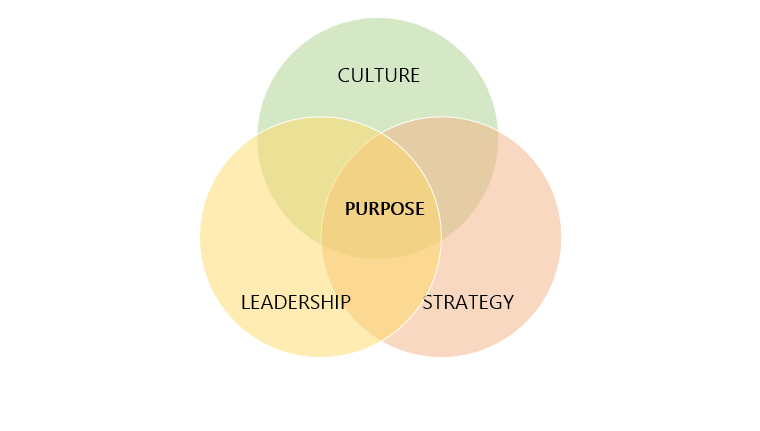
In the dynamic landscape of modern business, achieving sustainable growth and success hinges not just on profit margins and market dominance but on aligning the company's purpose with its performance. Businesses that successfully merge these aspects create a compelling narrative that resonates with stakeholders, customers, and employees alike. This fusion of purpose and performance isn't merely an operational task; it's a testament to effective leadership. Read More
The Significance of Purpose-Driven Leadership
Leadership is the catalyst that drives organizational alignment between purpose and performance. It's the guiding force steering the company toward a common vision while ensuring that day-to-day activities and strategies reinforce that overarching goal. Purpose-driven leadership isn't about a single-minded pursuit of profit; it's about a broader commitment to making a meaningful impact beyond financial success.
Why Purpose Matters:
- Employee Engagement: A purpose-driven organization attracts and retains talent more effectively. Employees connect deeply with a company's purpose, feeling motivated and engaged, leading to increased productivity.
- Customer Loyalty: Purpose-driven businesses resonate with consumers seeking brands that align with their values. This emotional connection fosters loyalty and drives customer retention.
- Sustainability: A clear purpose often translates into sustainable practices. Companies committed to a purpose often prioritize sustainable and ethical operations, appealing to socially conscious consumers.
The Nexus Between Purpose and Performance
Aligning purpose and performance requires strategic integration at every level of the organization:
- Visionary Leadership:
- Setting the Tone: Effective leaders articulate and embody the company's purpose, fostering a culture that reflects these values.
- Strategic Planning: They align business strategies with the overarching purpose, guiding decision-making processes that support long-term goals.
- Engaged Workforce:
- Communication: Leadership ensures that the purpose is communicated clearly, enabling employees to understand how their roles contribute to the bigger picture.
- Empowerment: Employees are empowered to innovate and make decisions aligned with the company's purpose, fostering a sense of ownership.
- Customer-Centric Approach:
- Creating Value: Businesses align performance metrics with delivering value to customers aligned with the company's purpose.
- Feedback Loop: Leadership utilizes customer feedback to refine strategies and ensure alignment with customer expectations.
Leadership Strategies for Aligning Purpose and Performance
- Lead by Example: Leadership that embodies the company's purpose through actions, decision-making, and communication sets the standard for others to follow suit.
- Foster Collaboration: Encouraging cross-functional collaboration enables a holistic approach to aligning purpose and performance, breaking down silos and fostering innovation.
- Continuous Assessment and Adaptation: Regularly reassessing strategies, measuring performance against purpose-driven metrics, and adapting as needed ensures alignment remains dynamic and relevant.
- Cultivate Emotional Intelligence: Leaders with high emotional intelligence can connect with employees on a deeper level, fostering trust and alignment with the company's purpose.
The Impact of Purpose-Driven Leadership on Growth
Purpose-driven leadership isn't just about creating a feel-good factor; it's a strategic imperative that directly influences a company's growth trajectory.
- Market Differentiation: Purpose-driven companies stand out in crowded markets, attracting customers seeking brands that resonate with their values.
- Employee Retention and Engagement: A purpose-driven culture leads to higher employee satisfaction, lower turnover rates, and increased productivity.
- Innovation and Adaptability: Aligning purpose with performance encourages innovative thinking and agility, enabling companies to adapt to changing market dynamics.
- Enhanced Reputation and Trust: Consistently demonstrating a commitment to purpose fosters trust among stakeholders, enhancing the company's reputation.
Multipliers and Diminishers in a Turn Around Time
"Multipliers" by Liz Wiseman explores the leadership styles that amplify the intelligence and capabilities of those around them. In the context of a turnaround company, where revitalization and growth are critical, applying the principles from this book can be transformative for establishing a healthy leadership structure. Read More
Turnaround situations demand not just leadership but effective leadership that can inspire and leverage the collective intelligence and potential of the team. Multipliers, as highlighted in the book, are leaders who magnify the capabilities of others, creating an environment of trust, empowerment, and growth. They contrast sharply with "Diminishers," who stifle contributions and limit the capabilities of those around them.
In a rebuild scenario, Multipliers play a pivotal role in fostering a healthy leadership structure by creating an atmosphere where every team member is encouraged to contribute their best. They empower employees to take ownership, solve problems, and drive the company forward collectively.
One significant principle from the book applicable to a turnaround is the concept of talent magnetism. Multipliers attract and retain top talent, fostering an environment where employees feel valued and challenged. In a struggling company, this can be a game-changer, as retaining talented individuals during a challenging period becomes crucial. Multipliers encourage innovation and risk-taking, which are essential elements for a company aiming to reinvent itself.
Moreover, Multipliers are also adept at creating a culture of trust and transparency. In a turnaround situation, where uncertainty and apprehension may prevail, building trust is paramount. A healthy leadership structure, inspired by Multiplier principles, instills confidence in the team and encourages open communication. This, in turn, allows for the free flow of ideas, problem-solving, and collaborative efforts towards company revitalization.
Furthermore, Multipliers excel in tapping into the collective intelligence of their teams. In a turnaround scenario, where creative solutions and innovative ideas are crucial, leveraging the diverse perspectives and talents of the workforce becomes imperative. Multipliers actively seek input from employees at all levels, recognizing that valuable insights can come from anyone, not just top executives.
In a turnaround, time is often of the essence. Multipliers expedite decision-making by distributing leadership, empowering team members to make informed decisions within their areas of expertise. This decentralization not only accelerates the pace of change but also fosters a sense of ownership among employees, making them more invested in the company's success.
A key aspect of Multipliers' approach is their coaching and development mindset. In a turnaround scenario, where change is constant, Multipliers invest in developing the skills and capabilities of their team members. This investment not only helps employees adapt to new challenges but also strengthens the company's overall resilience and agility.
However, it's crucial to recognize the challenges in applying Multiplier principles in a turnaround scenario. In some cases, a company might have a deeply ingrained Diminisher culture due to past leadership styles. Changing this culture requires time, patience, and consistent effort from the leadership team.
The principles from "Multipliers" provide an invaluable framework for establishing a healthy leadership structure in a turnaround company. By embracing Multiplier behaviors, leaders can transform the company culture, inspire innovation, empower employees, and ultimately drive successful revitalization efforts. This approach, centered on leveraging the collective intelligence and potential of the workforce, can significantly increase the chances of achieving sustainable growth and success in a turnaround situation.
